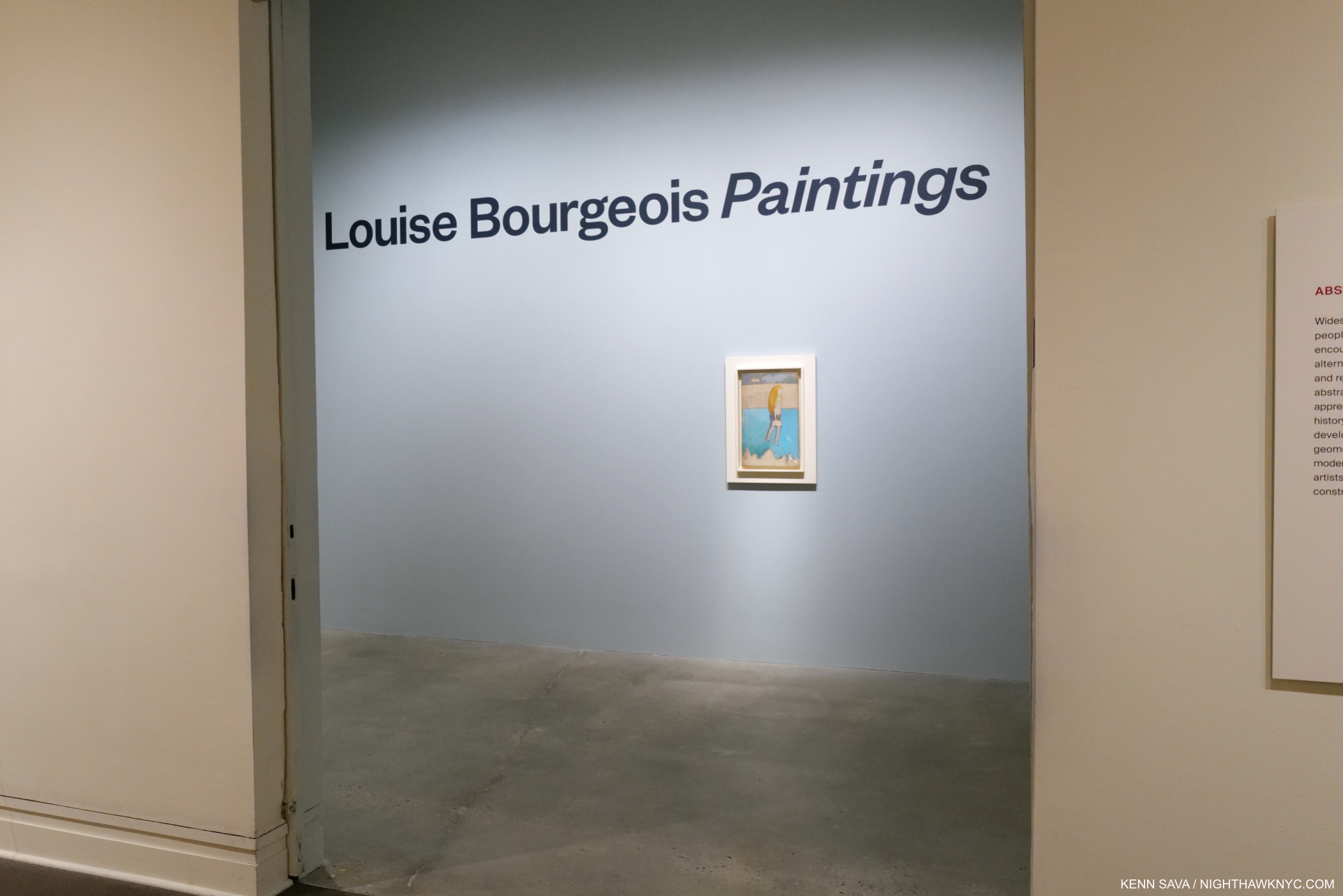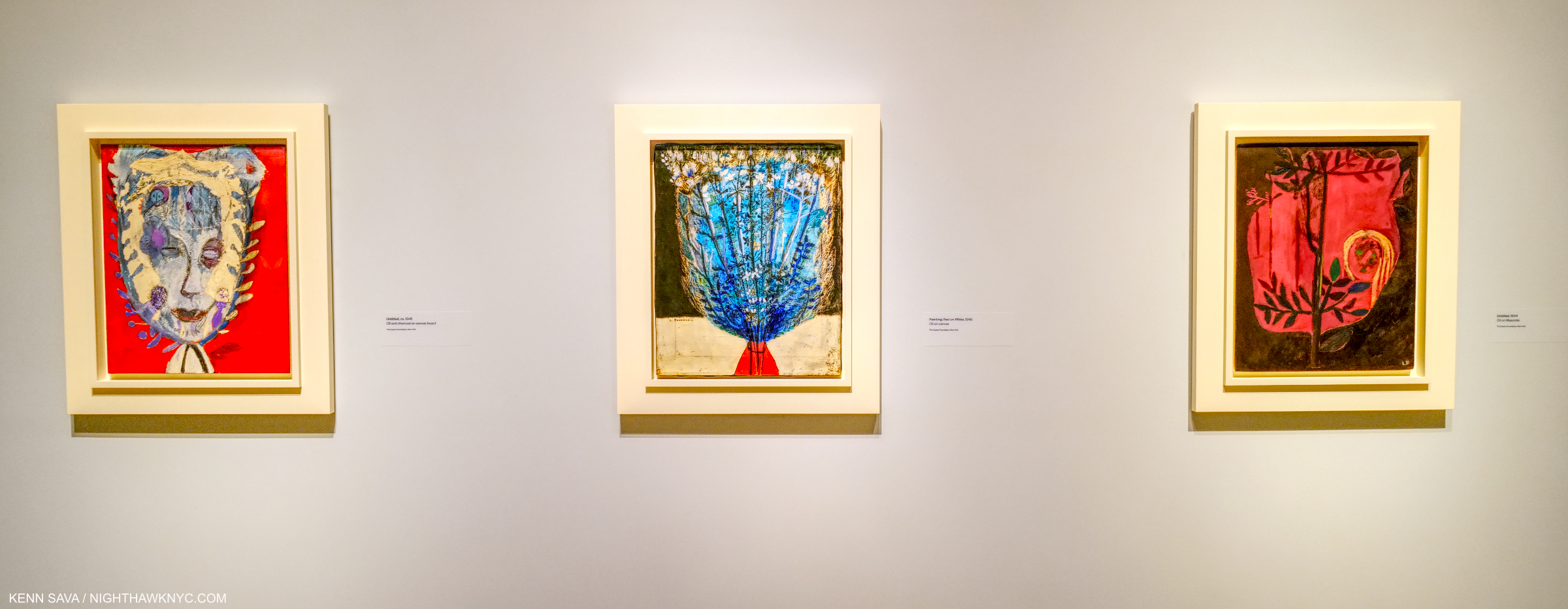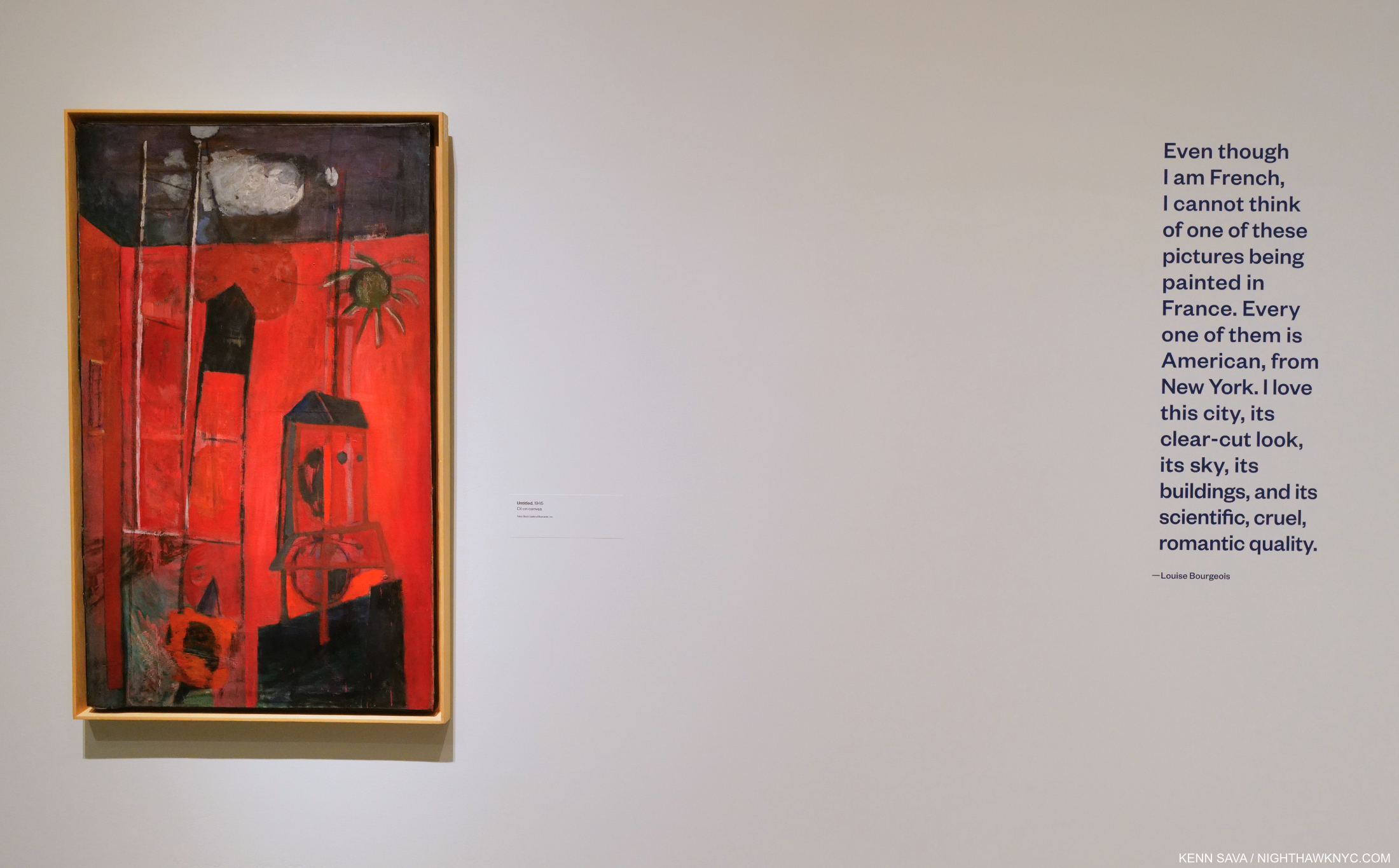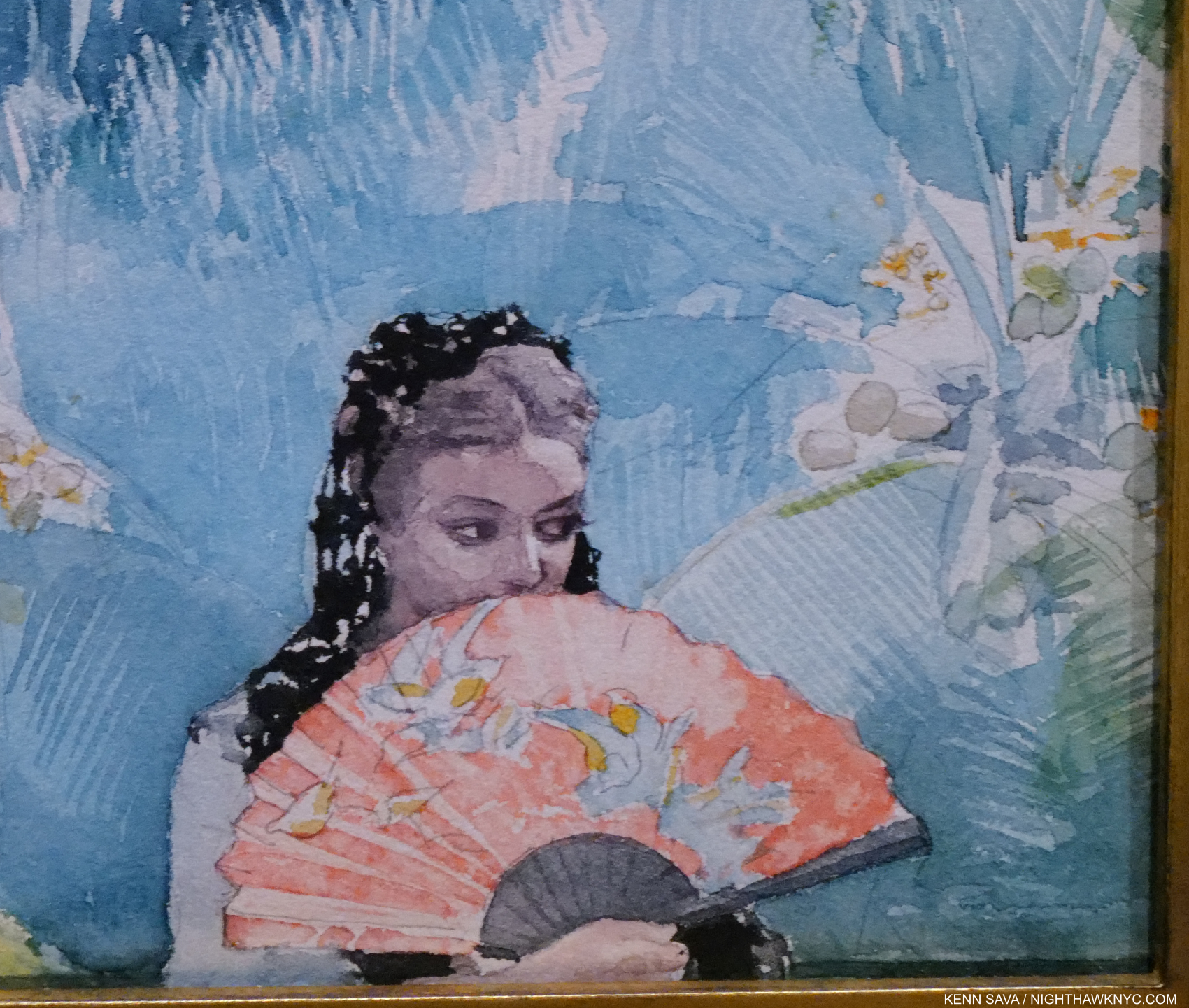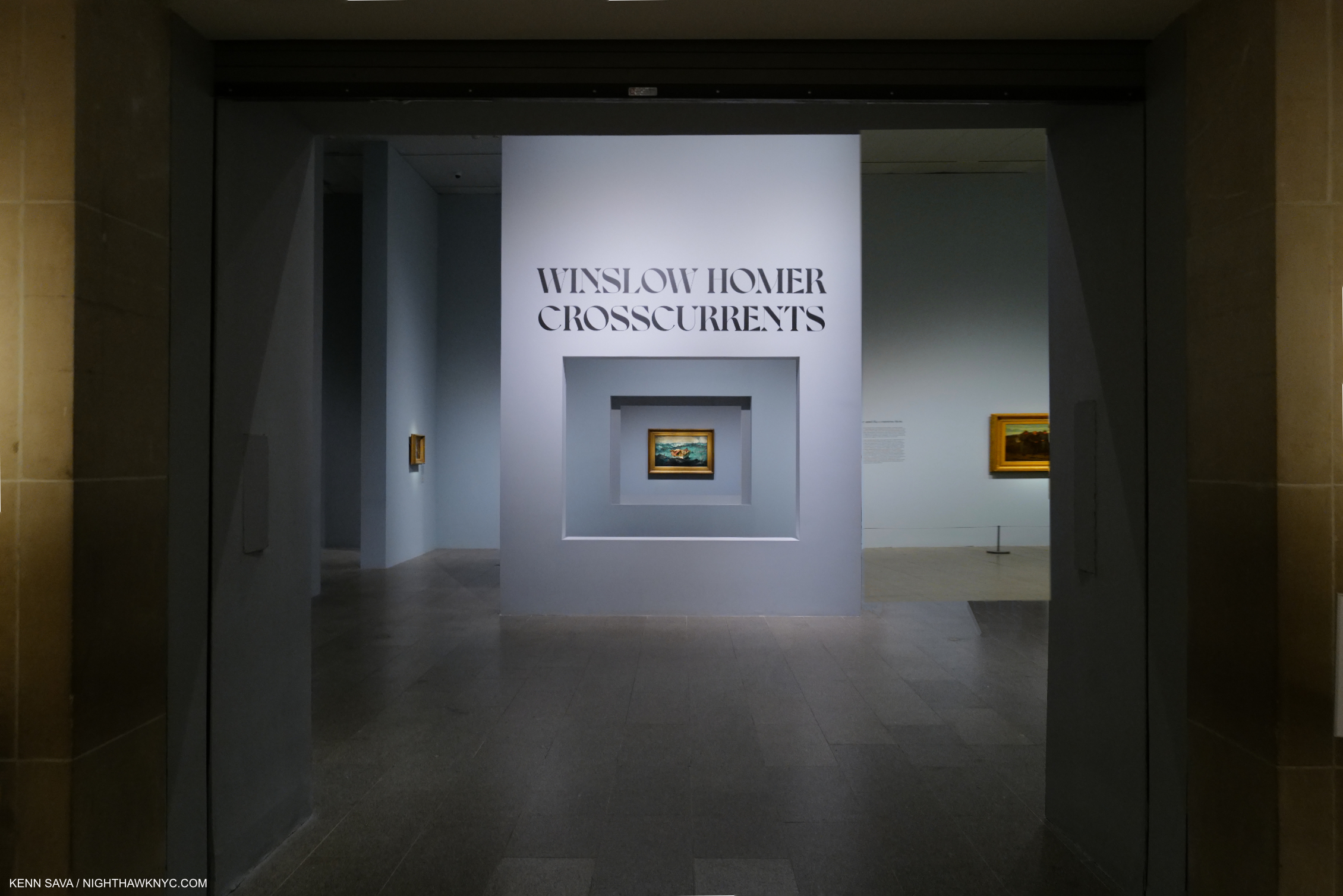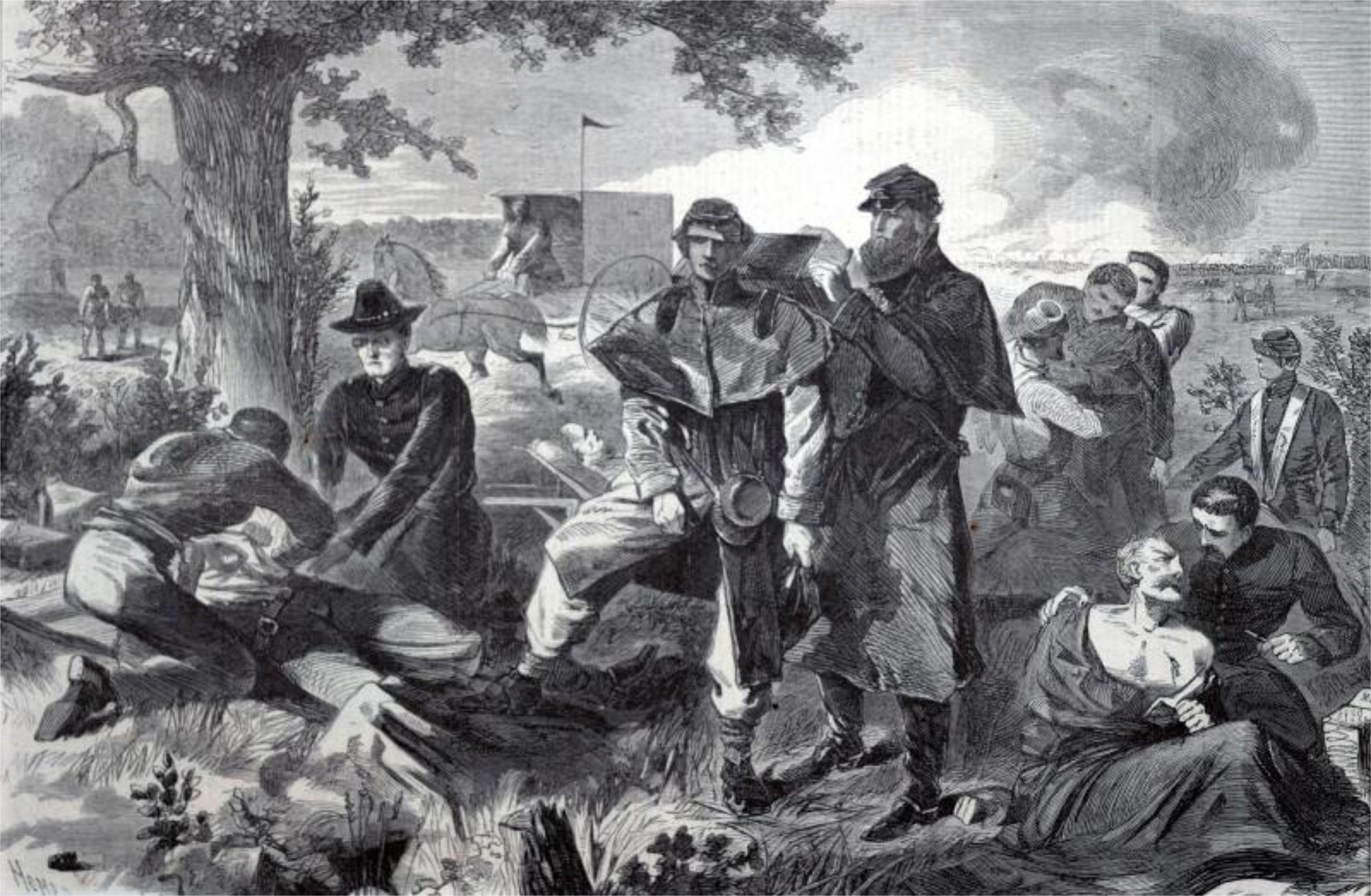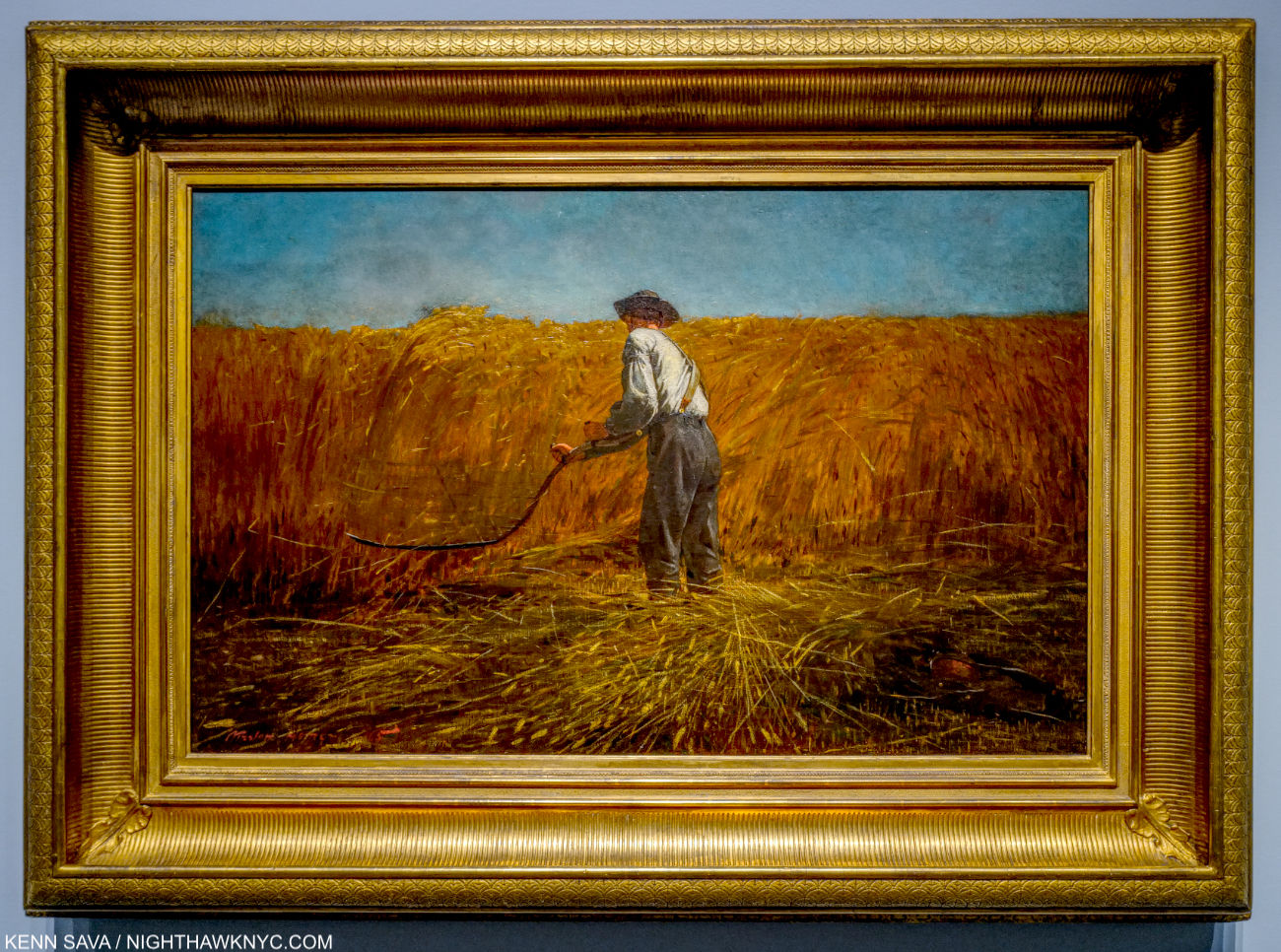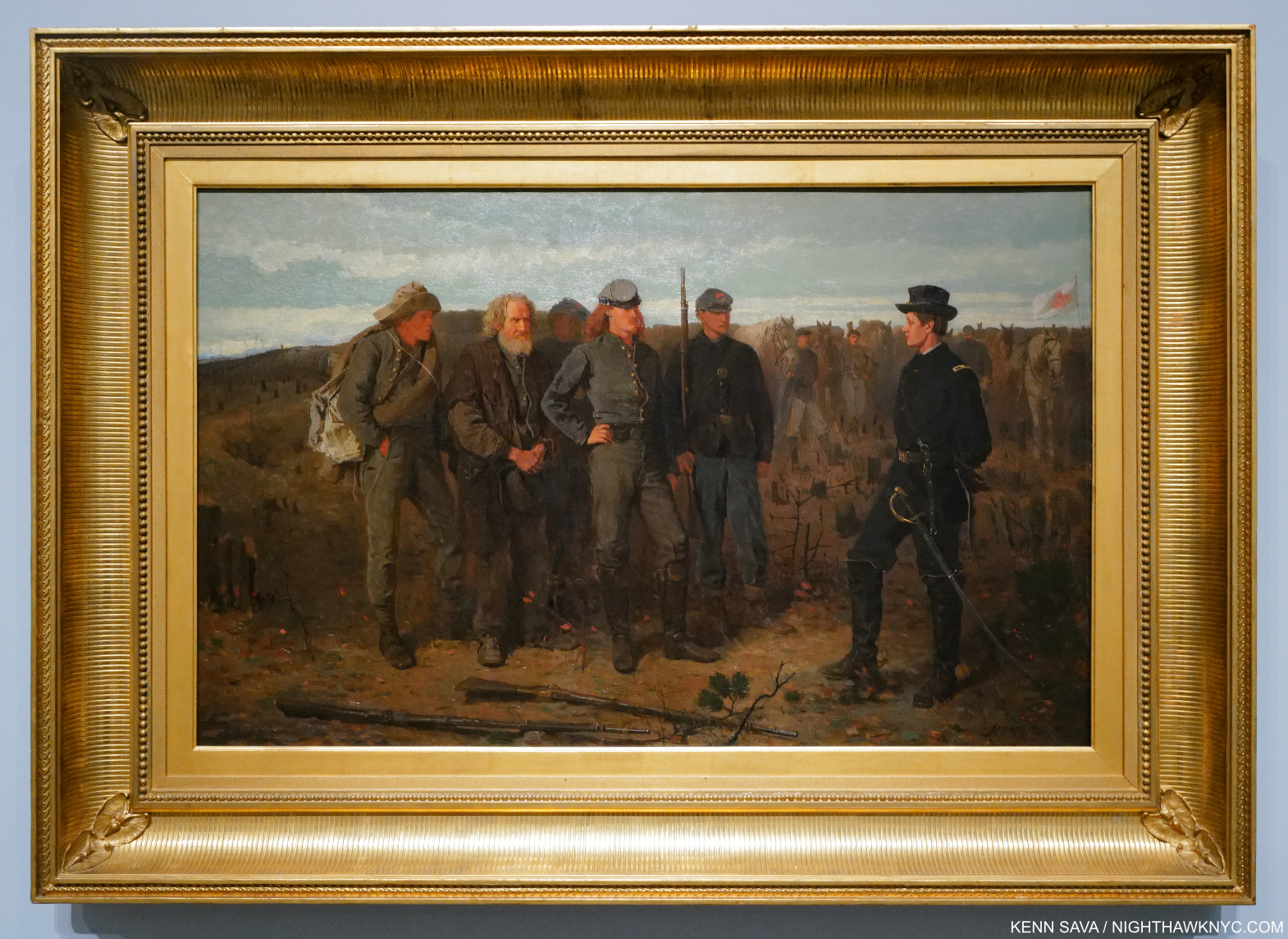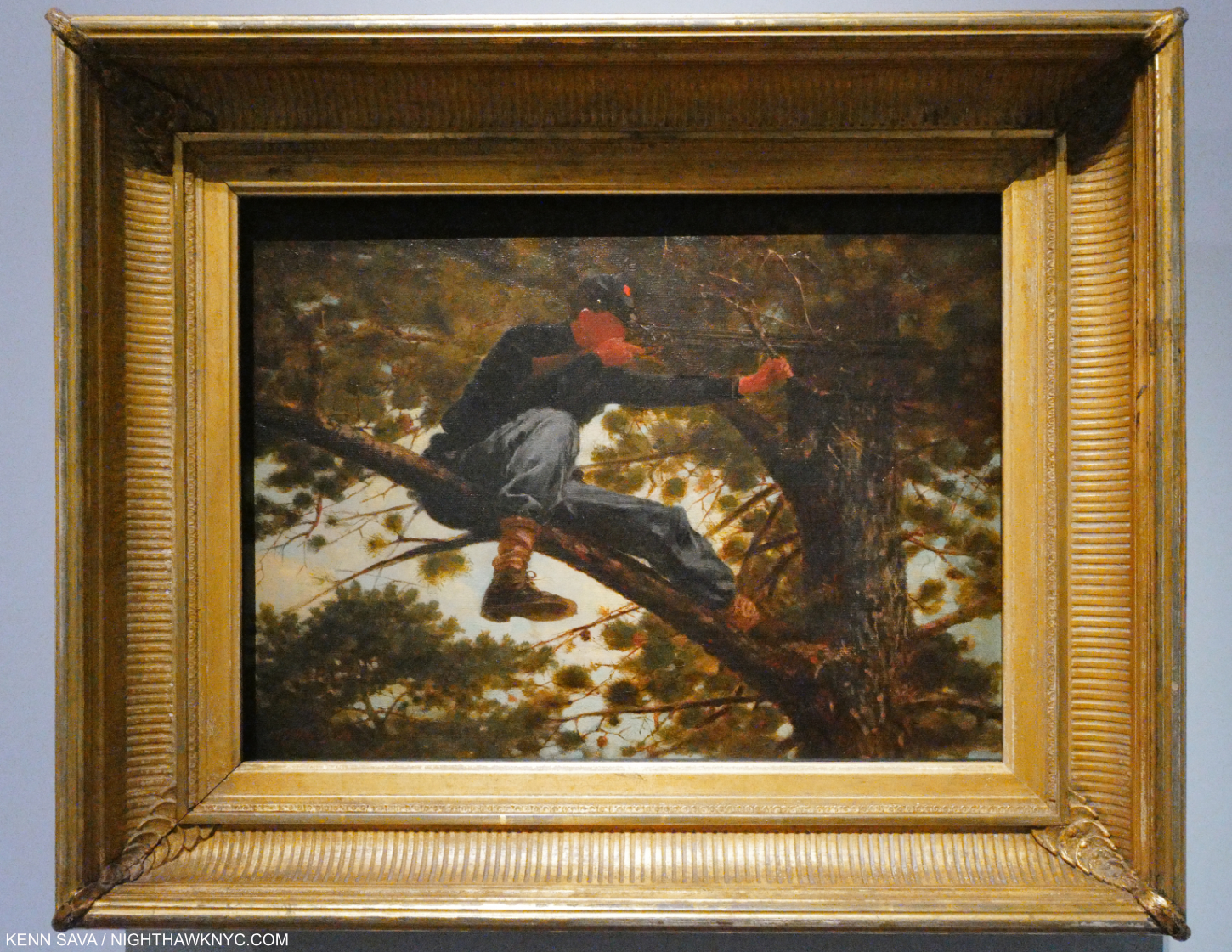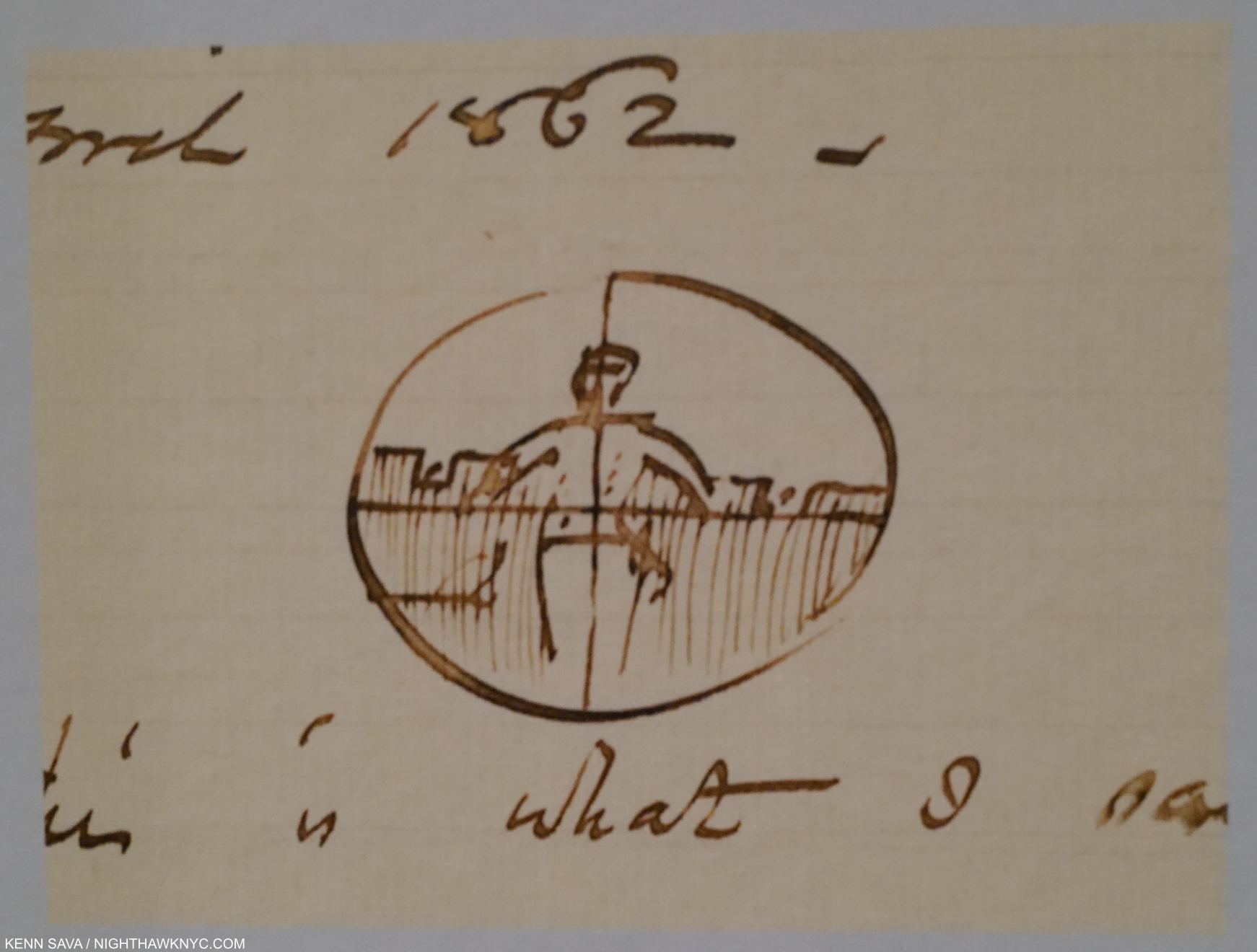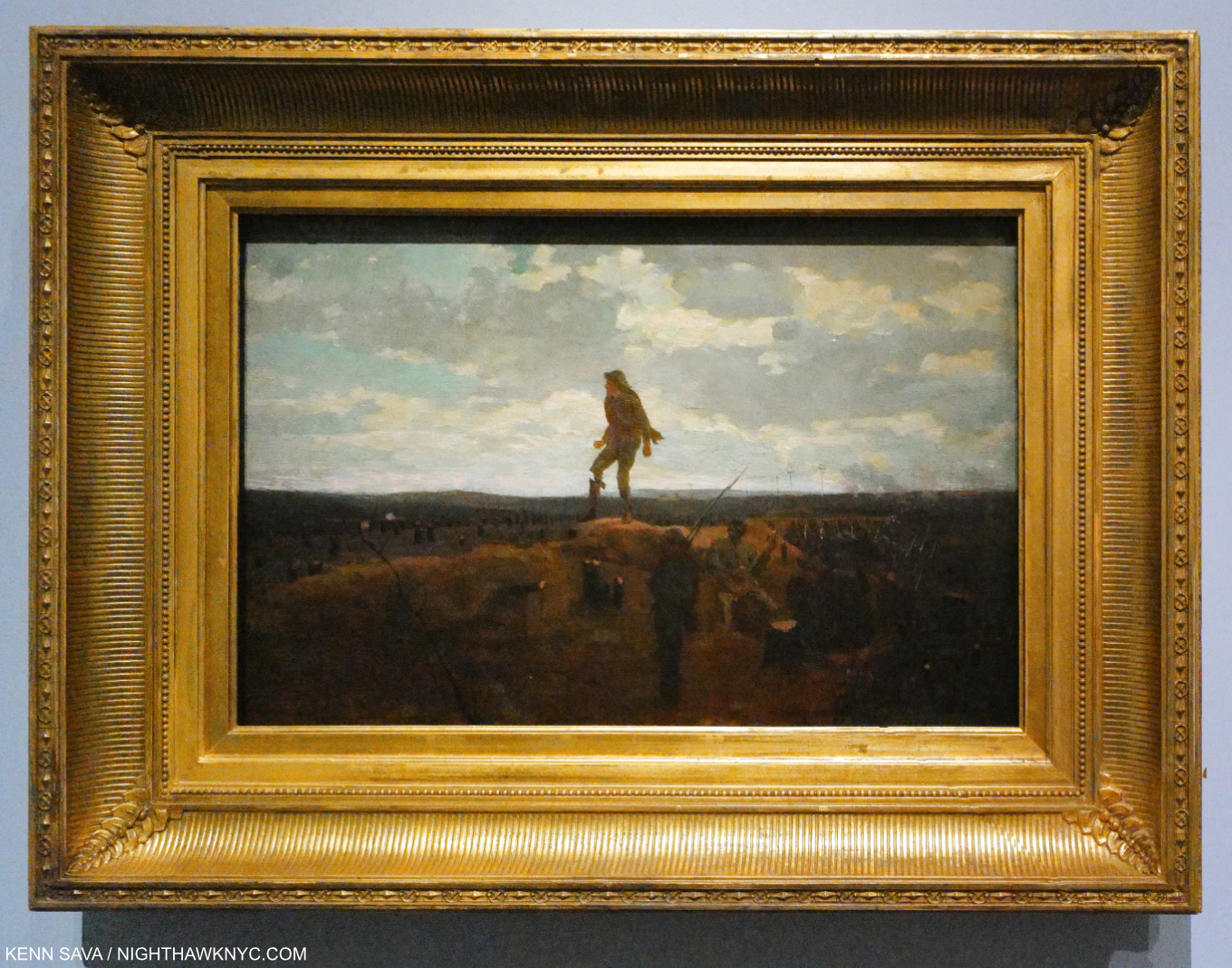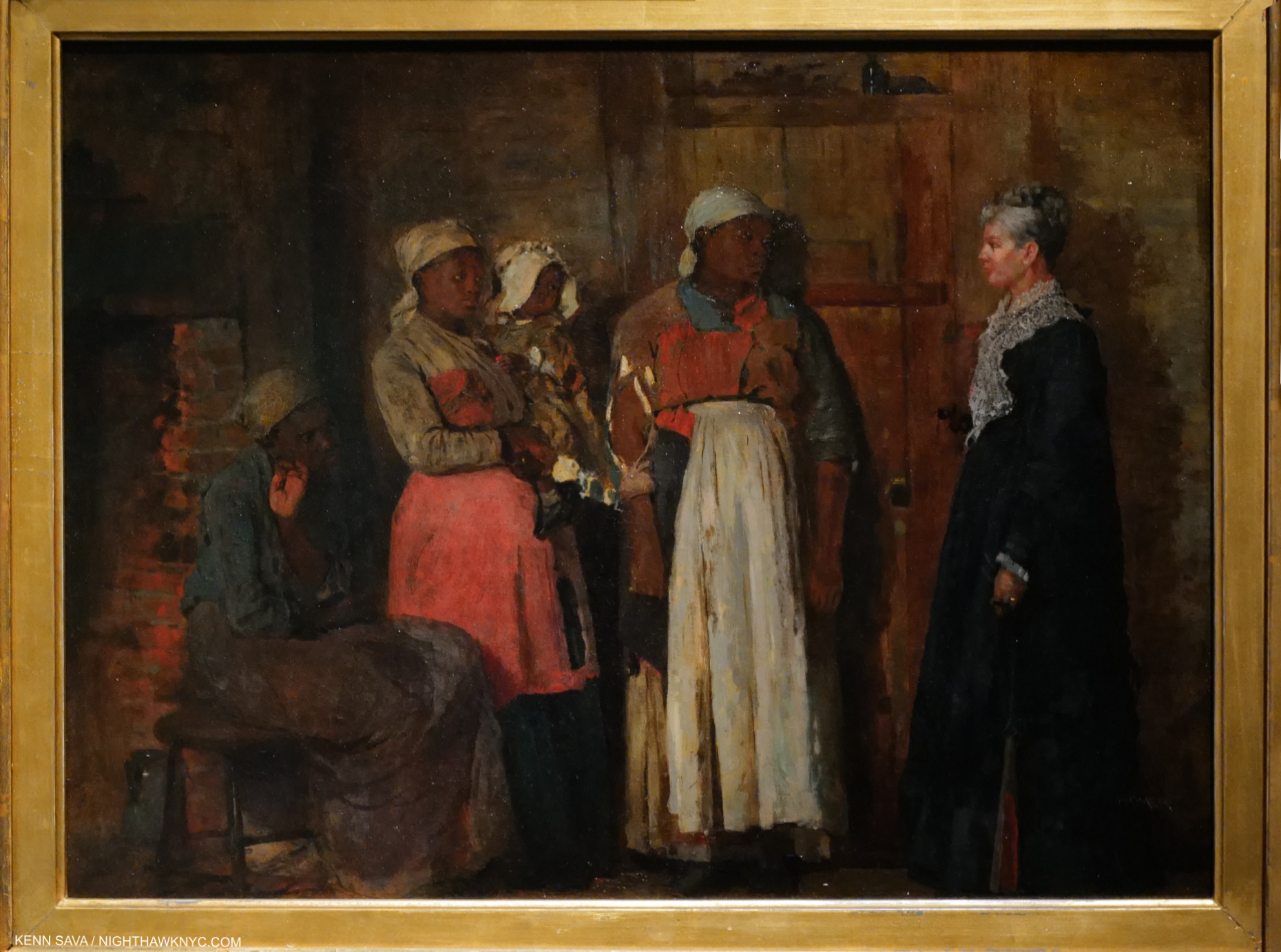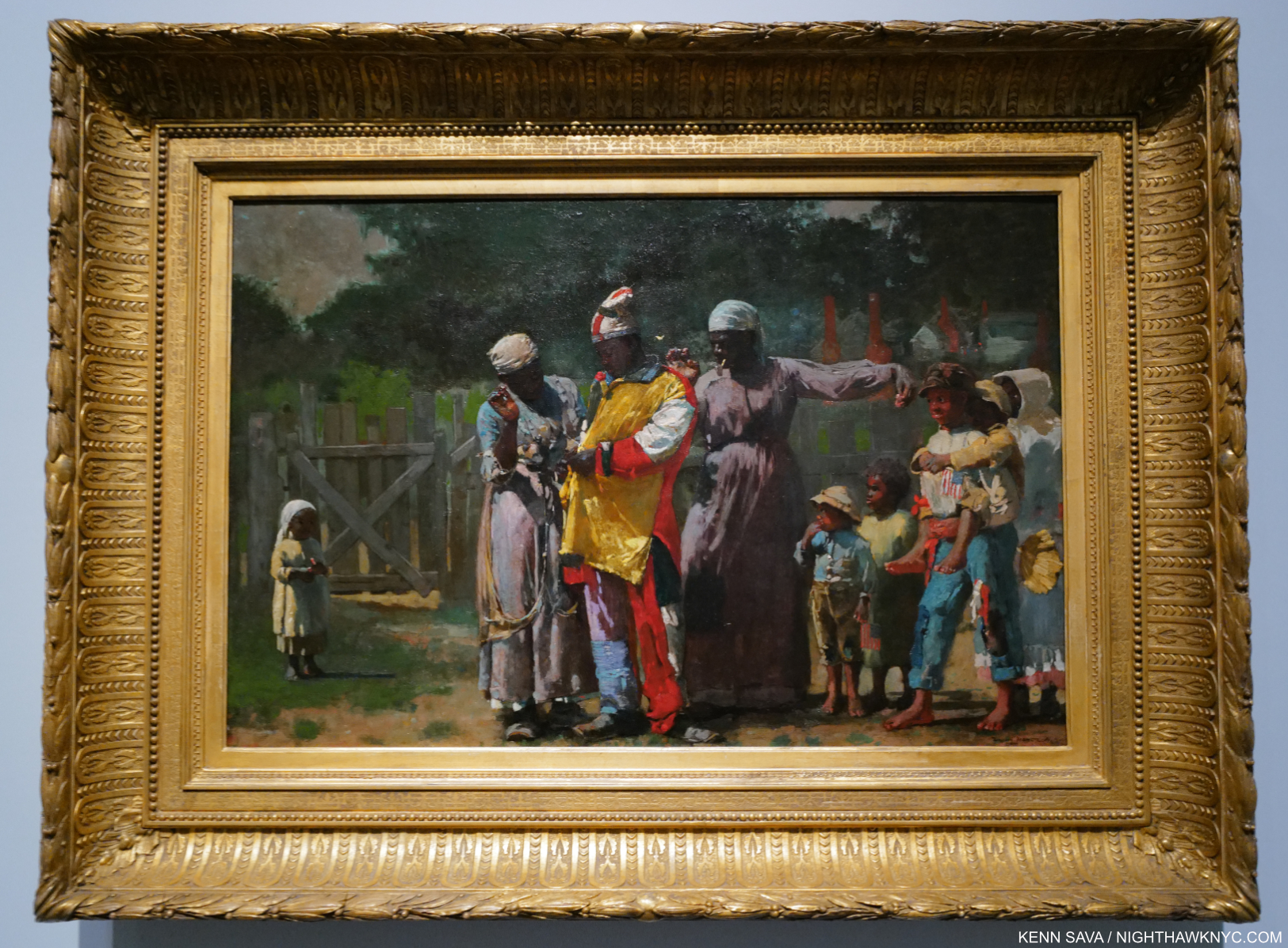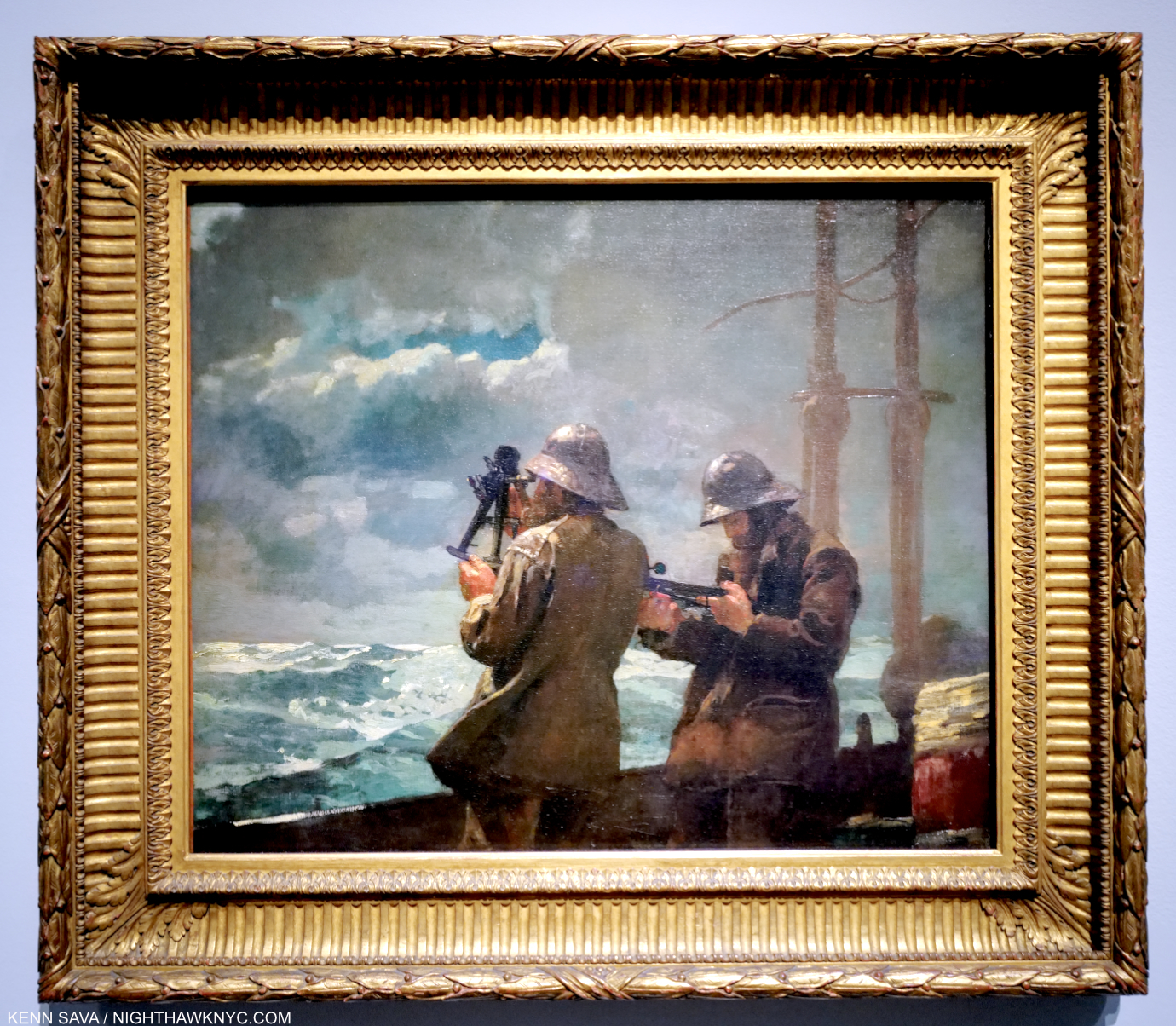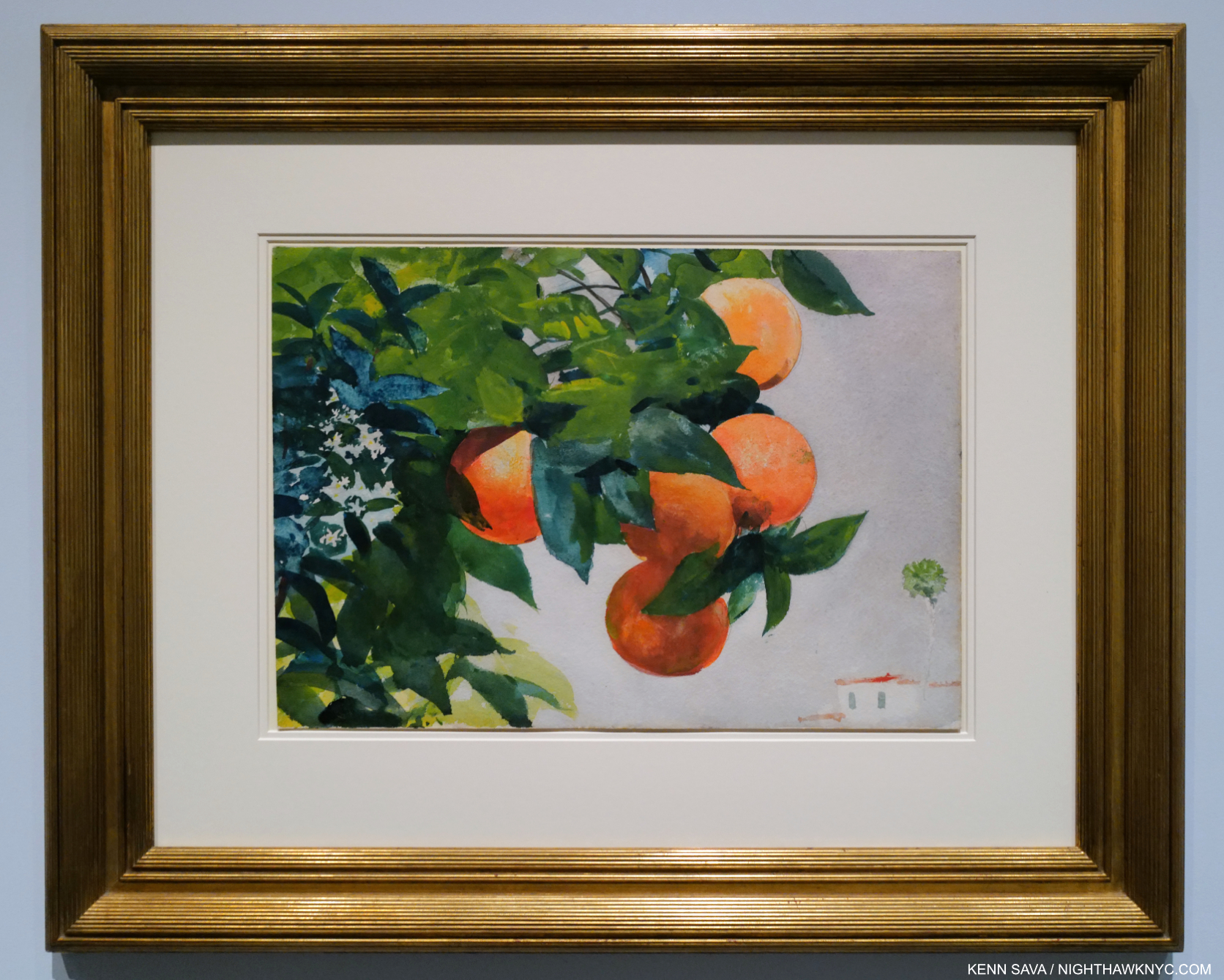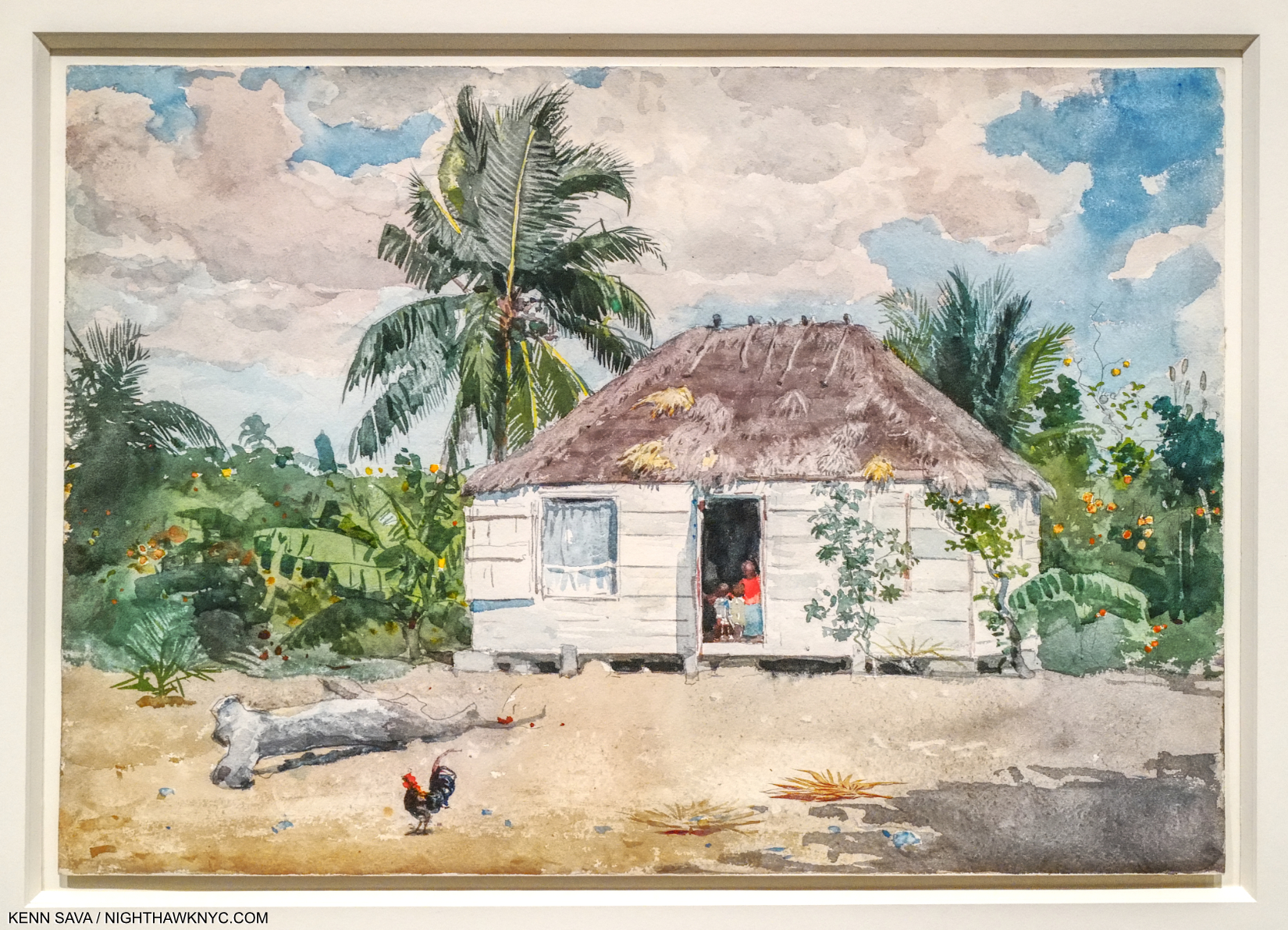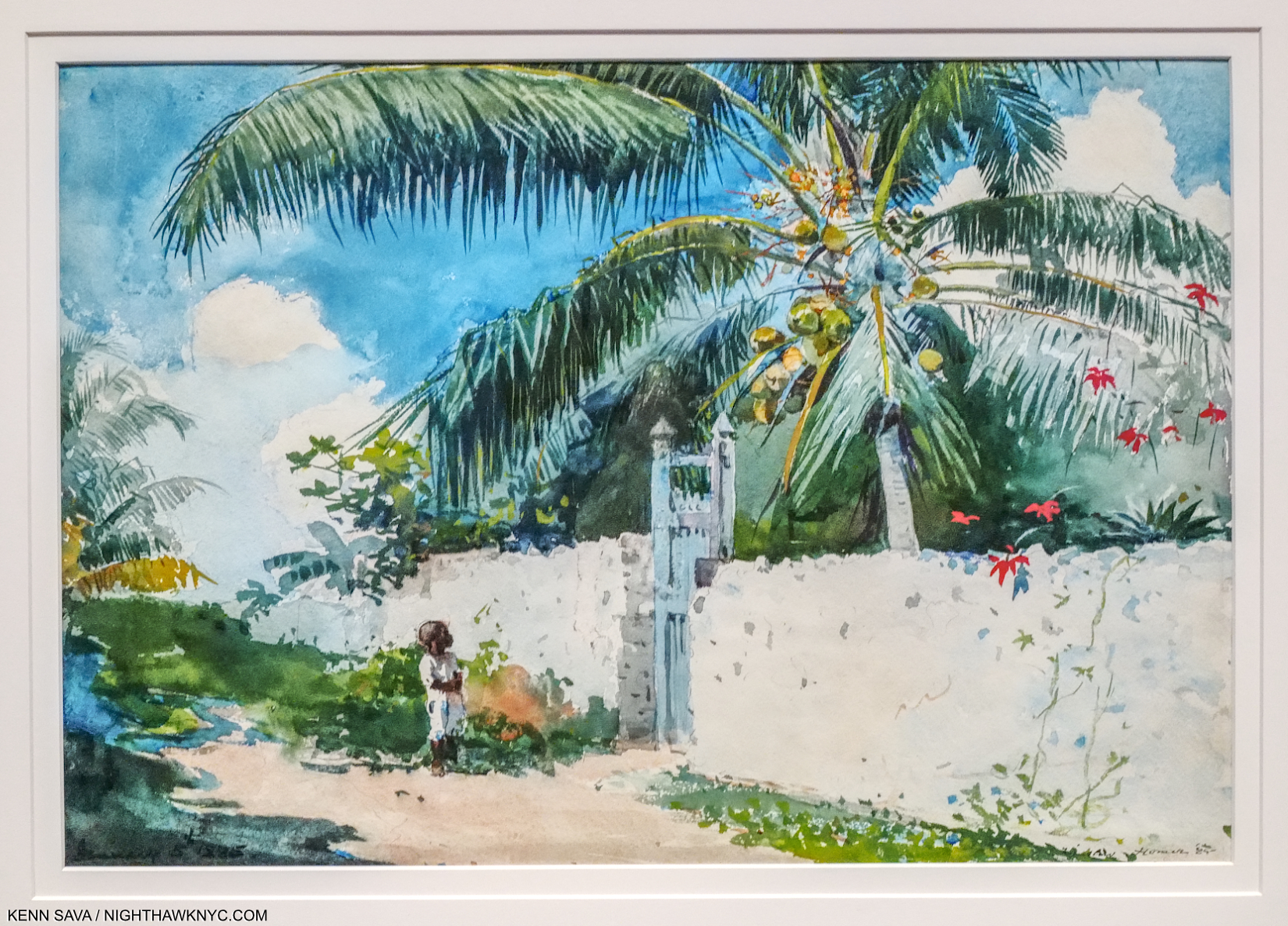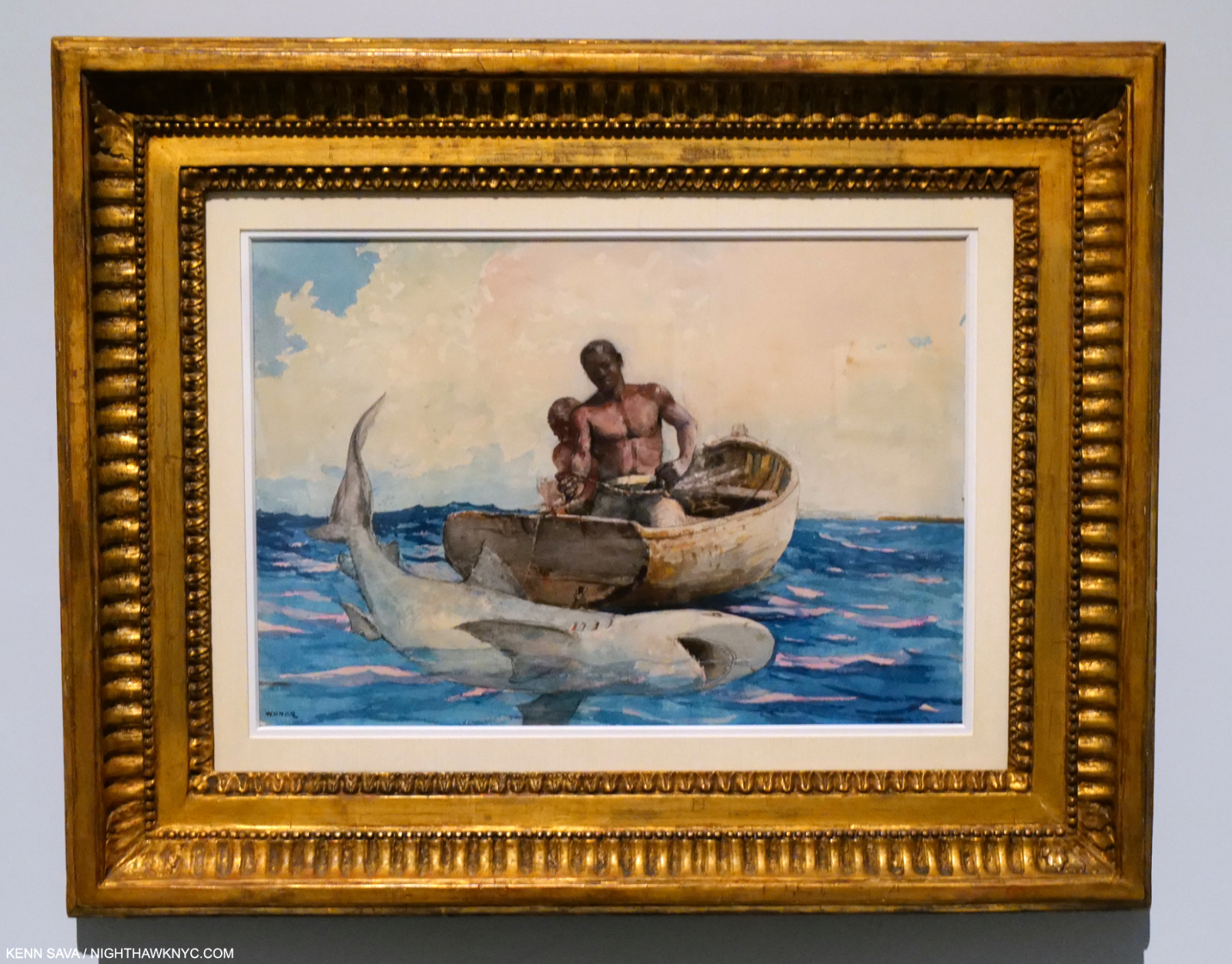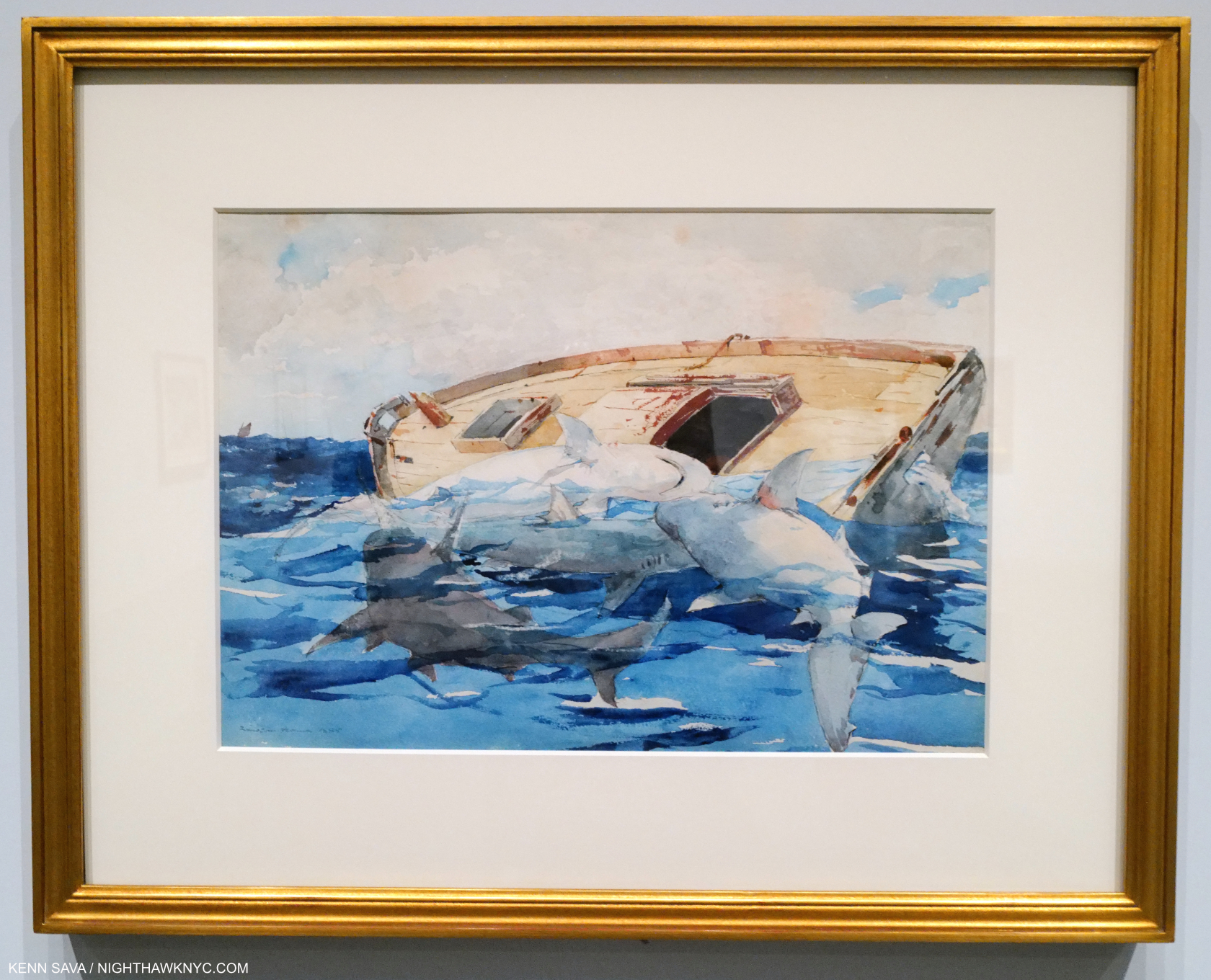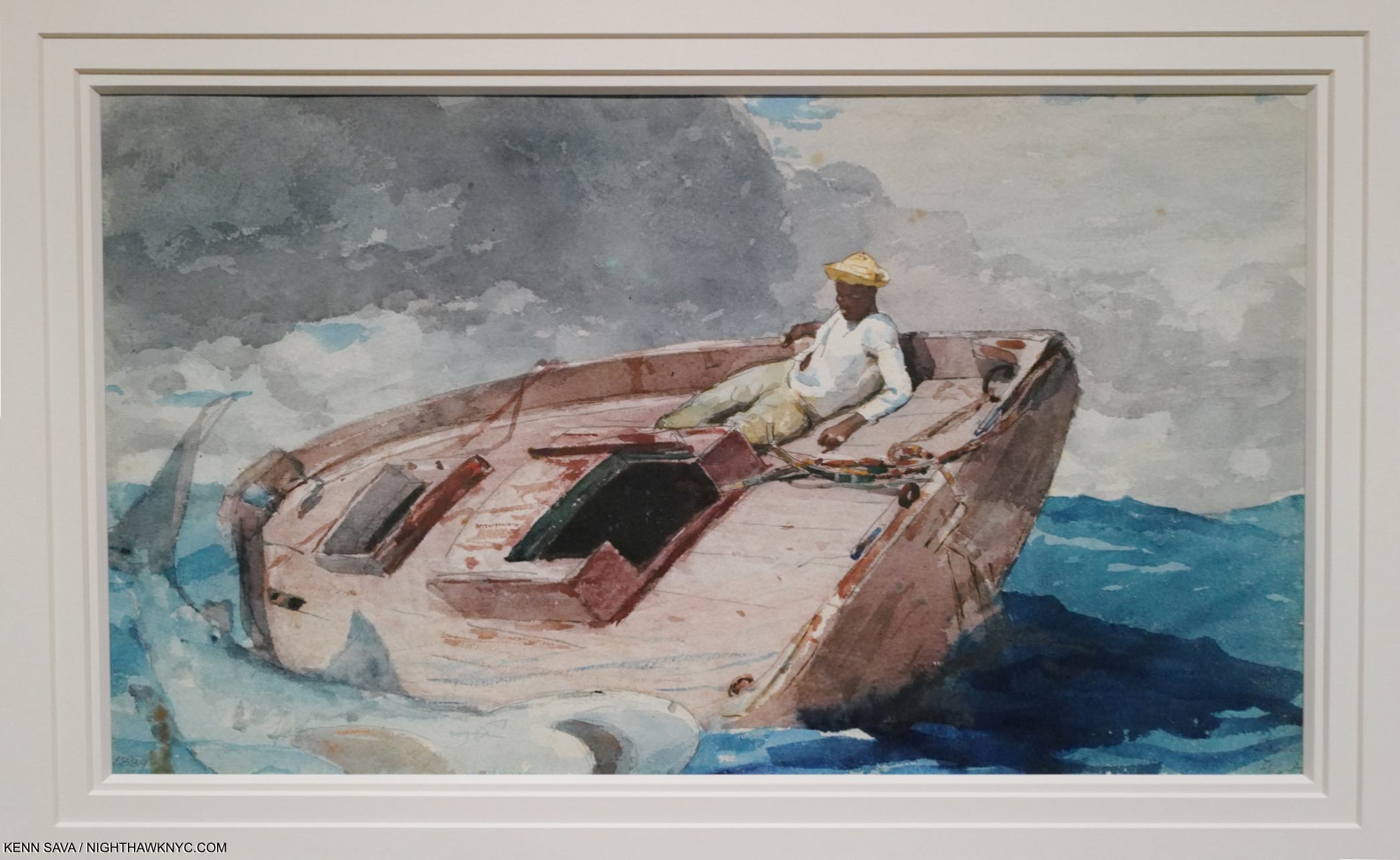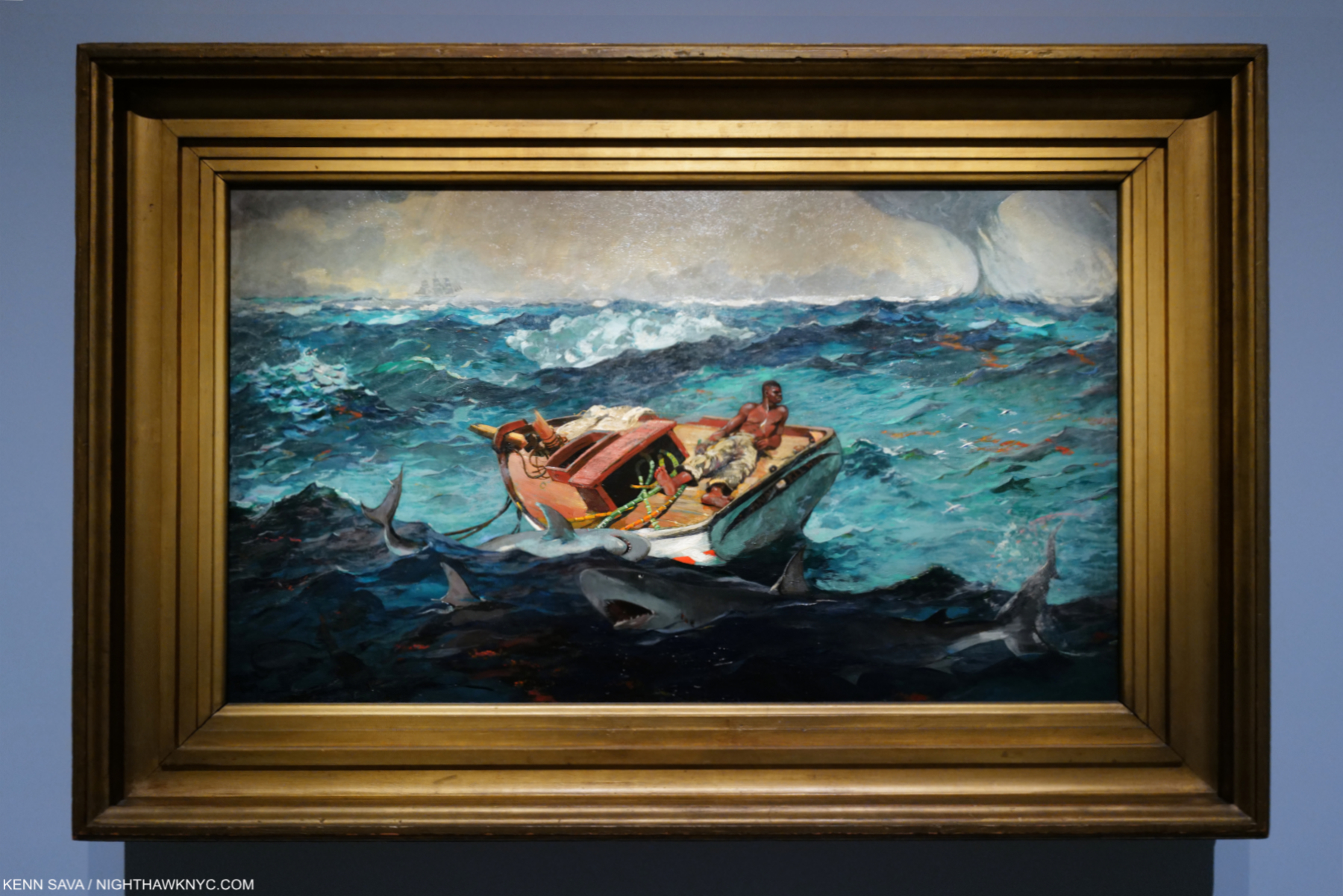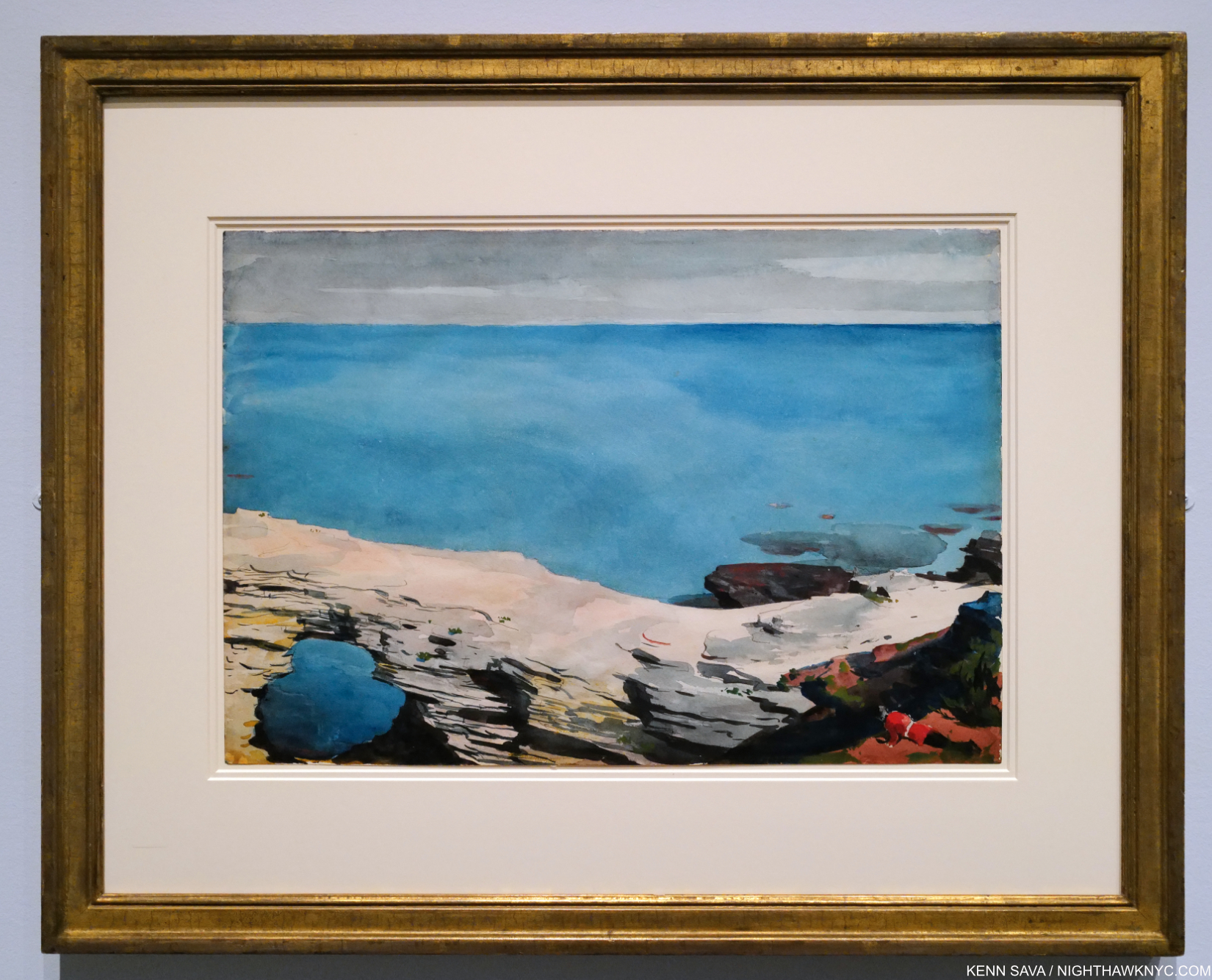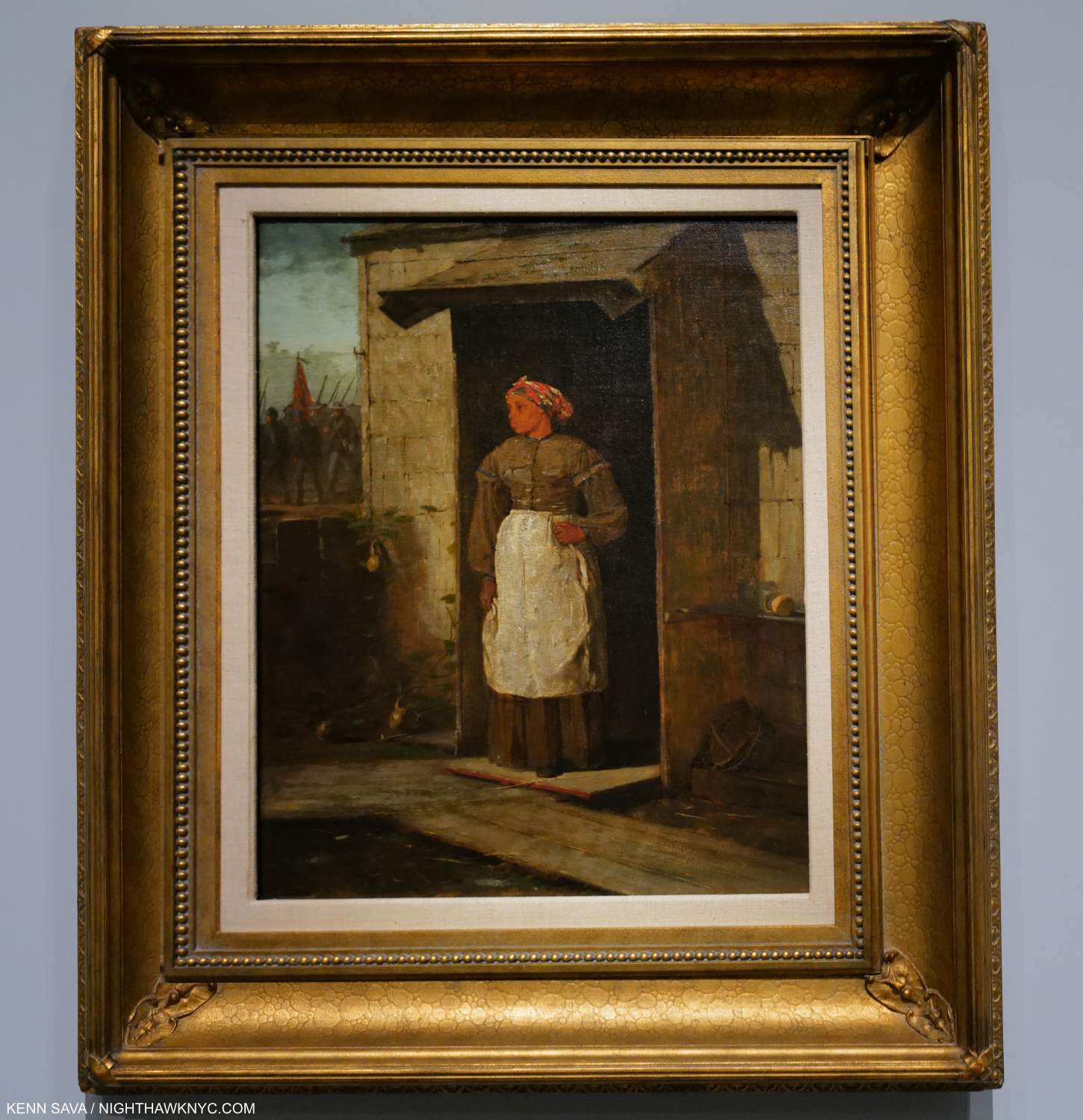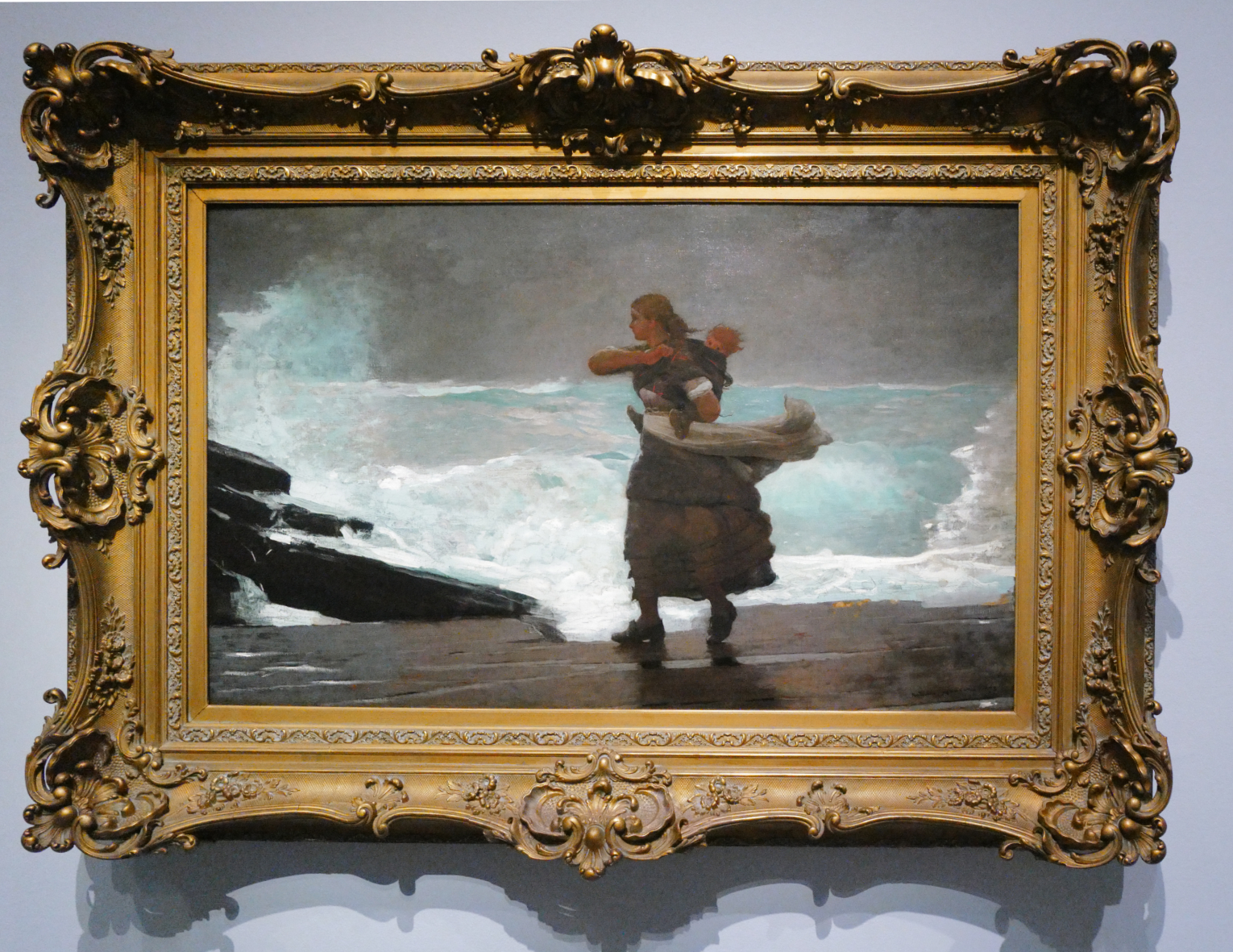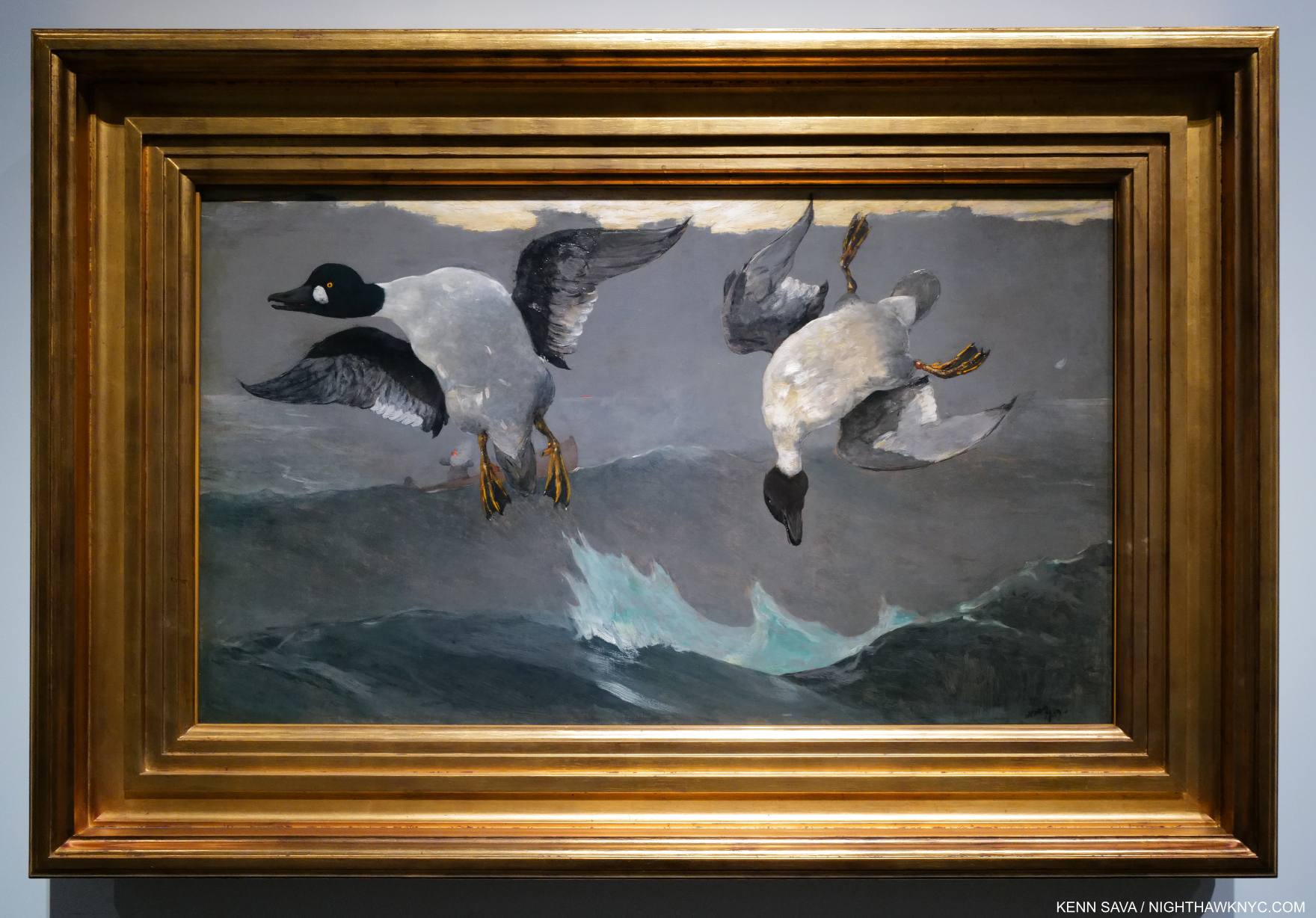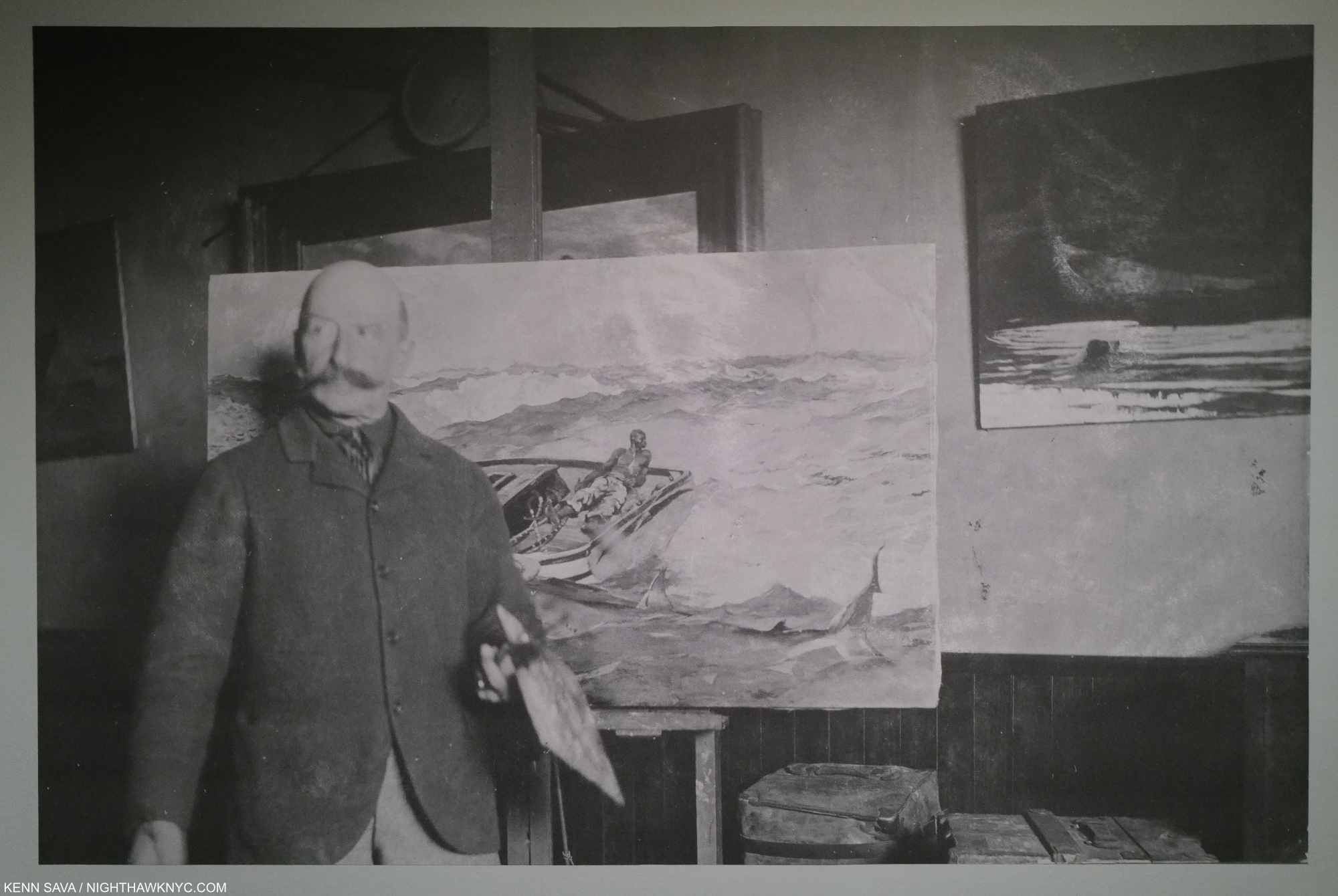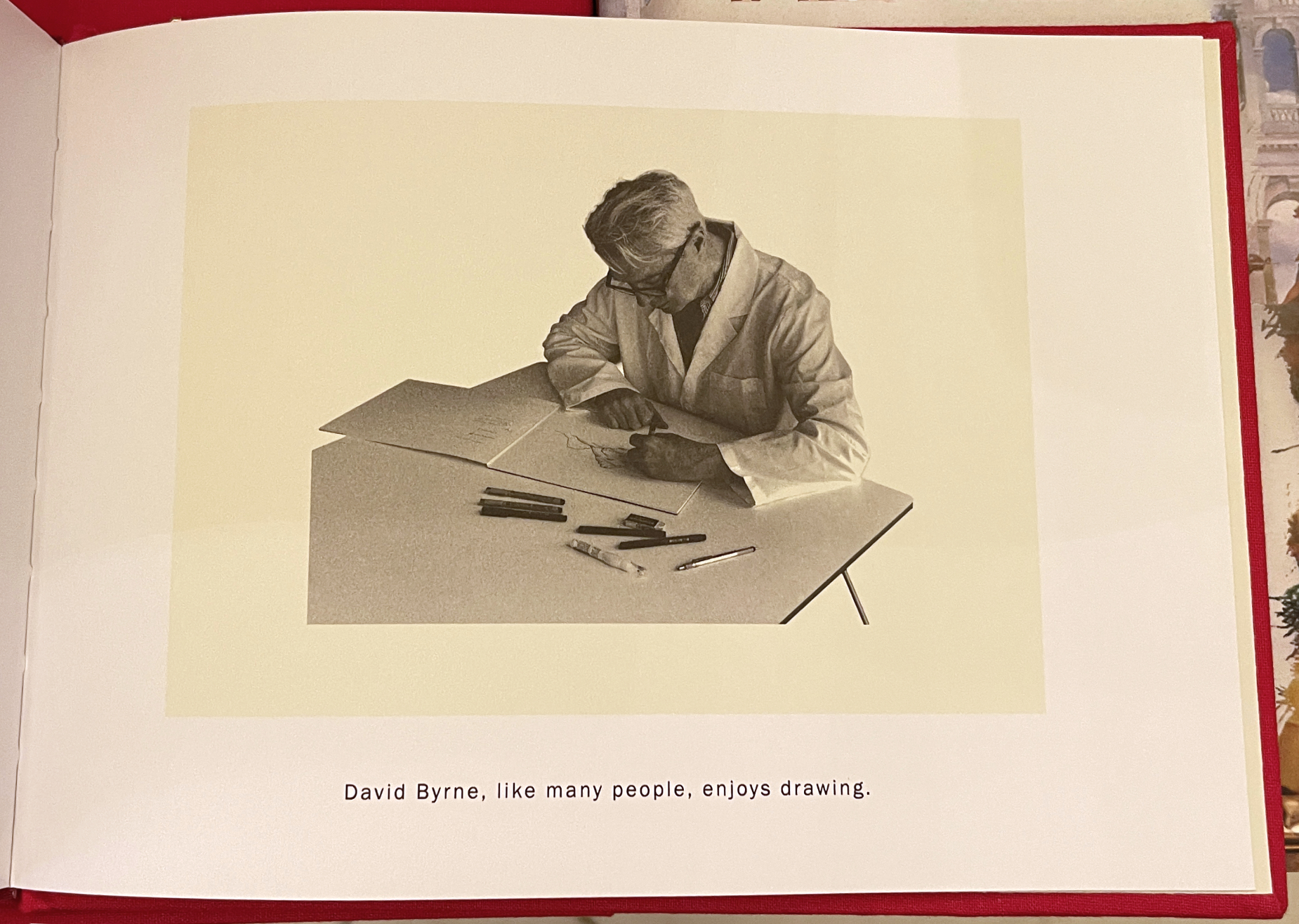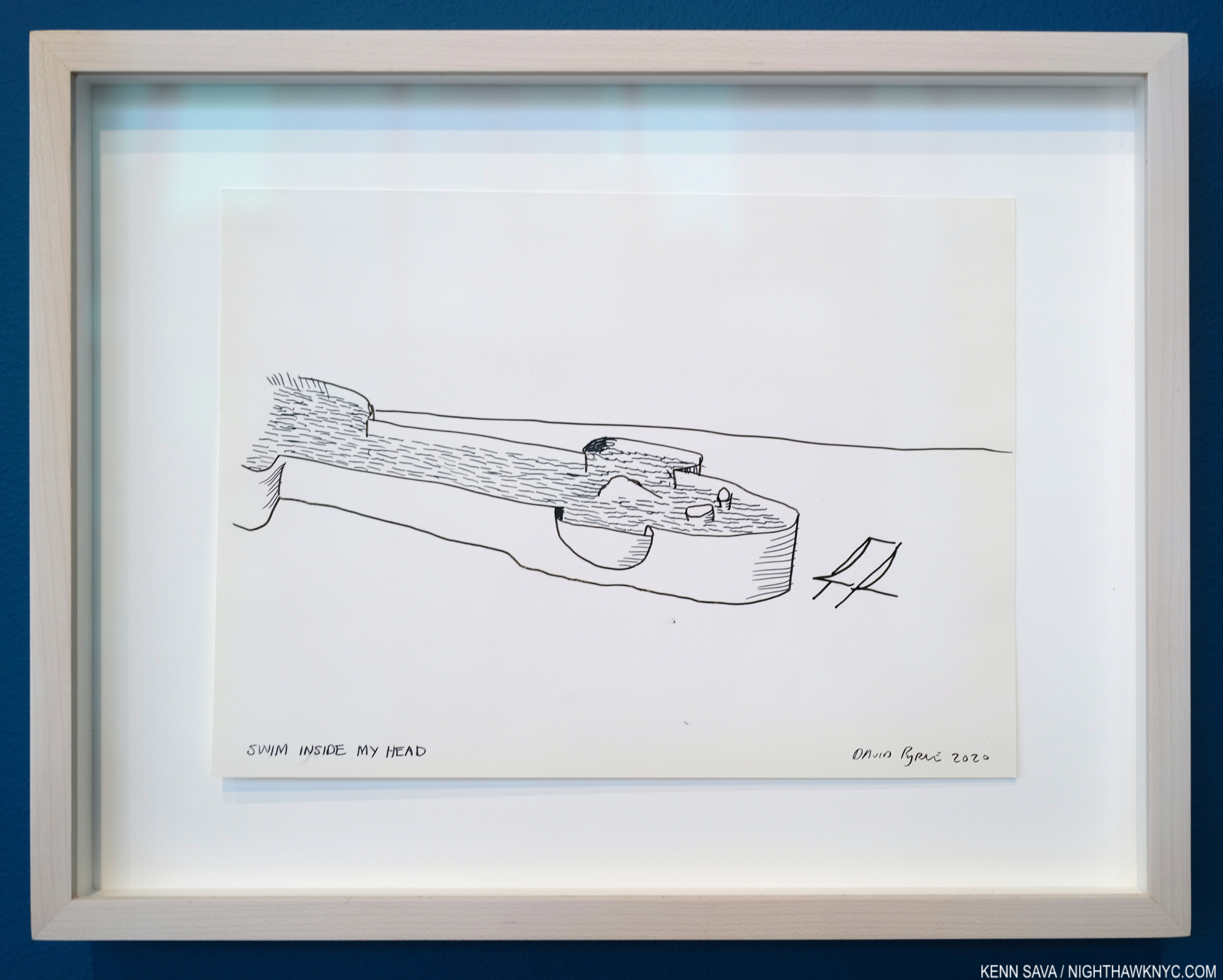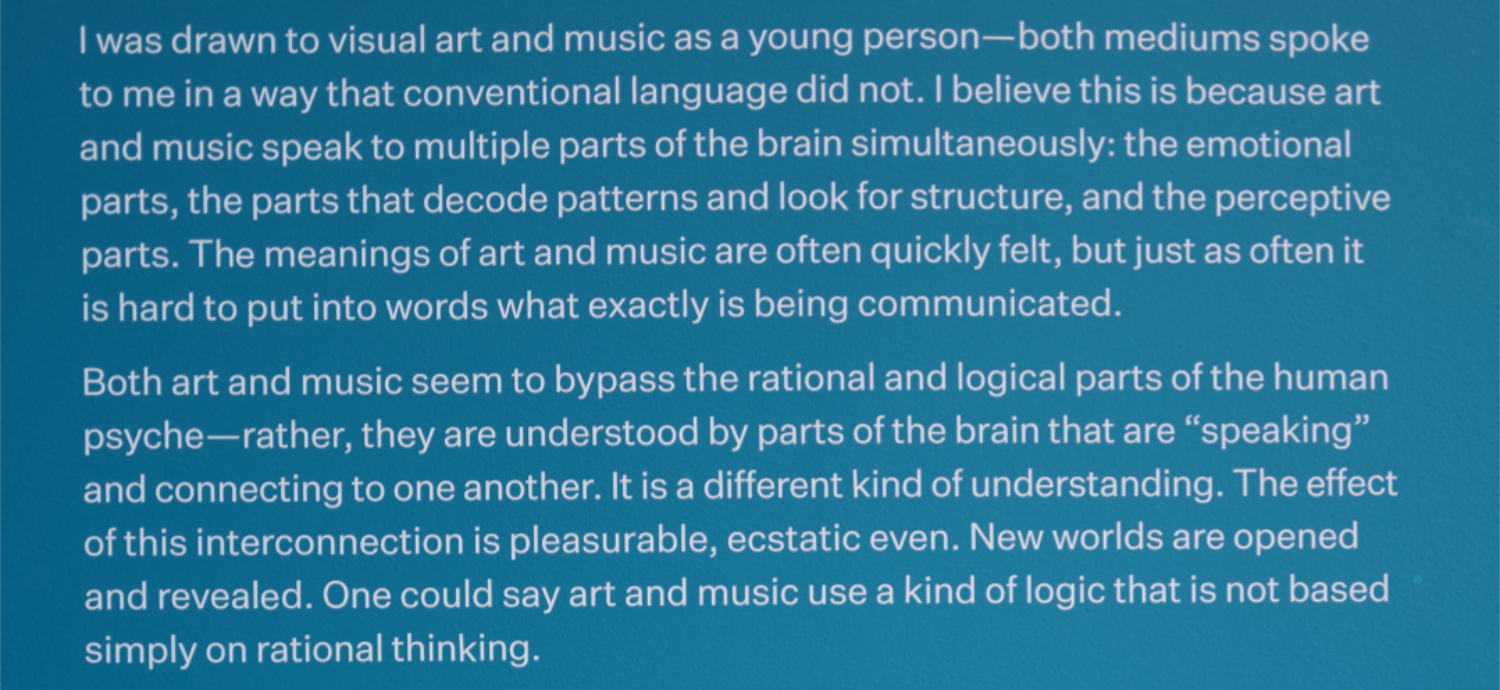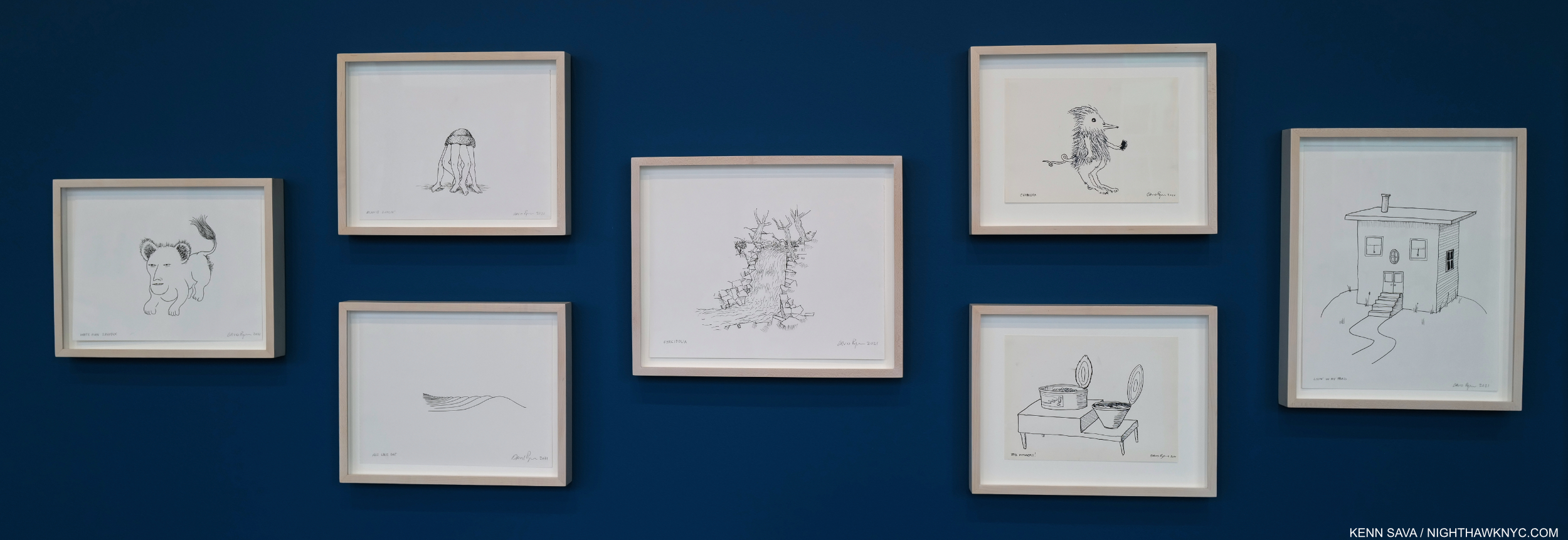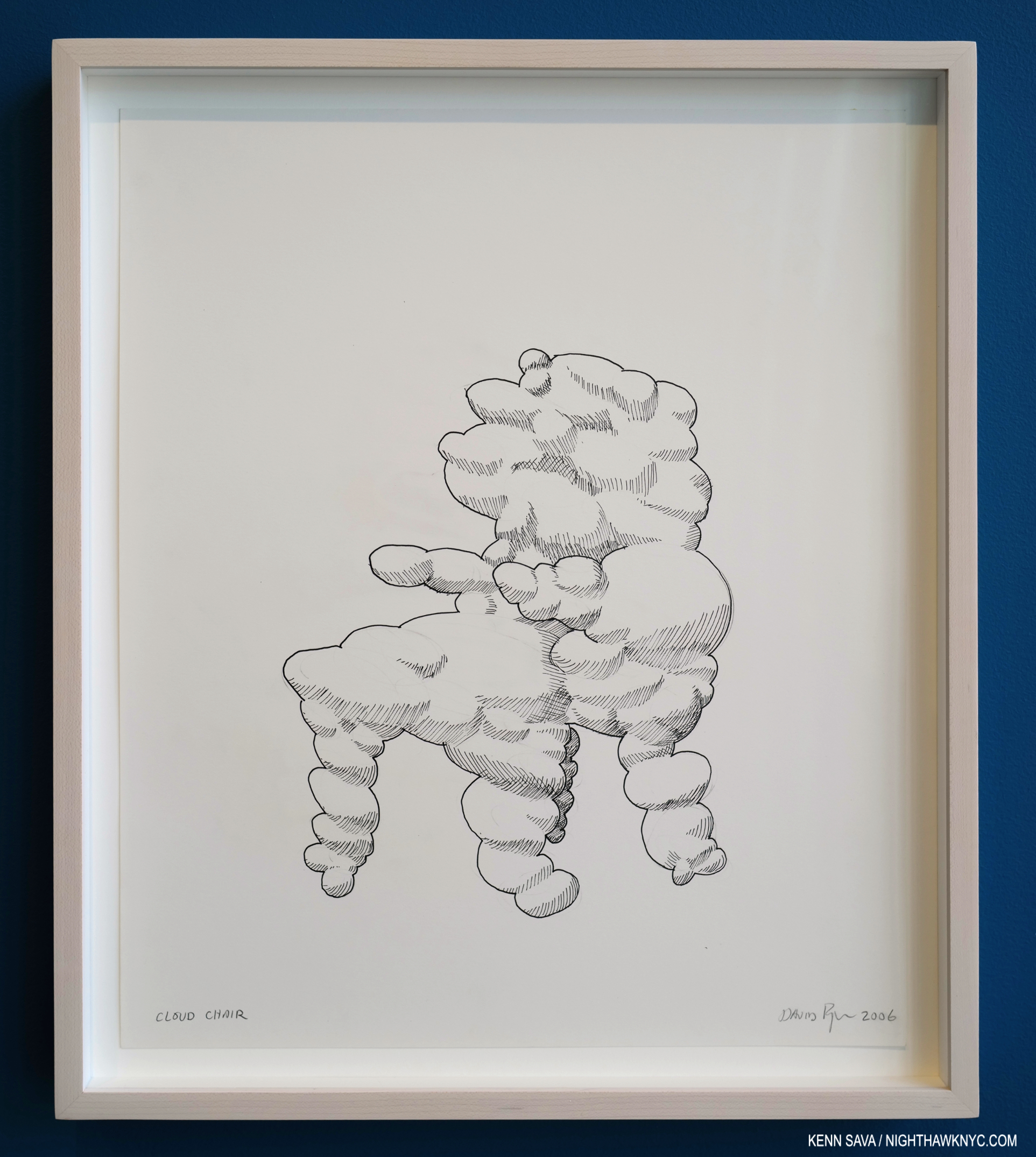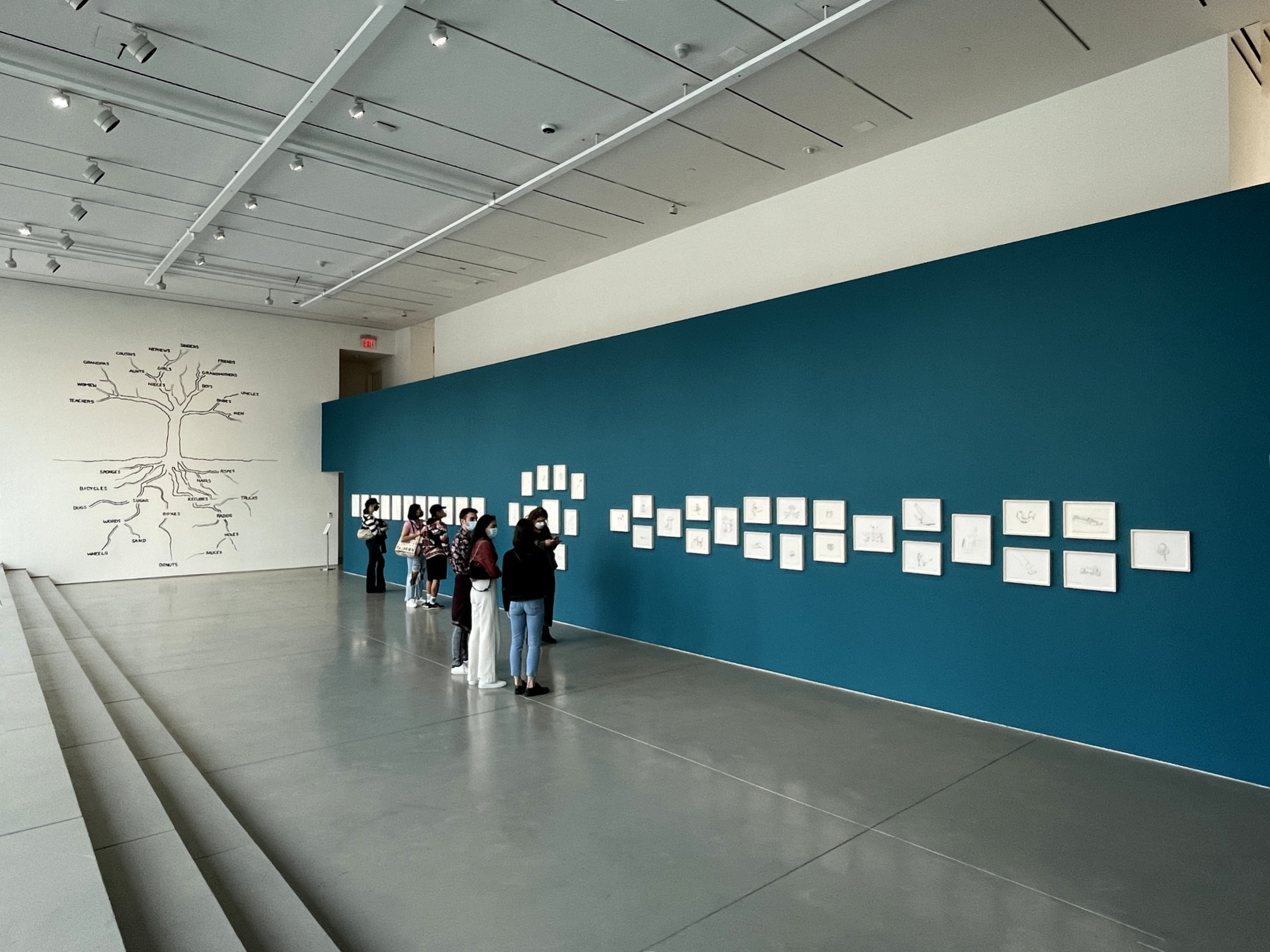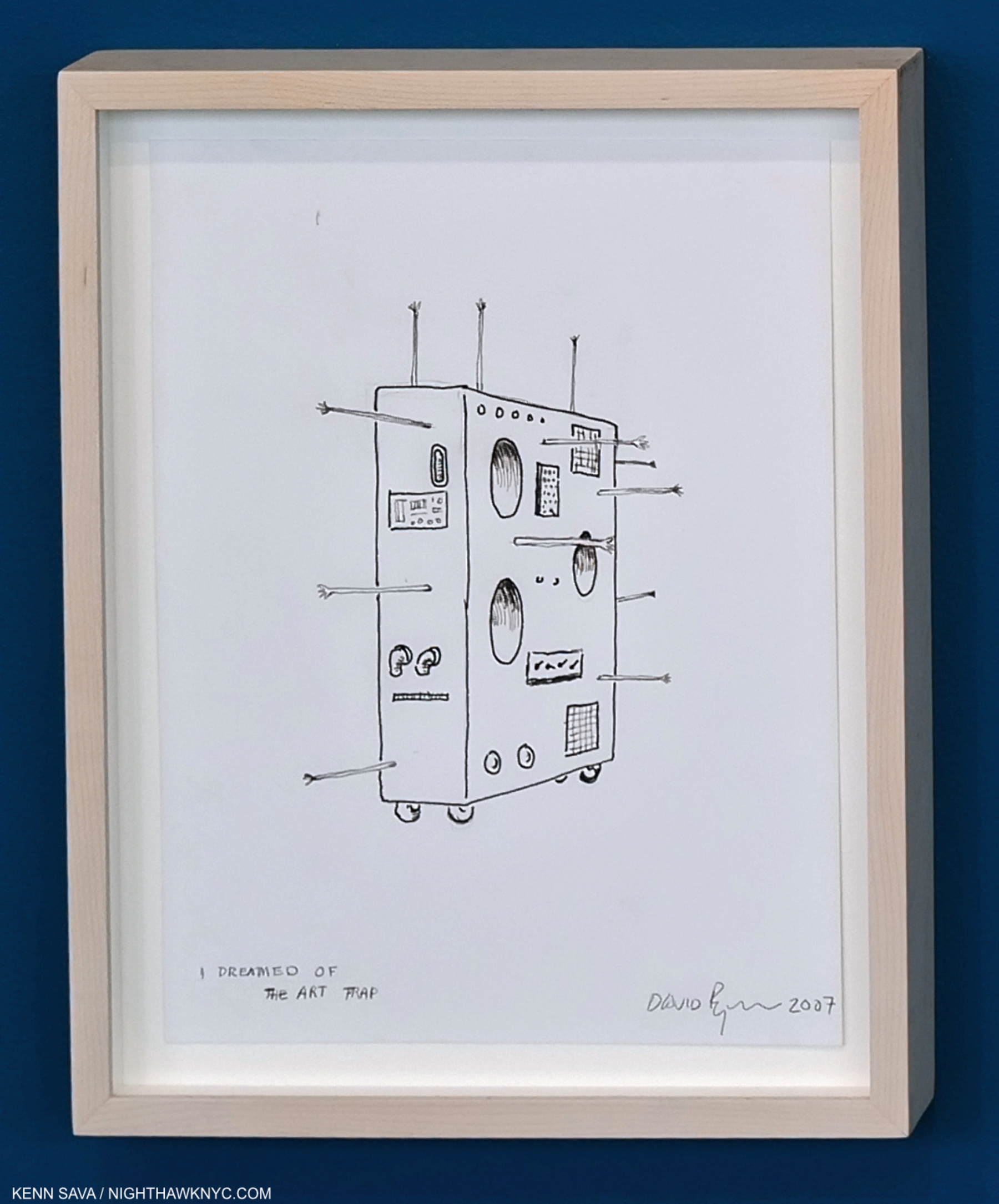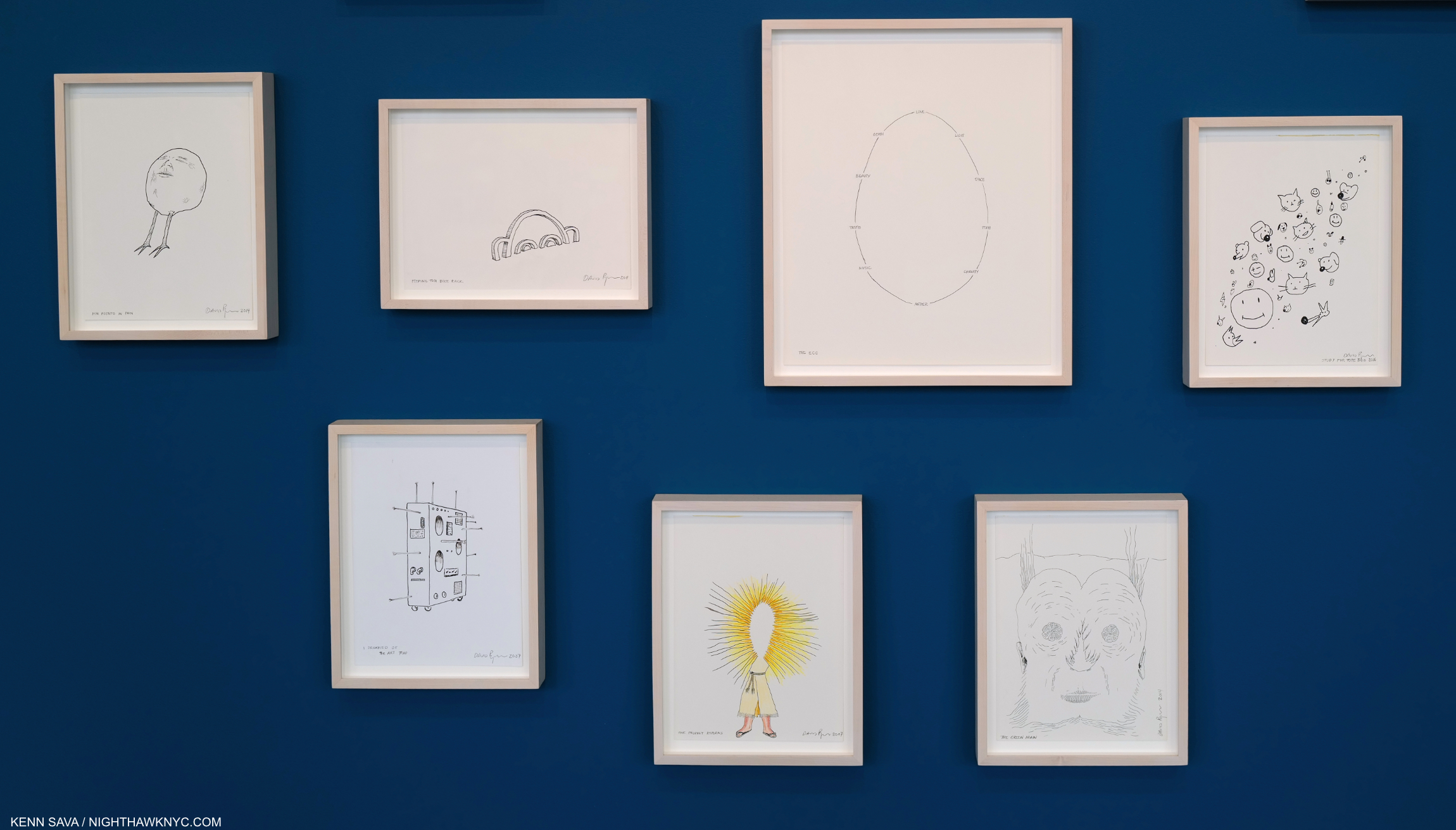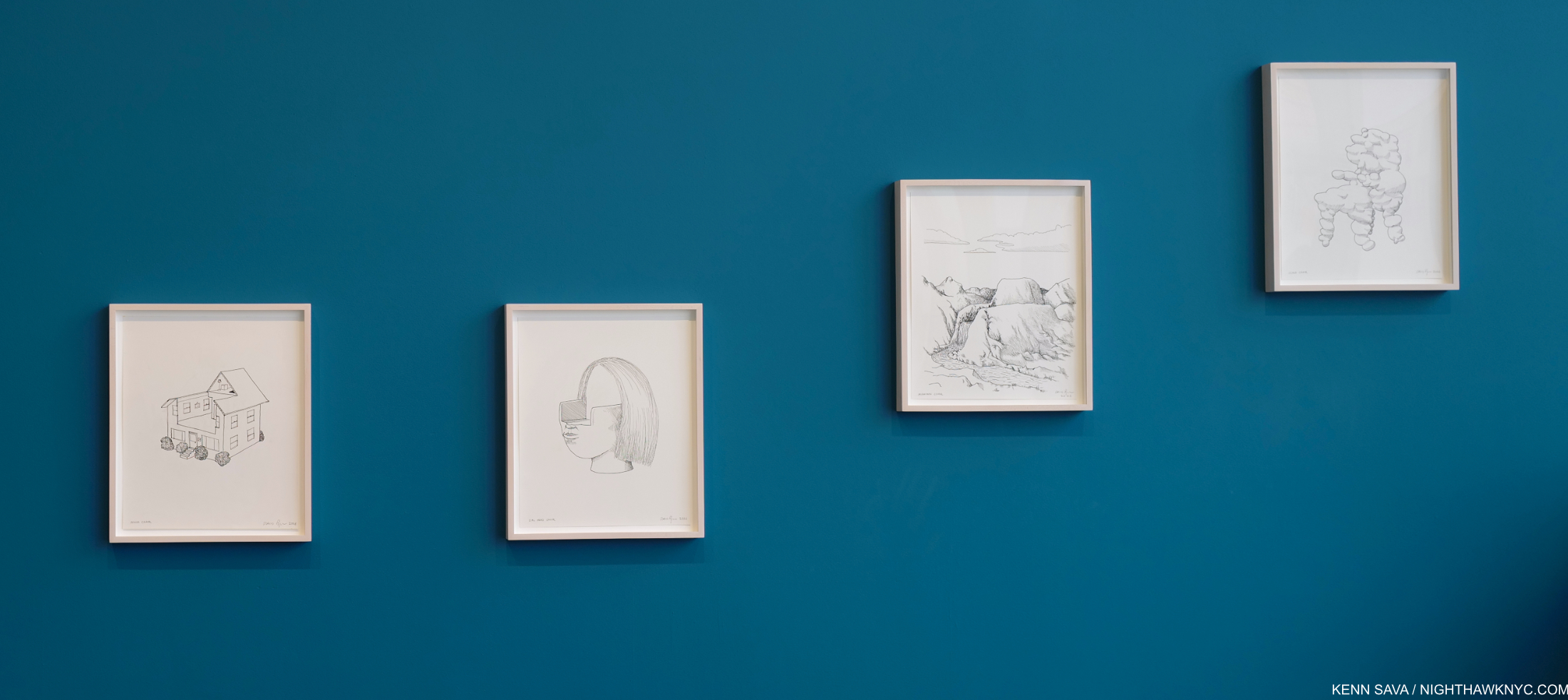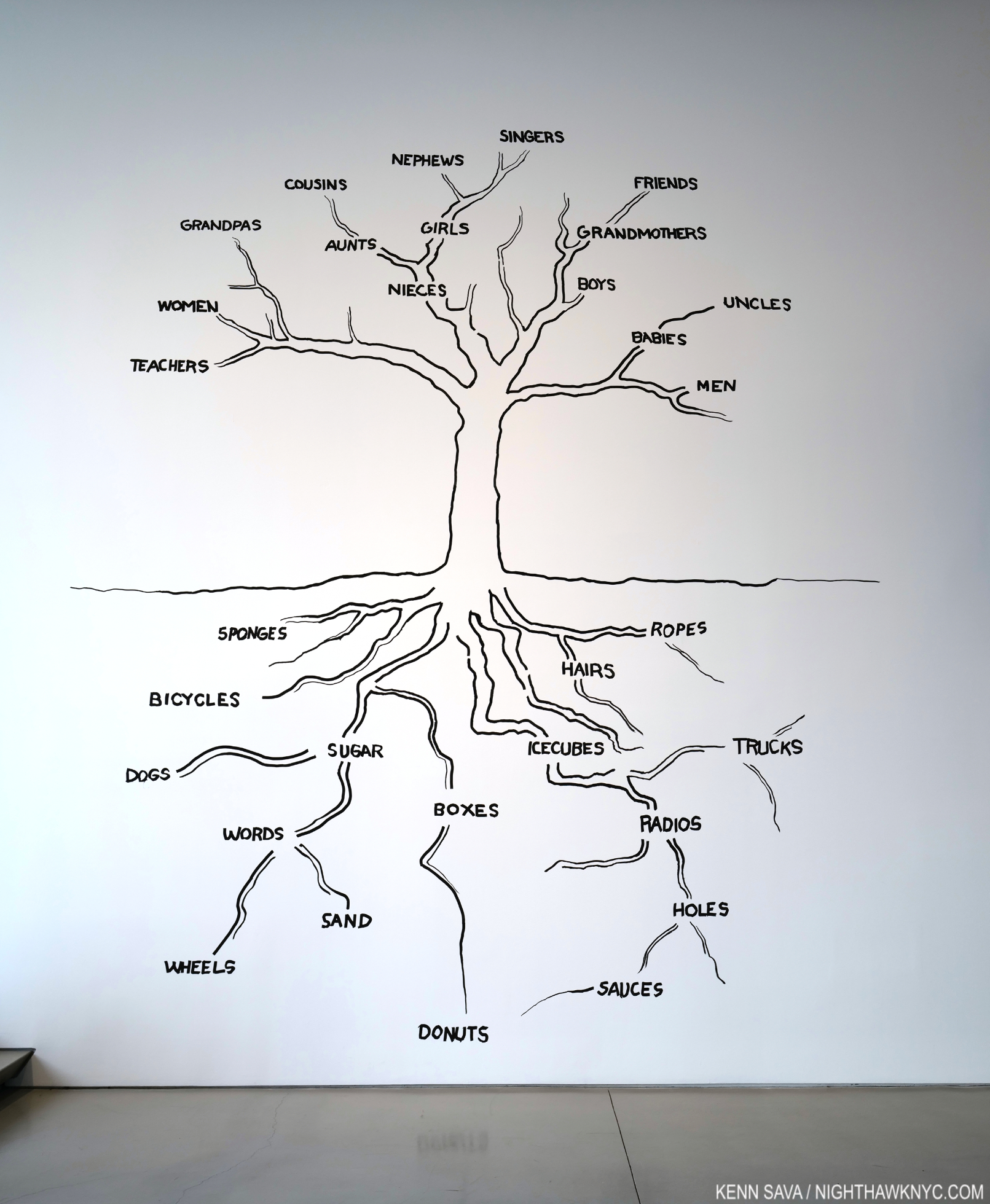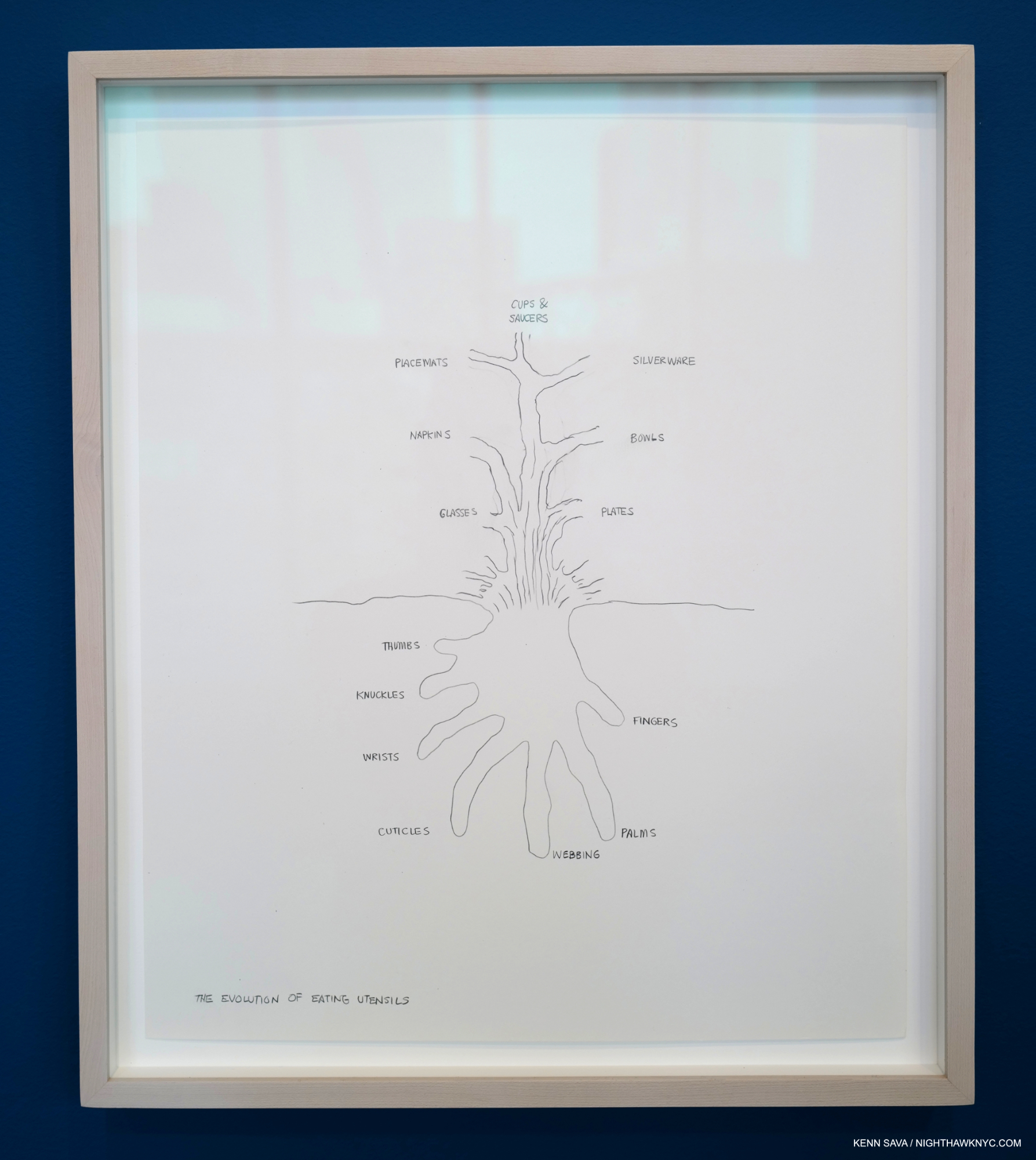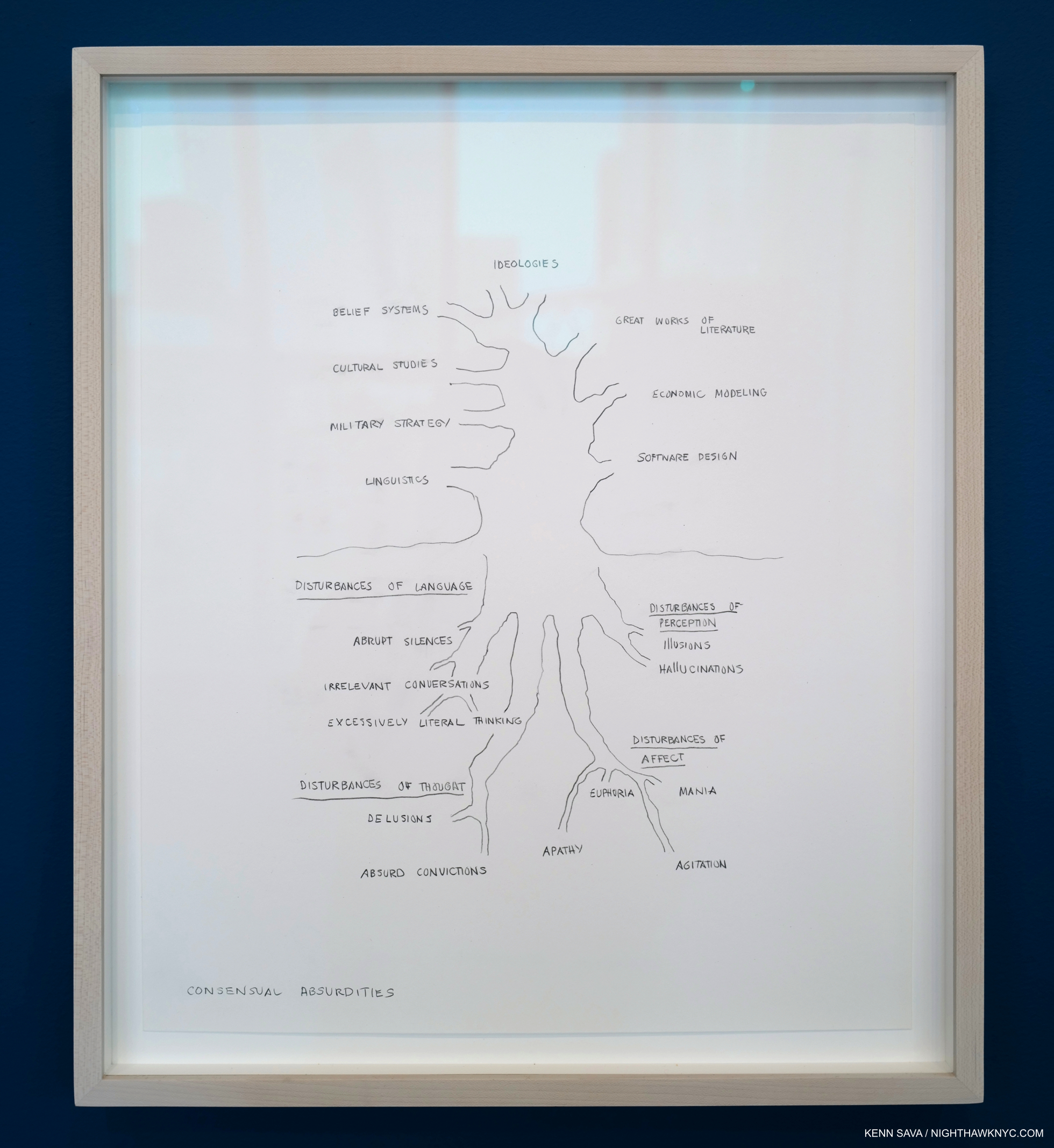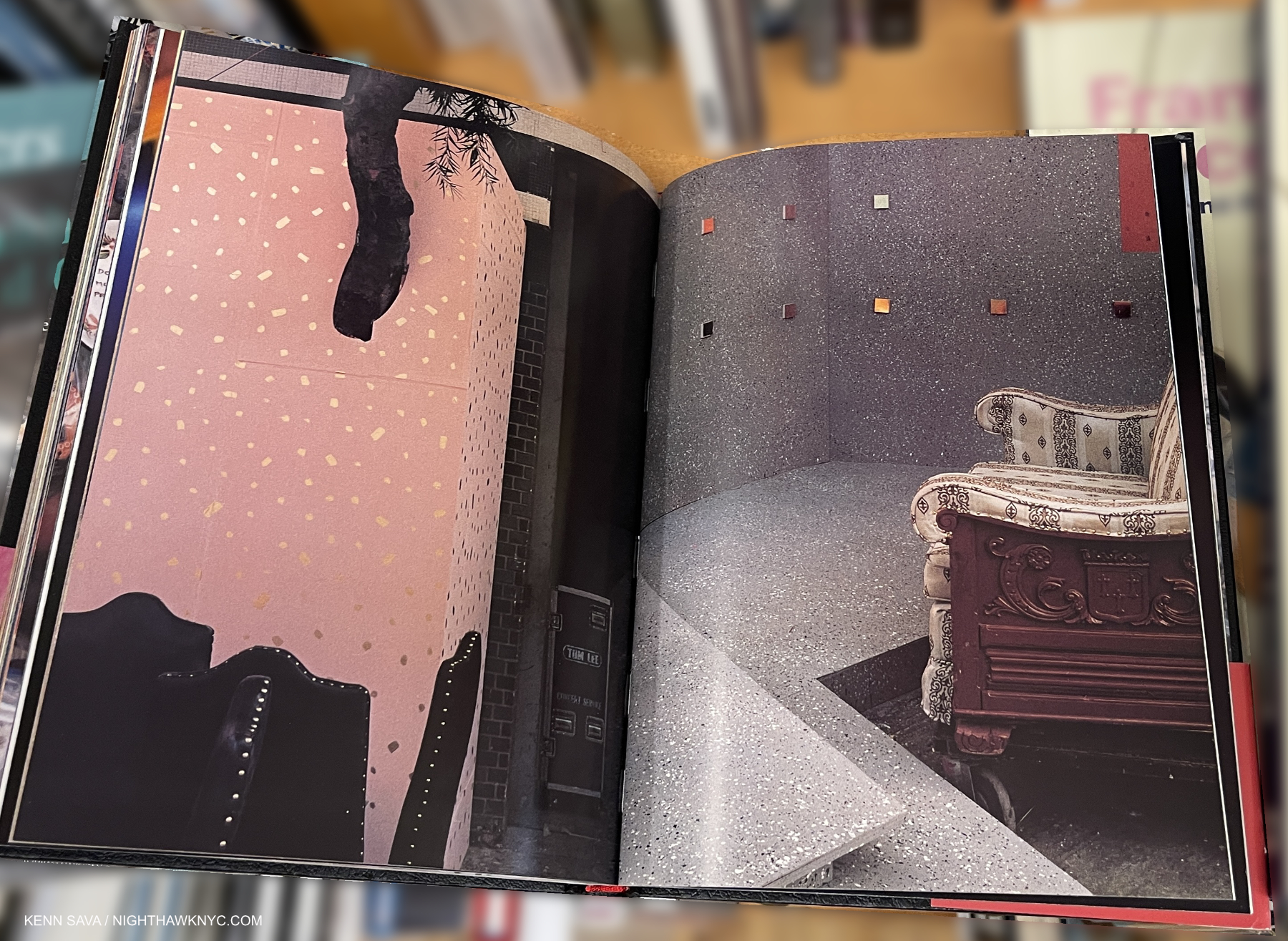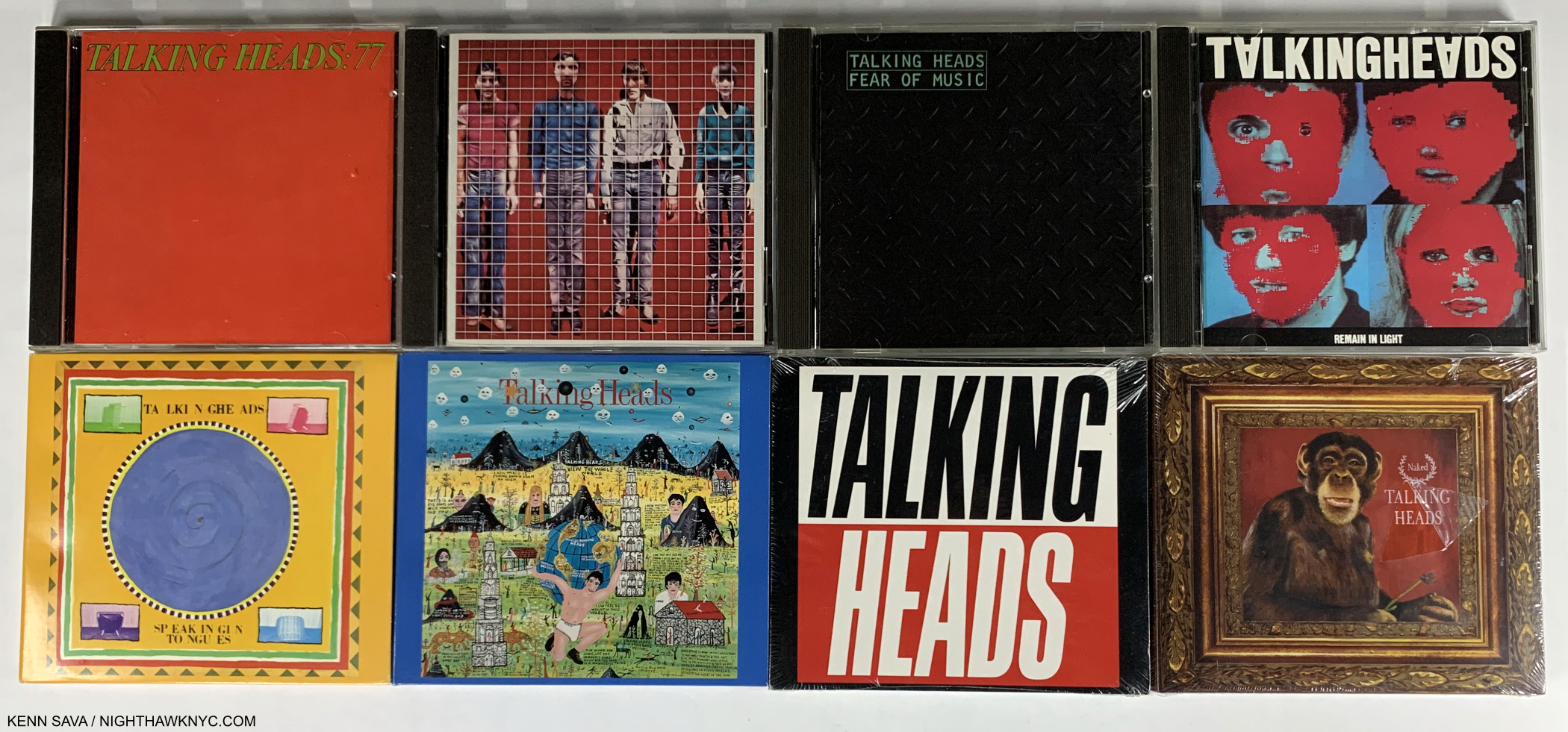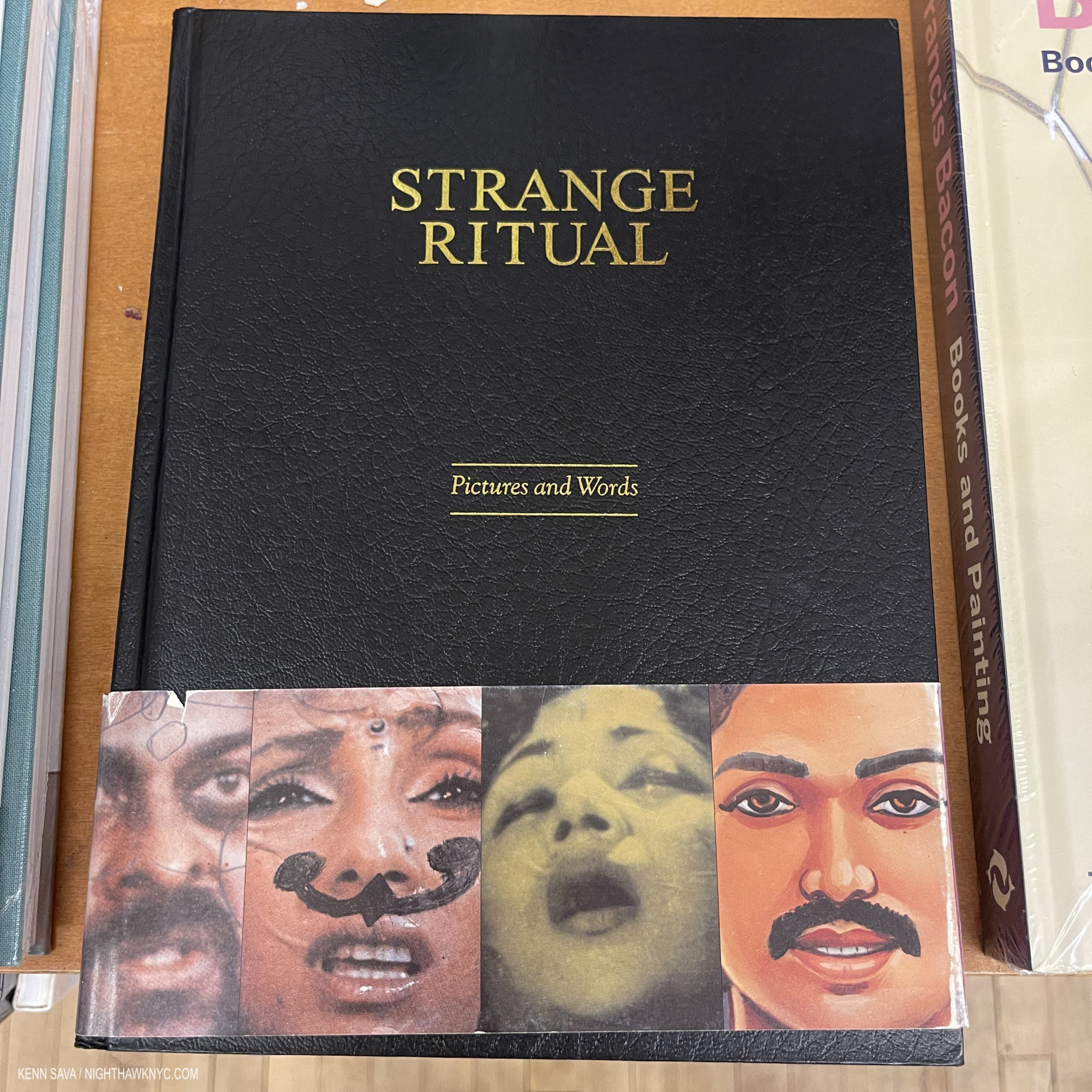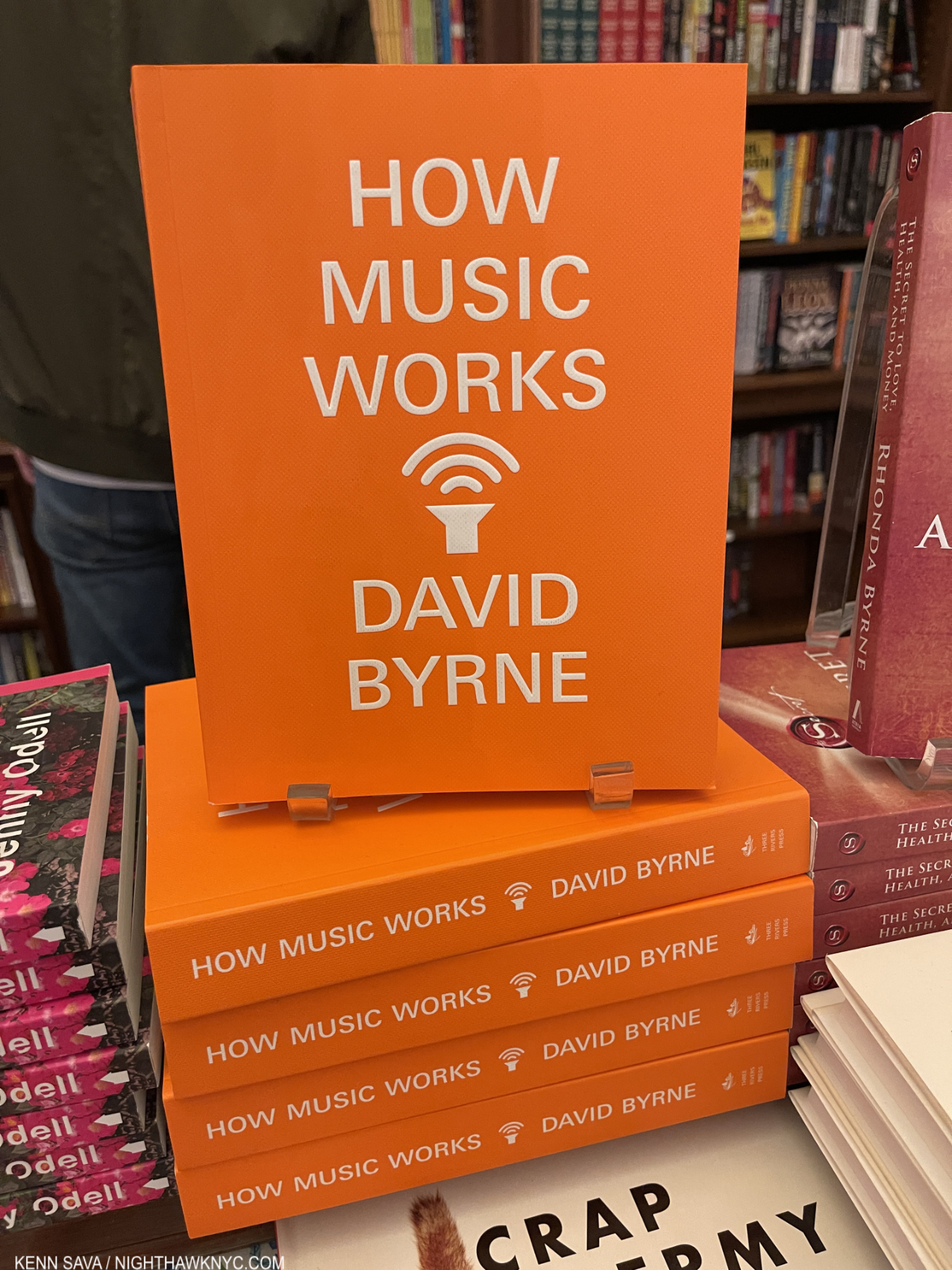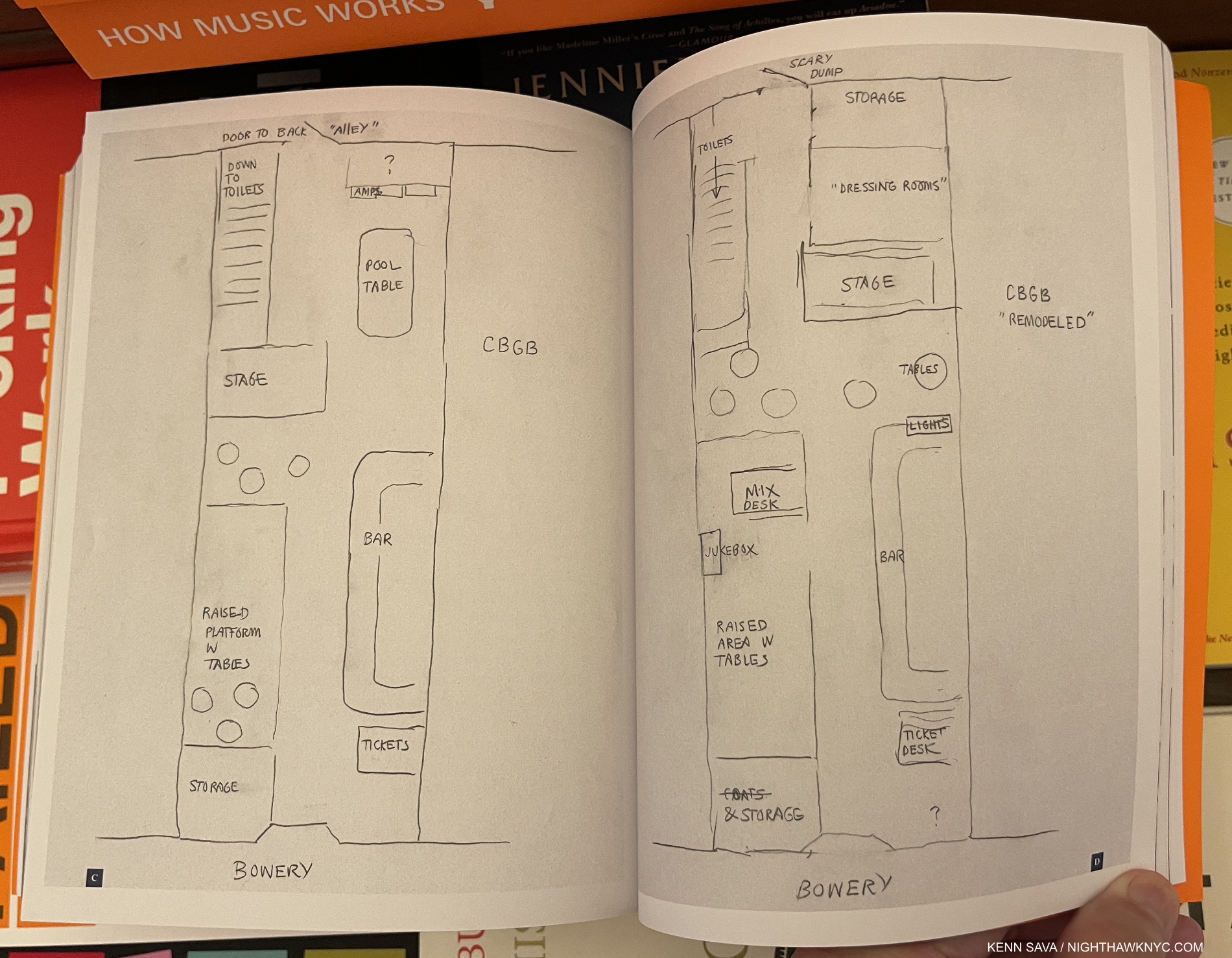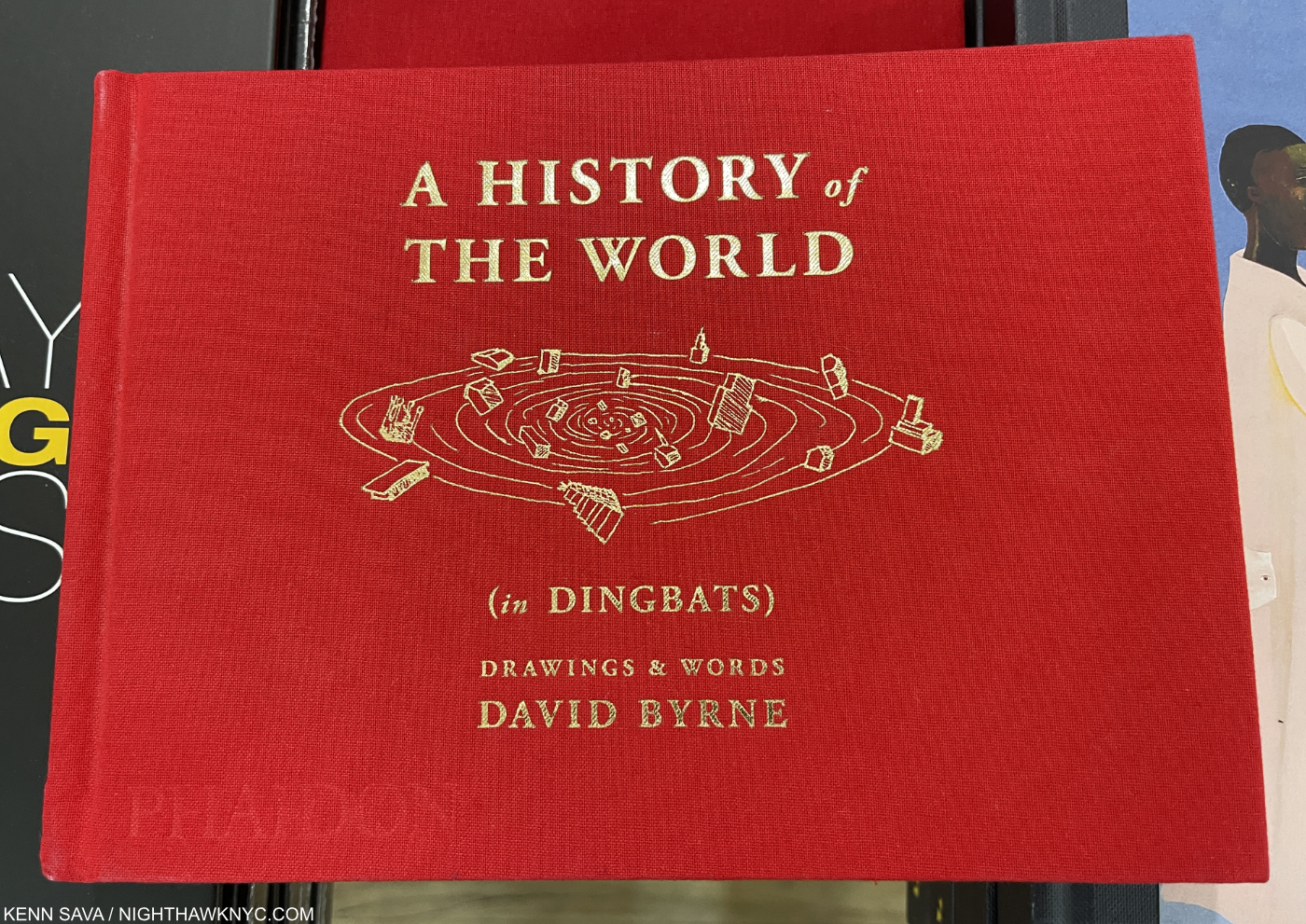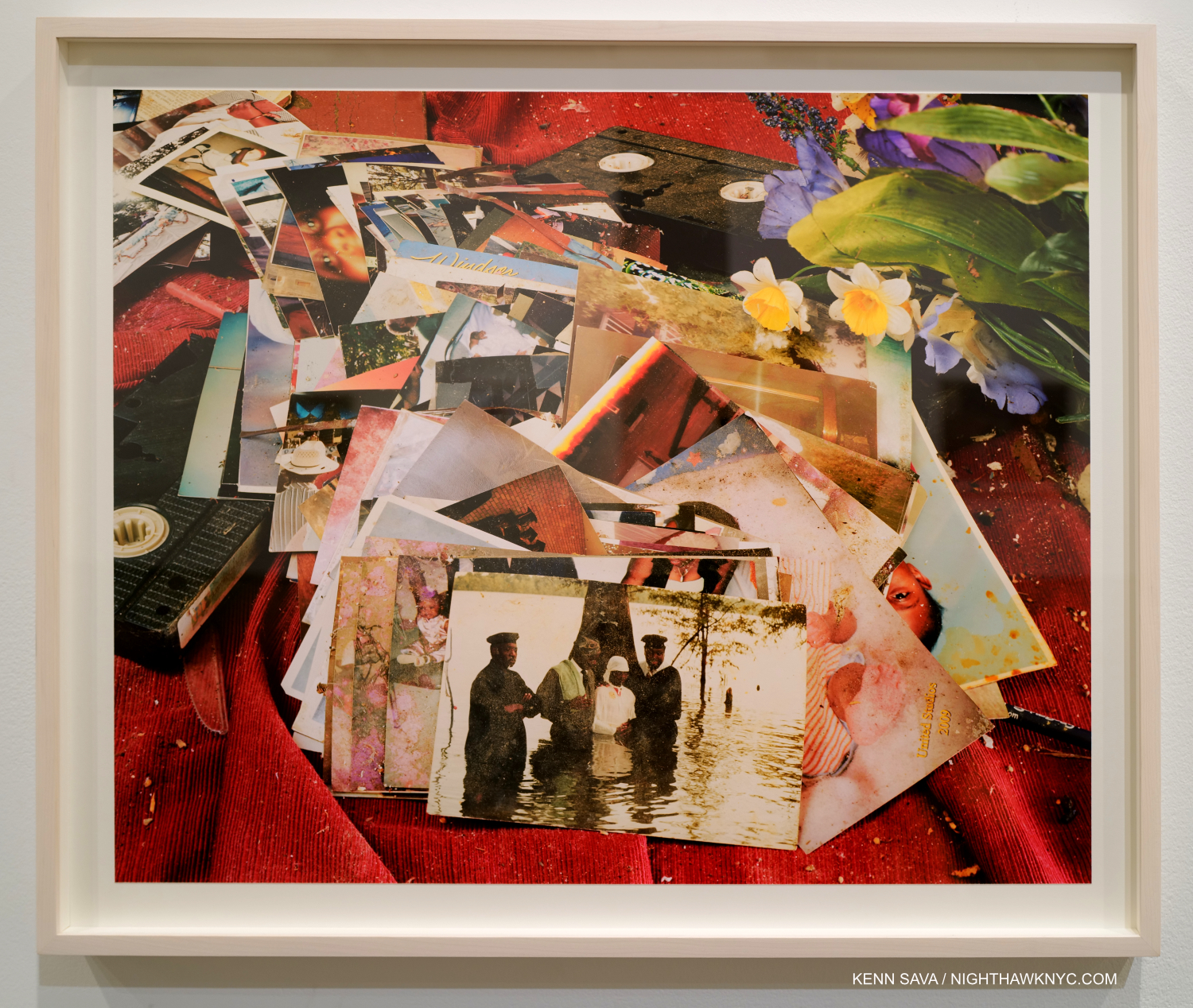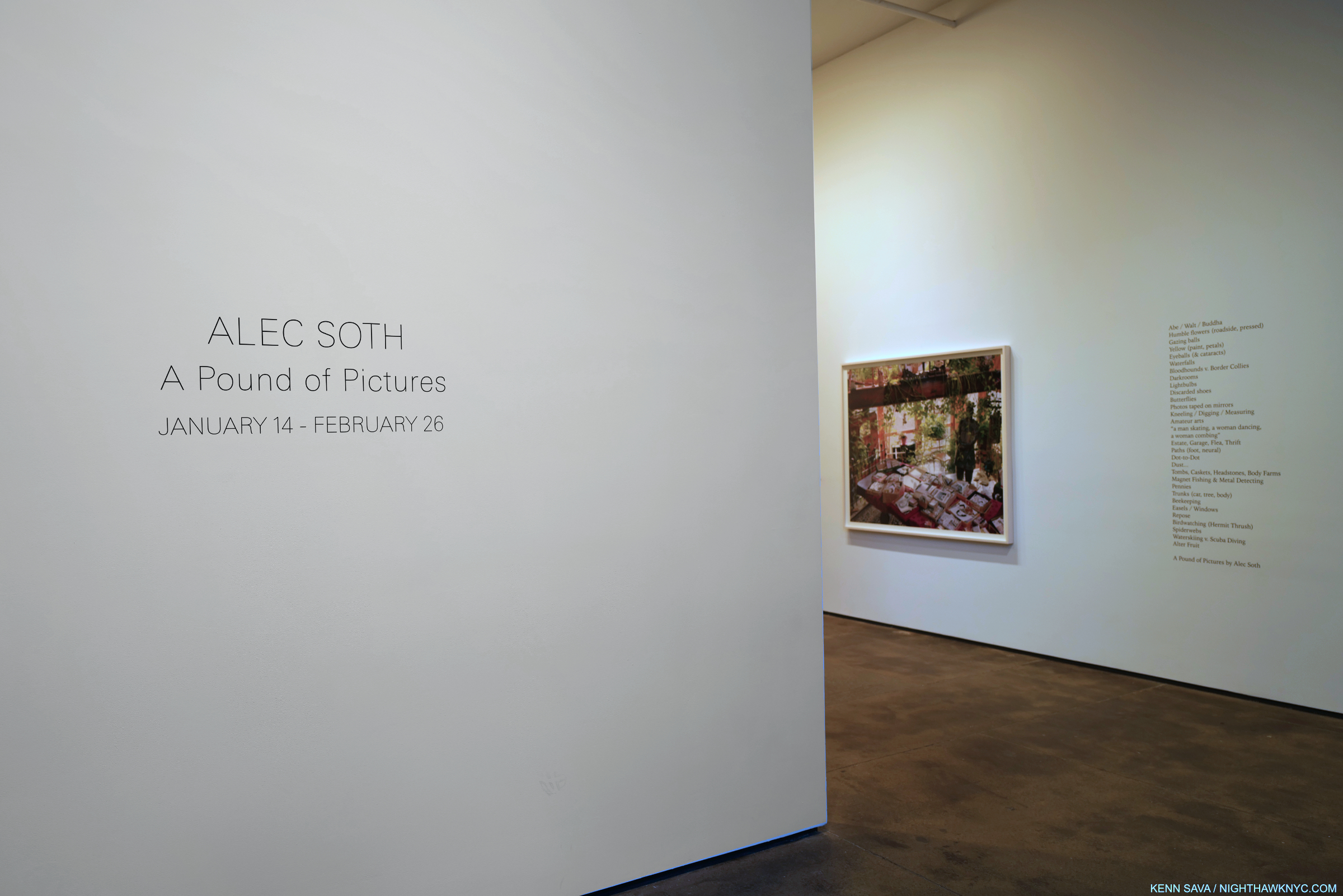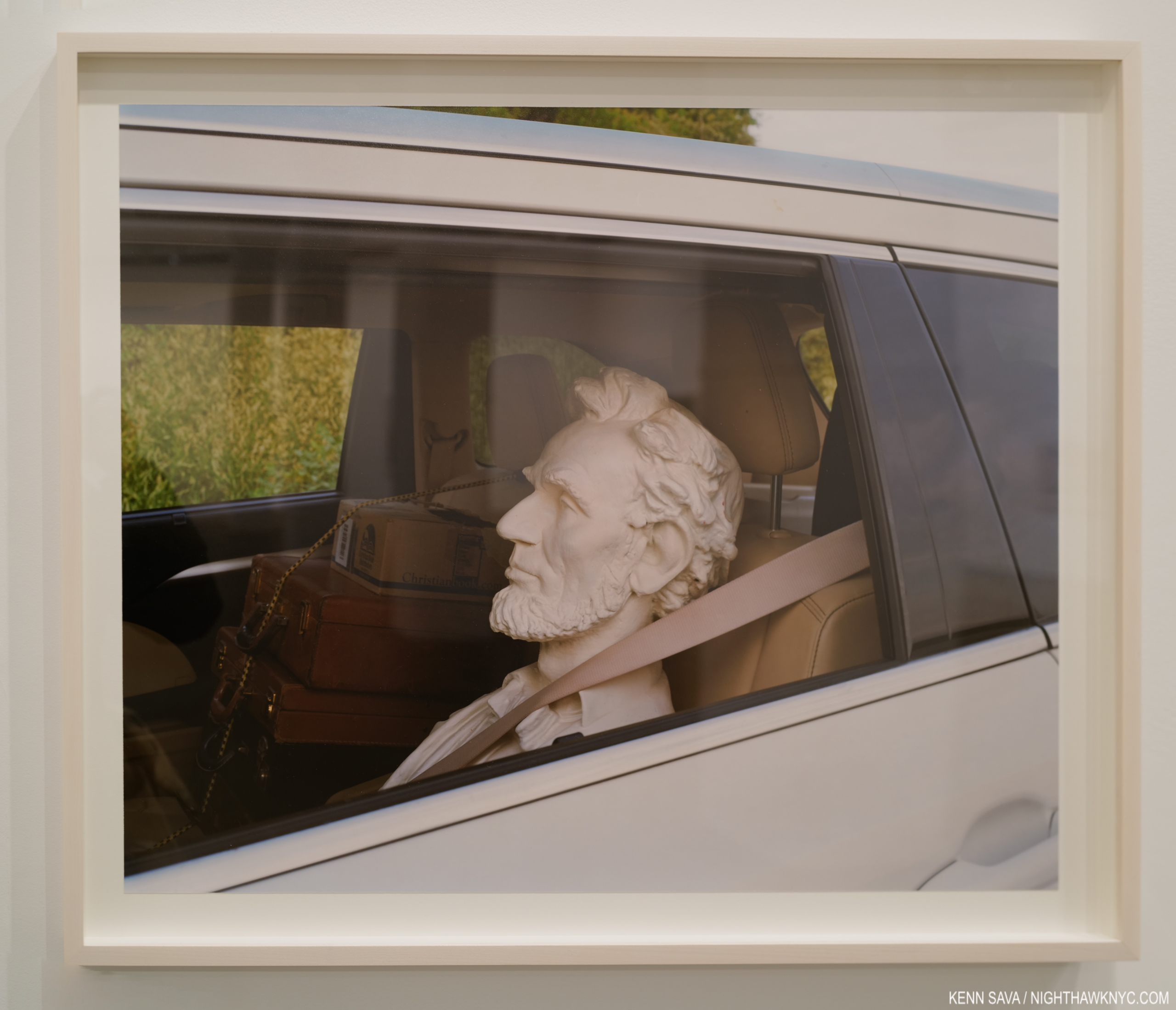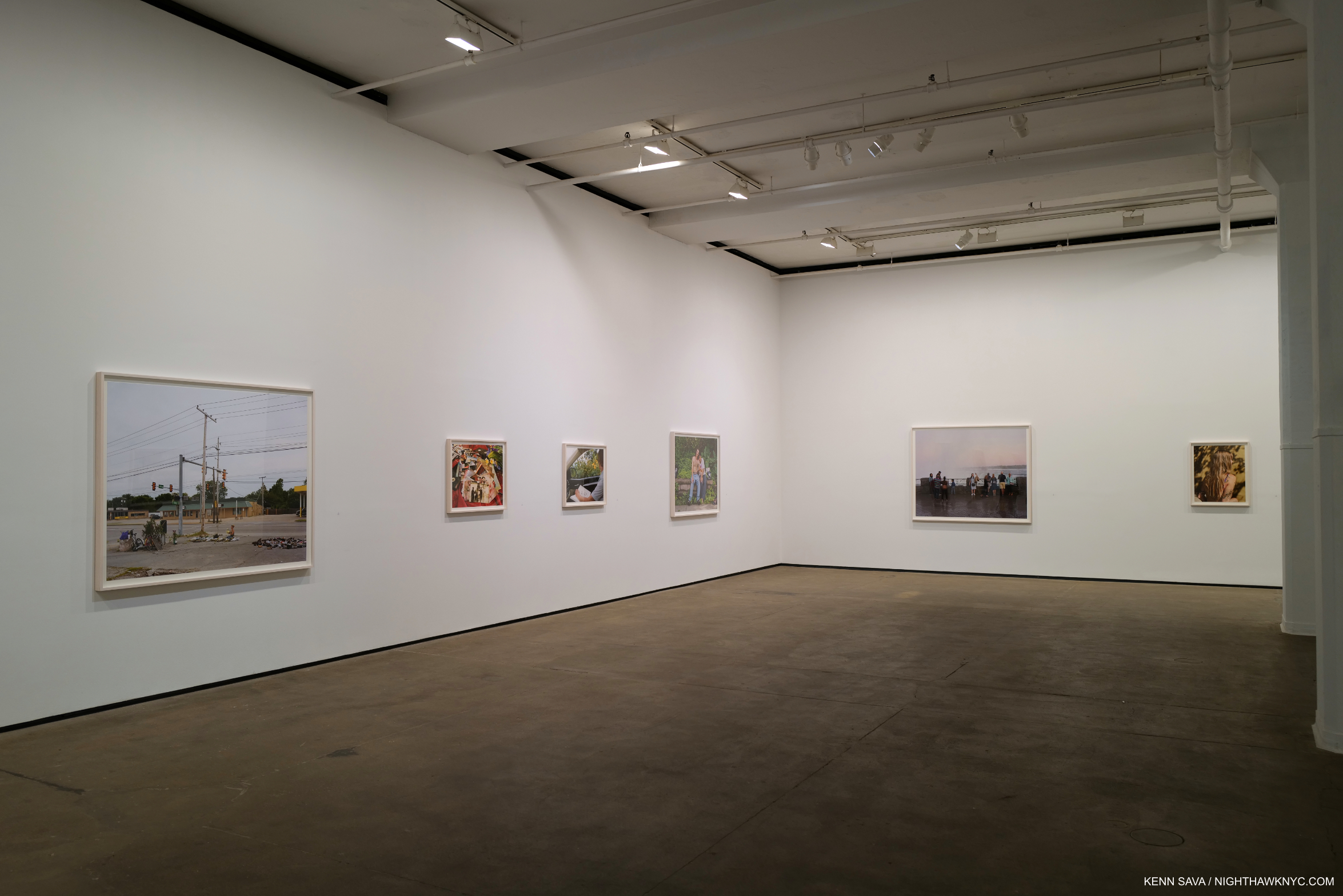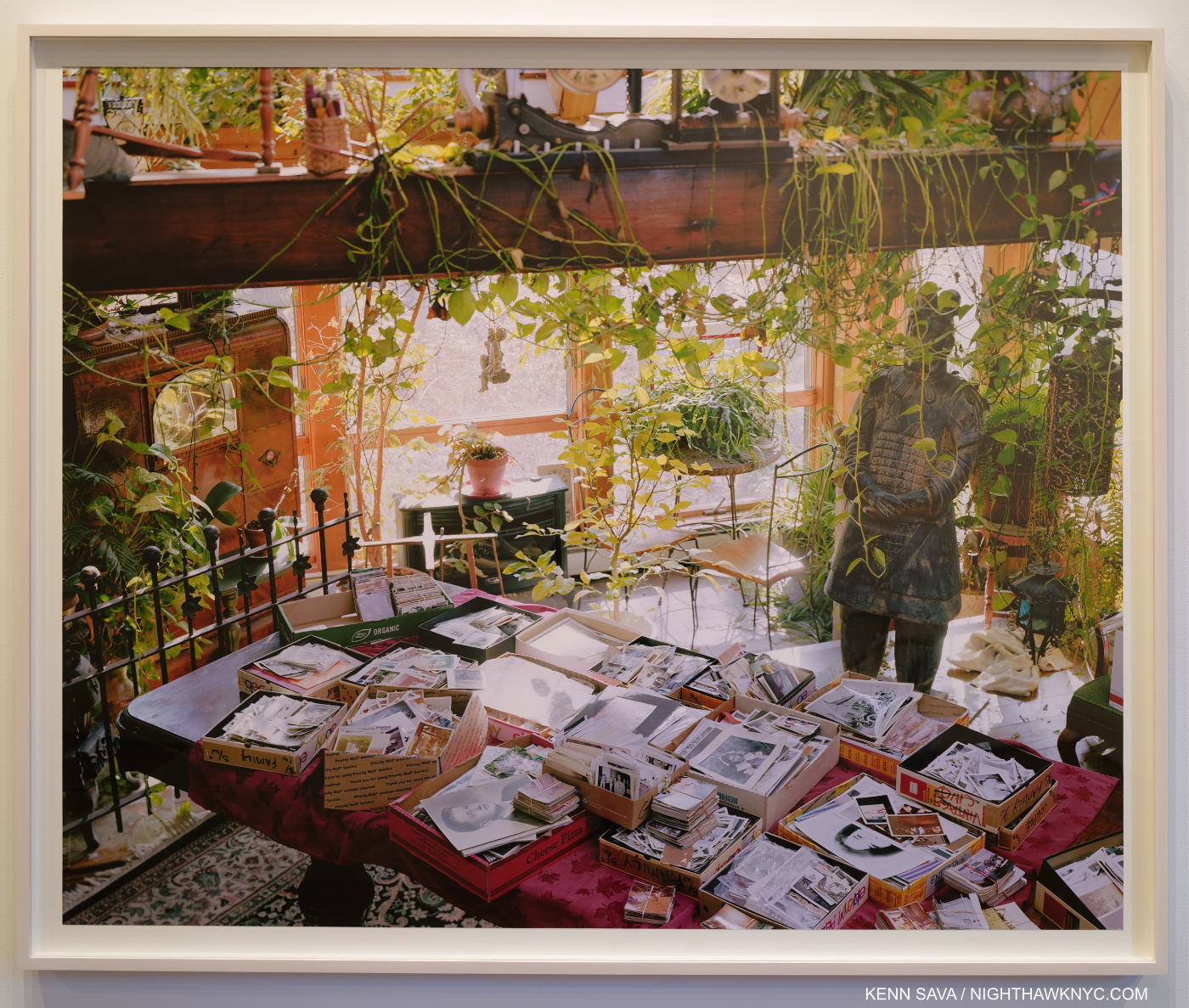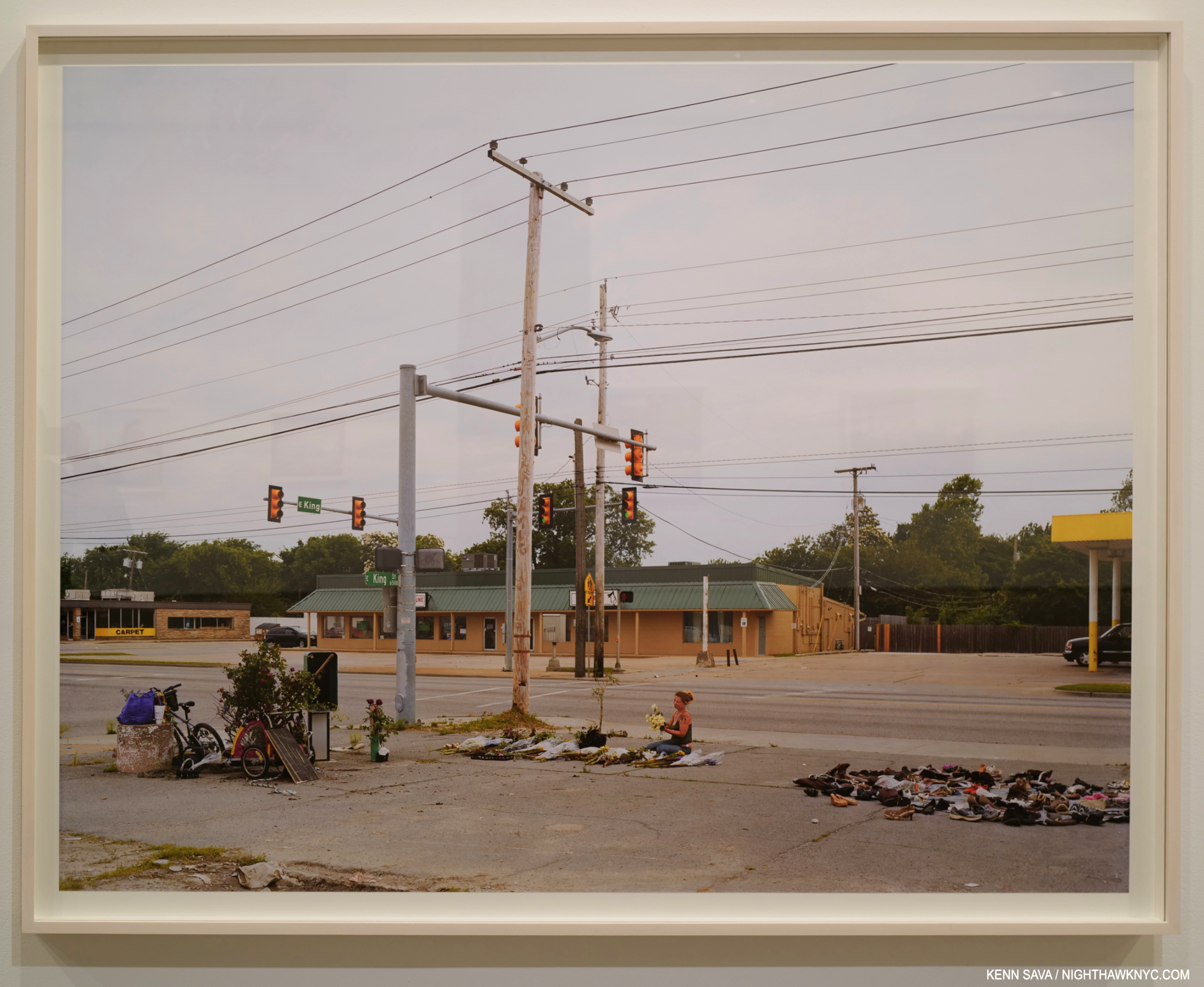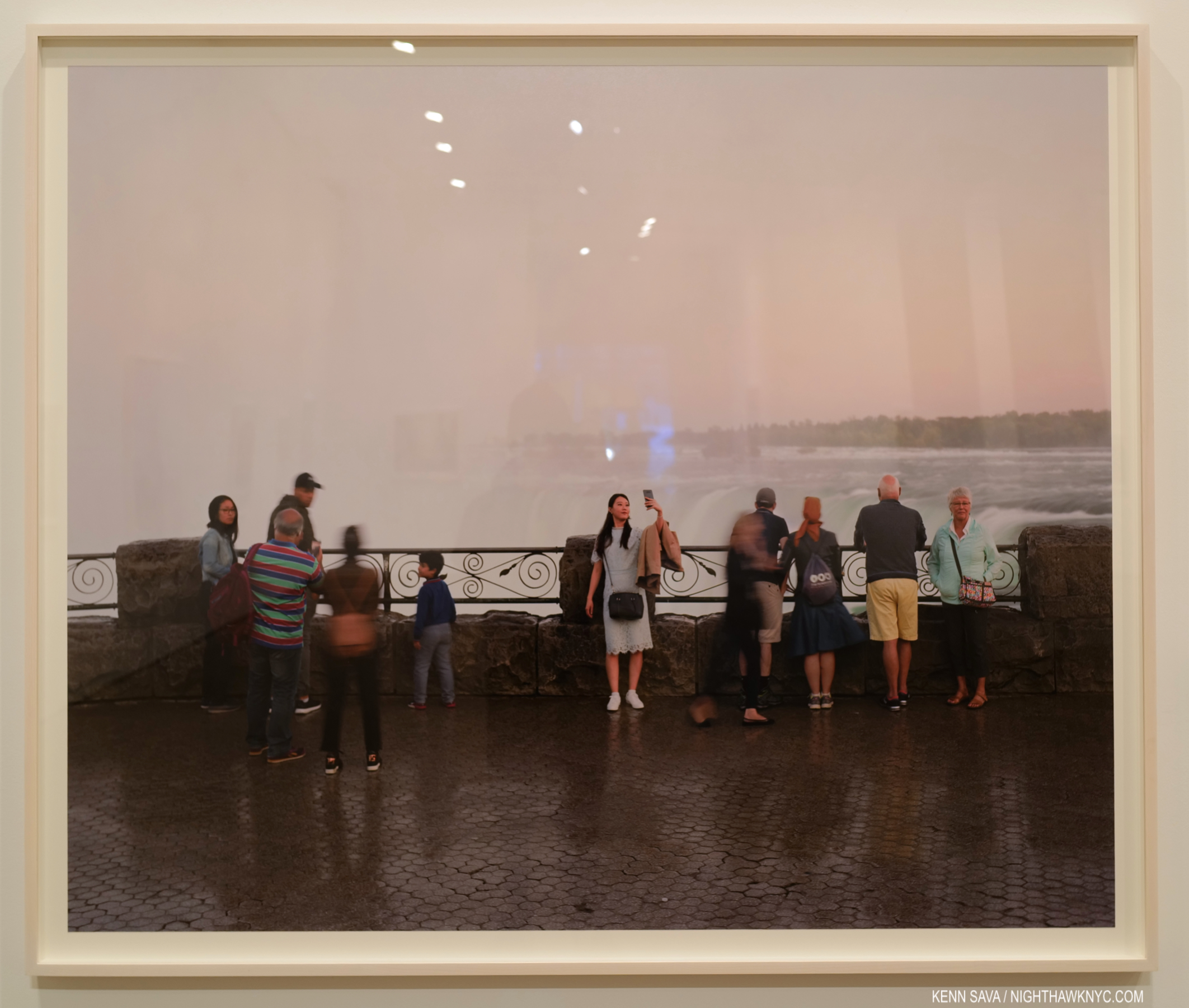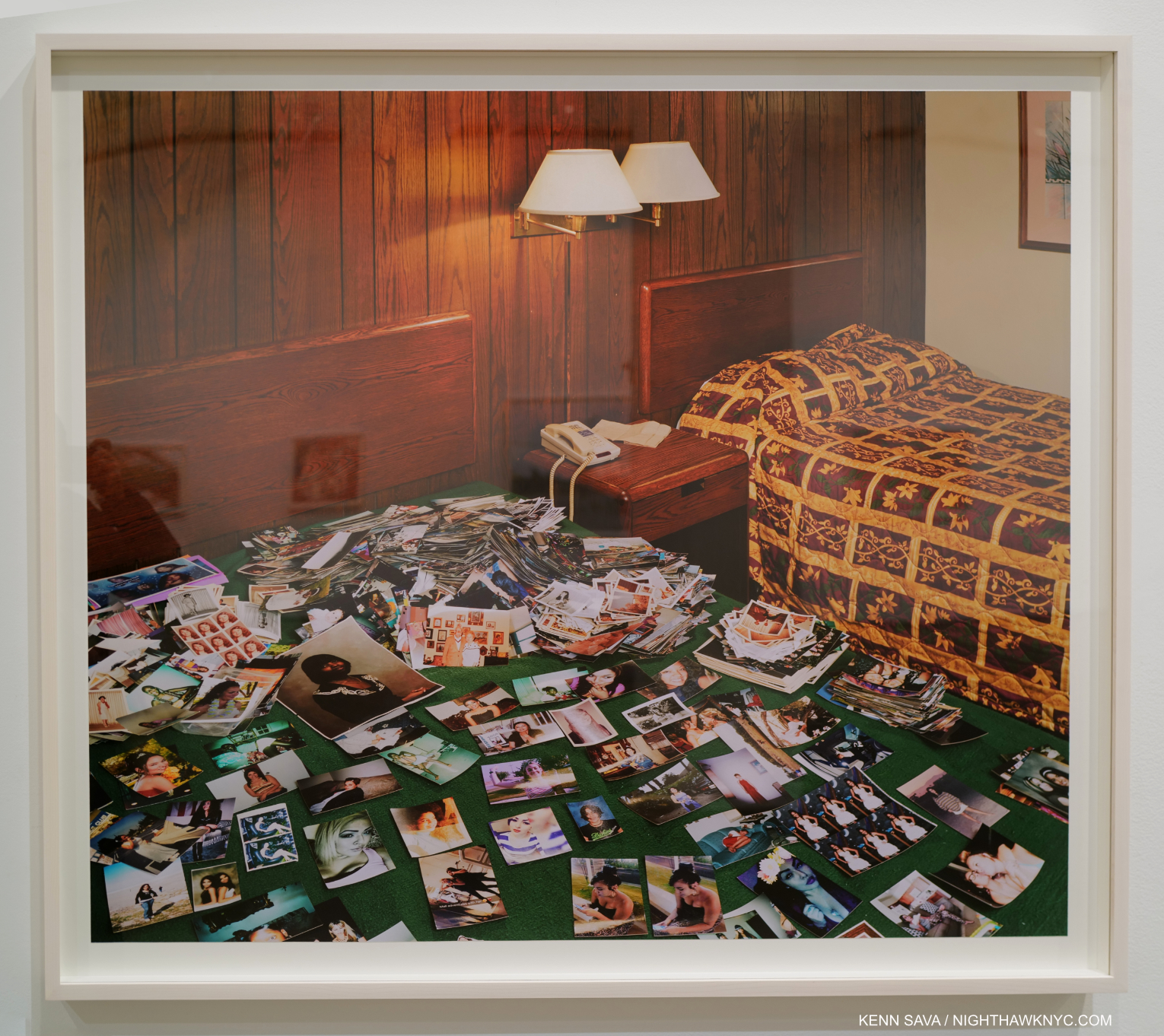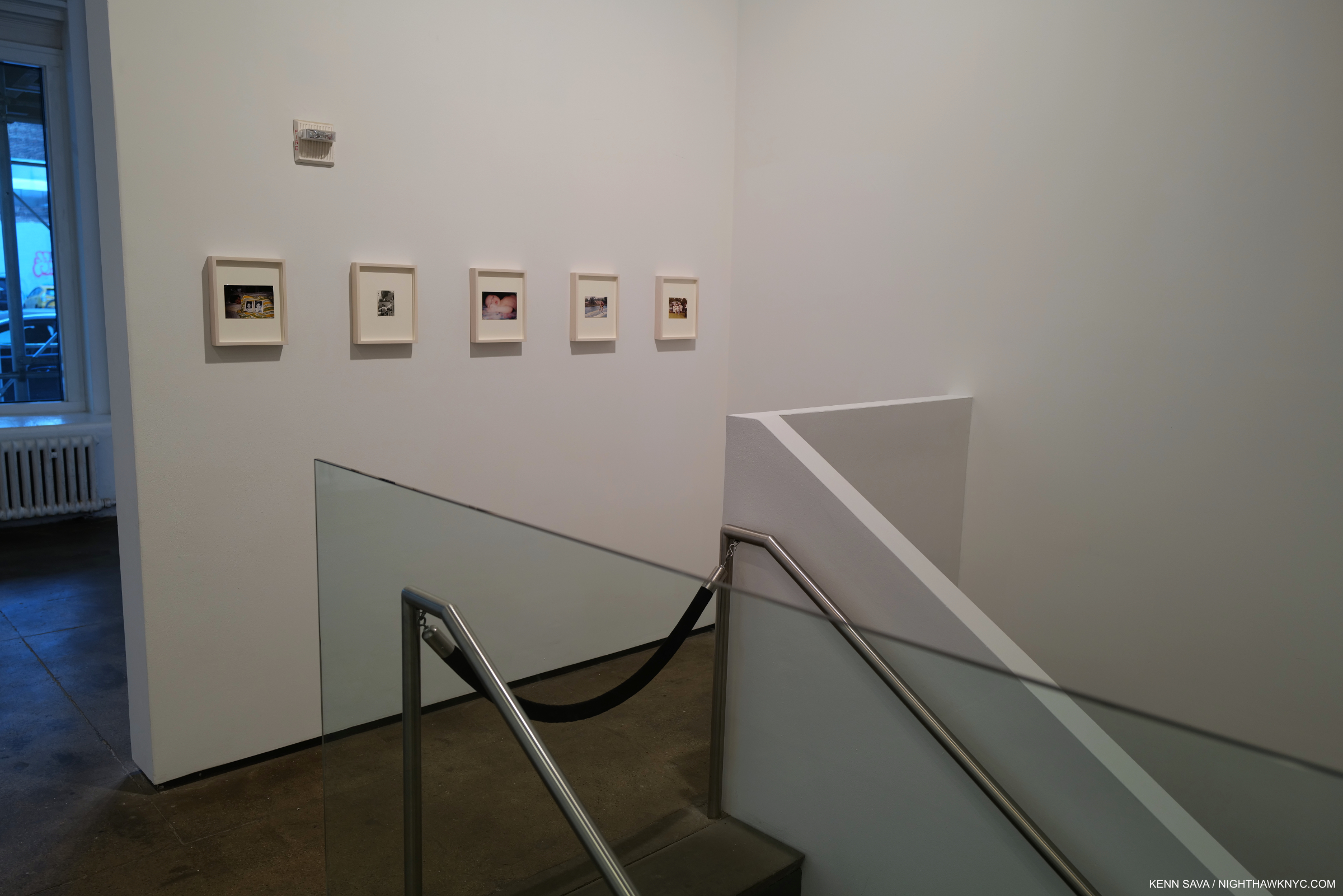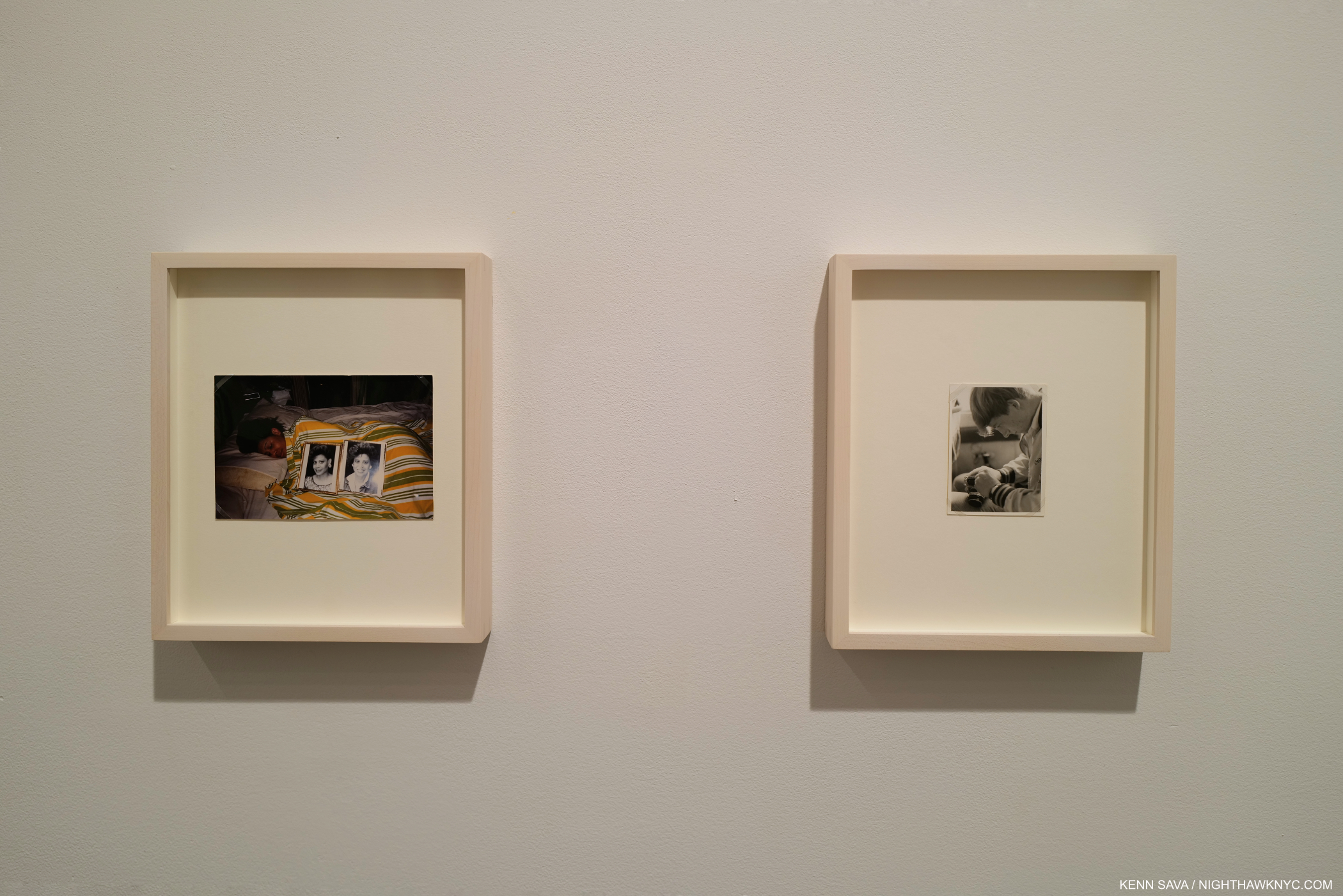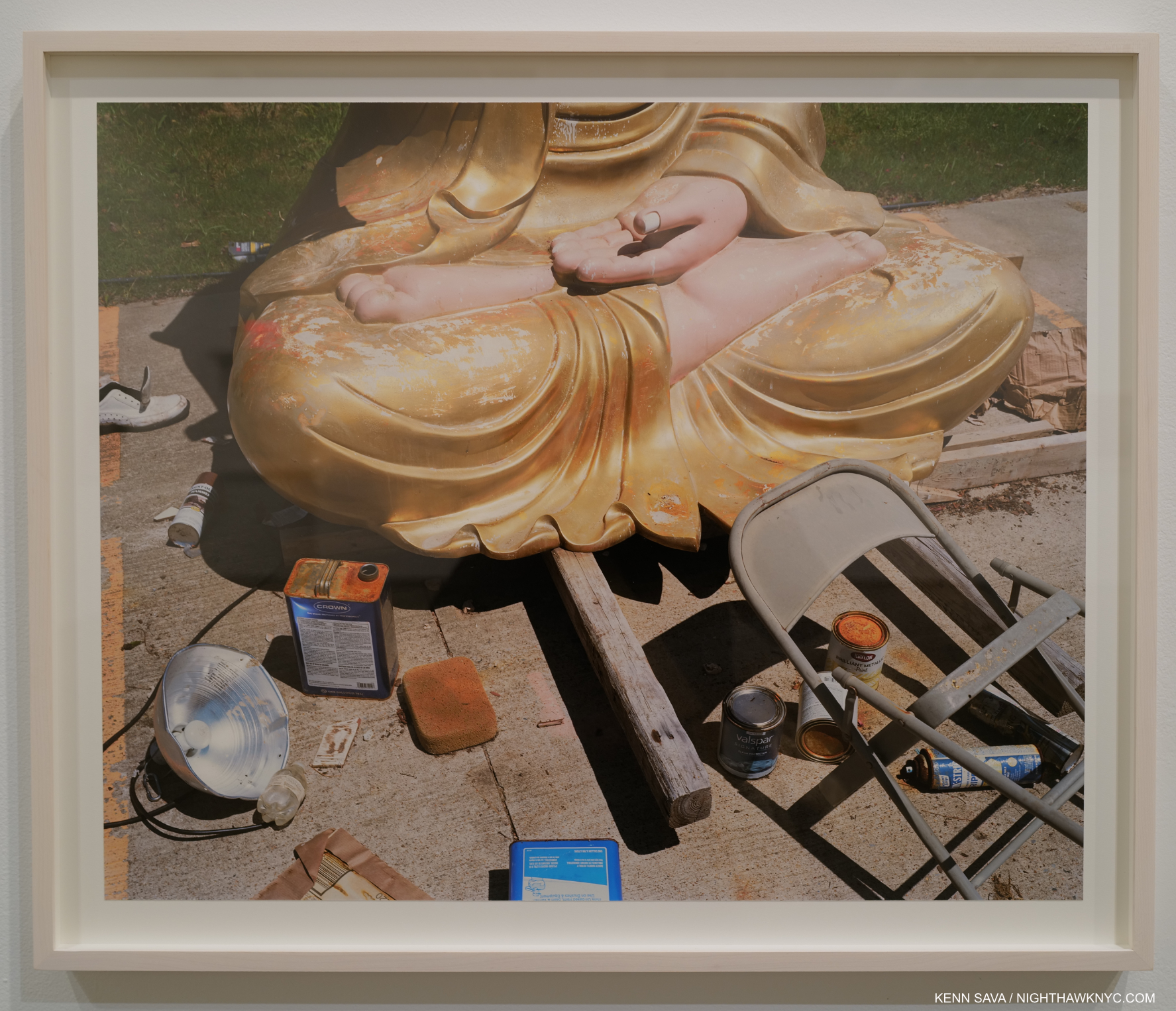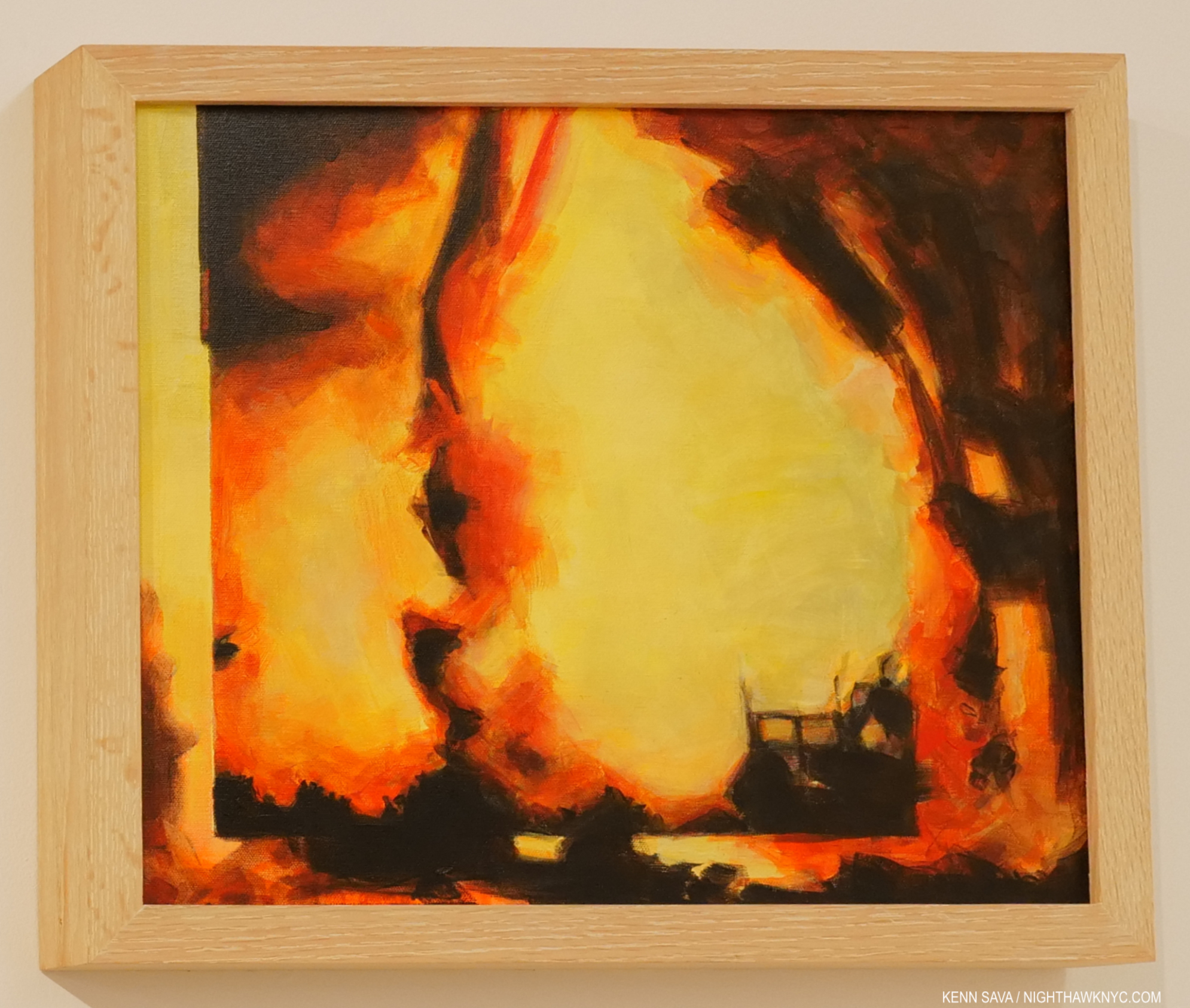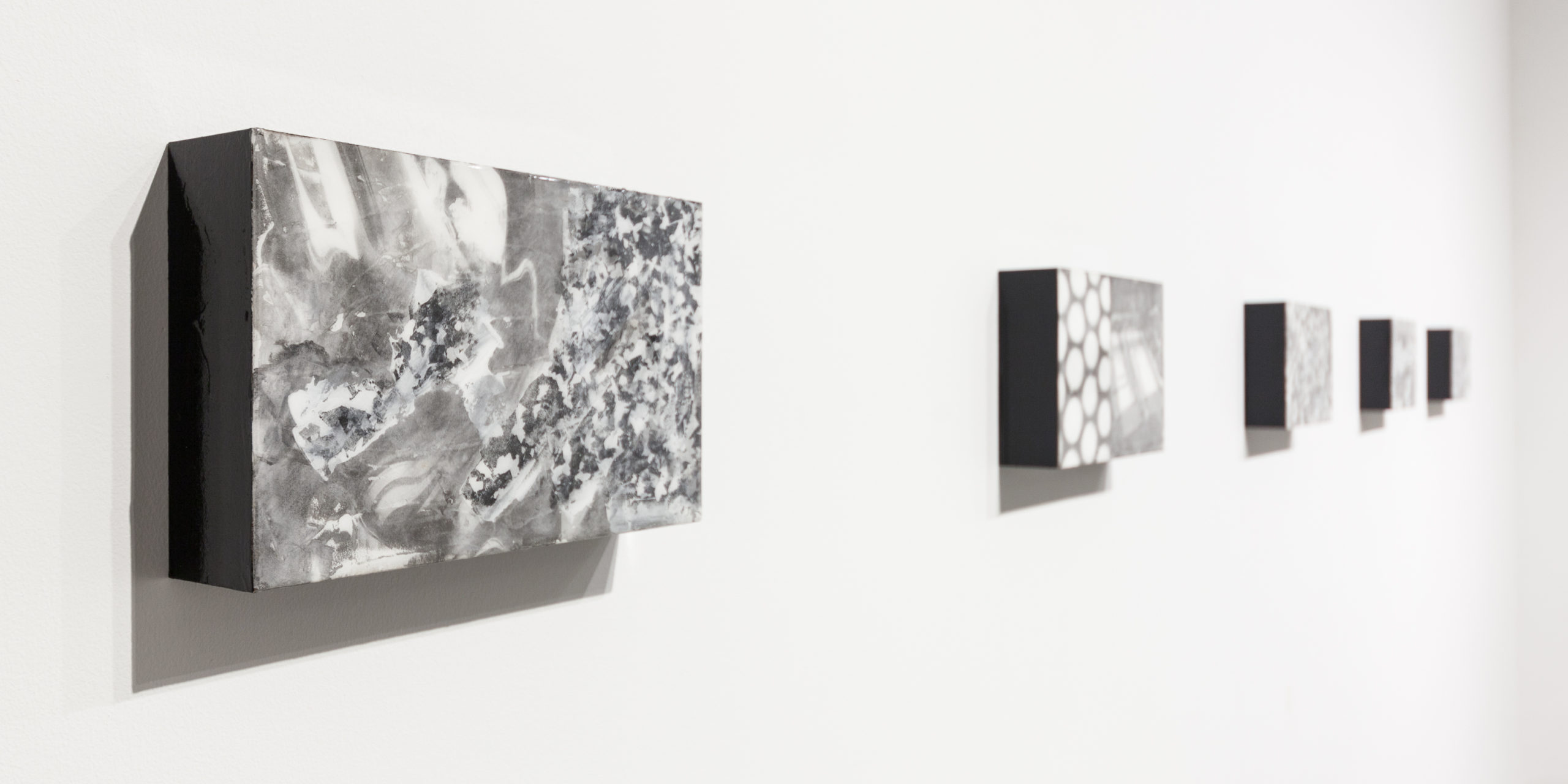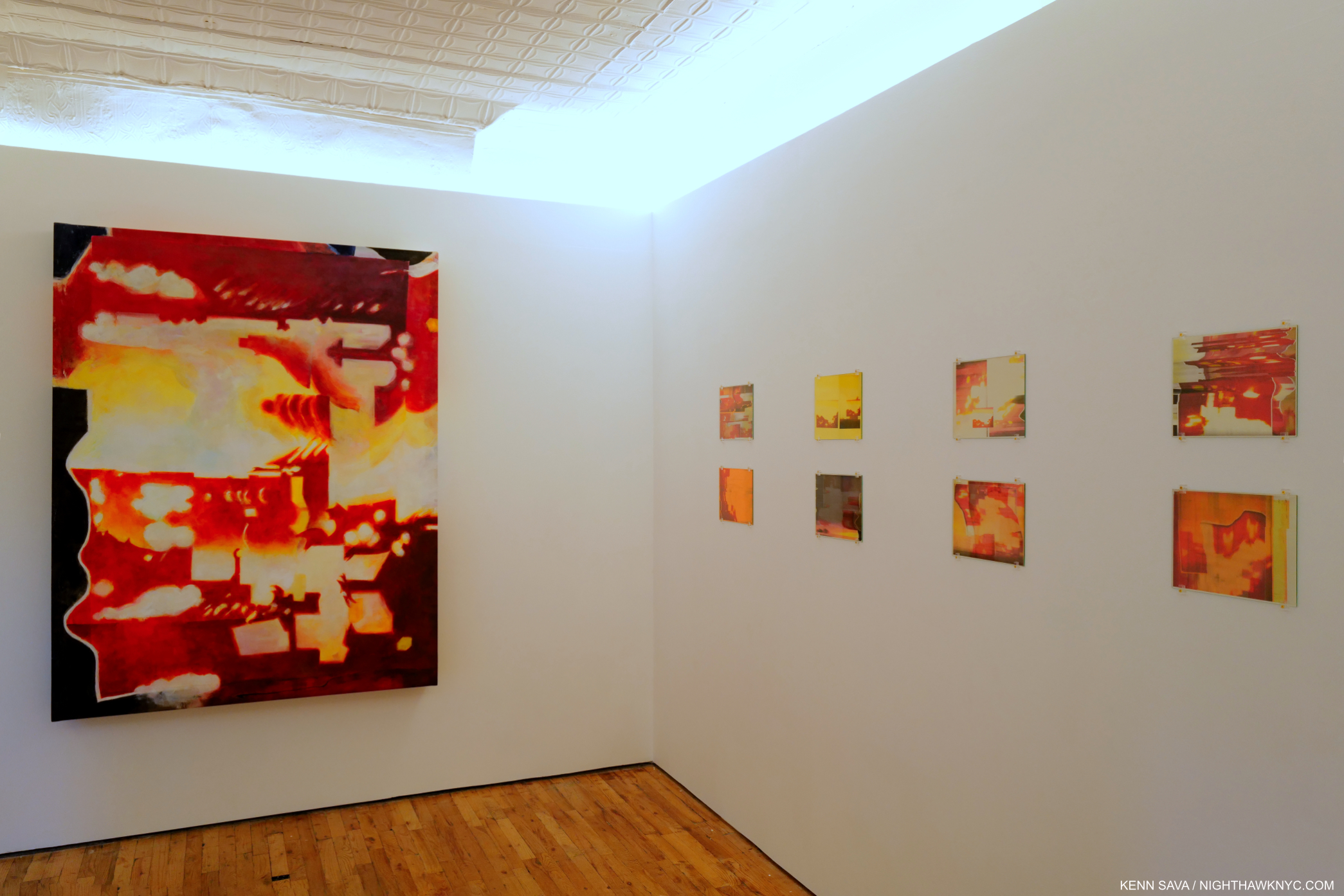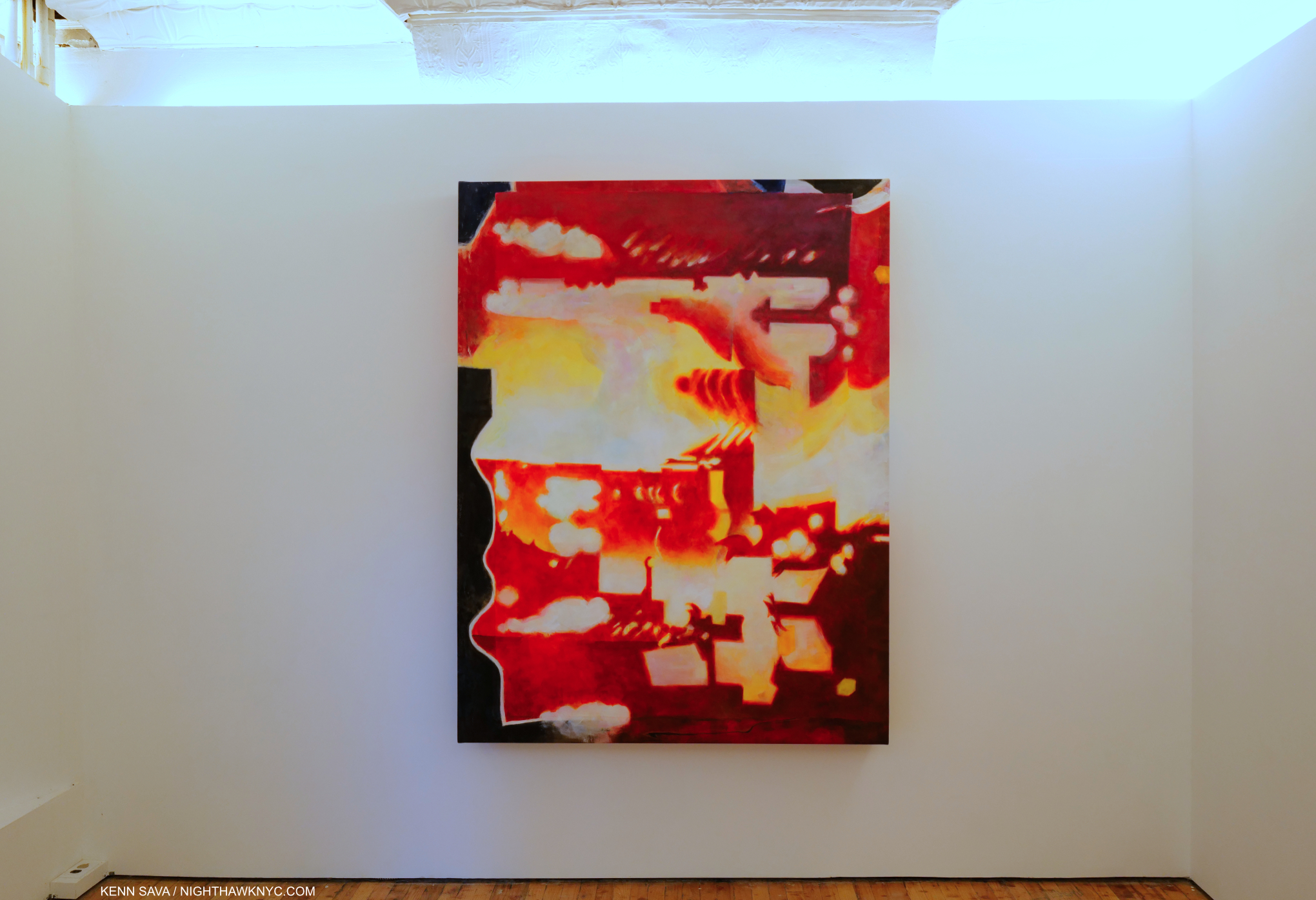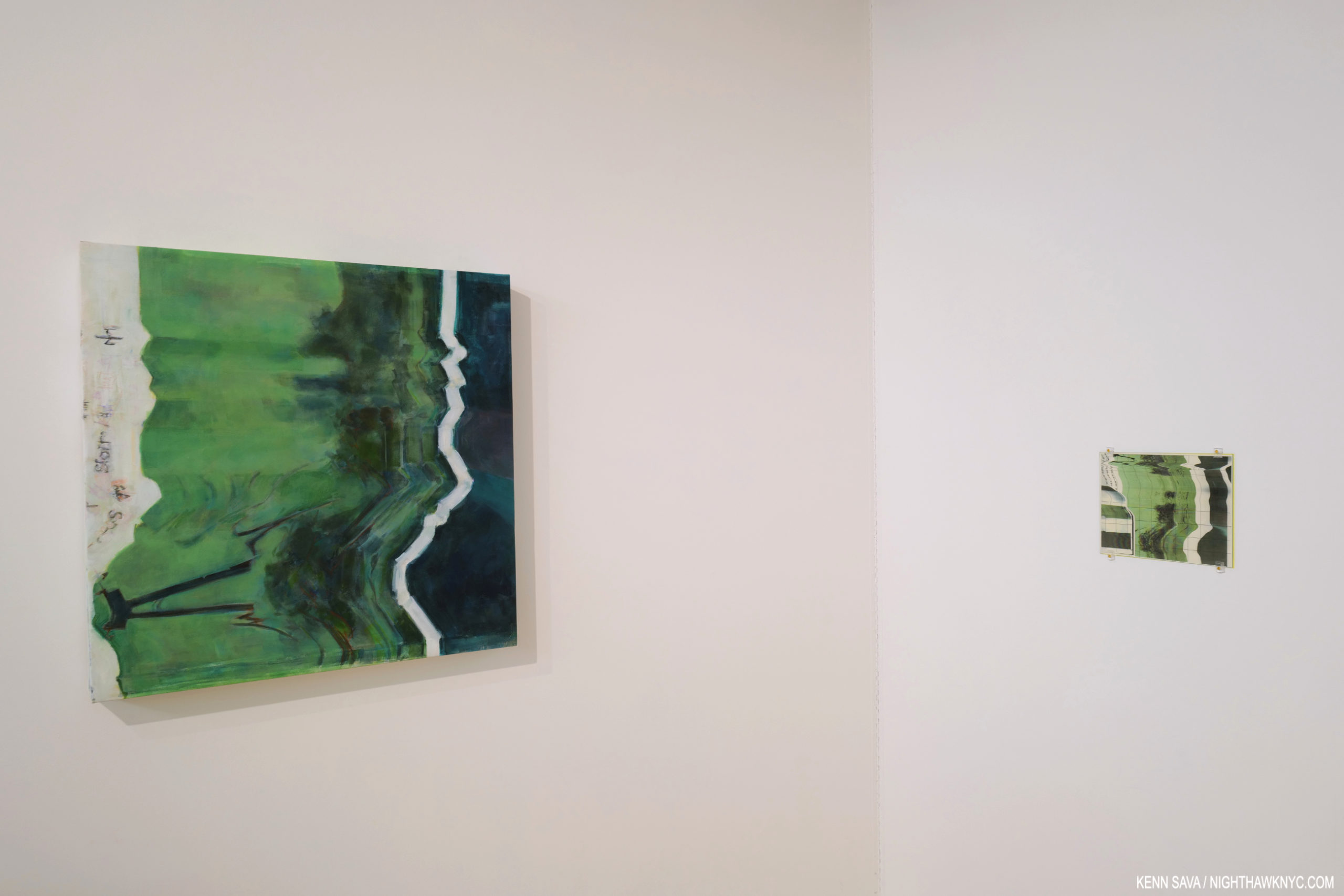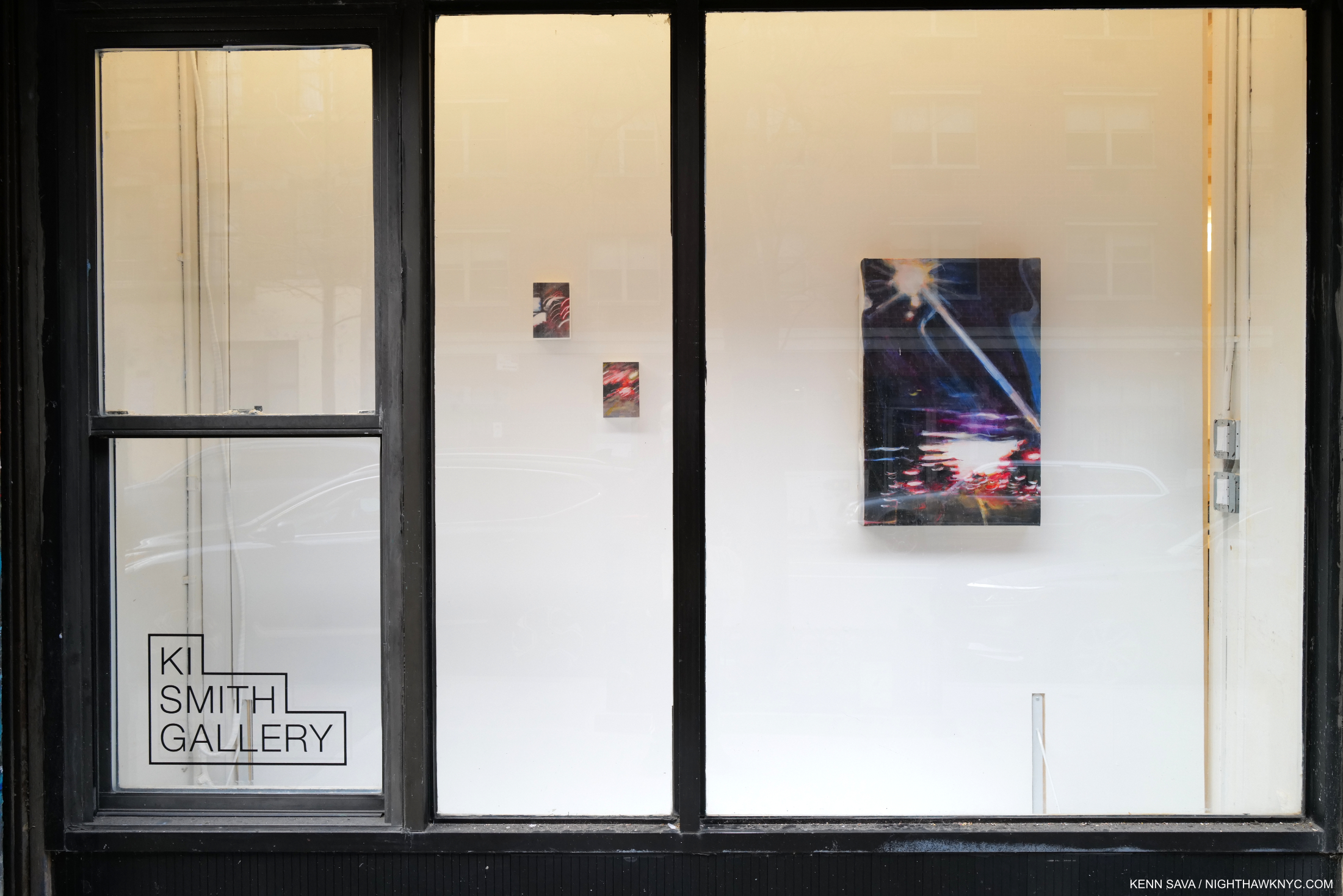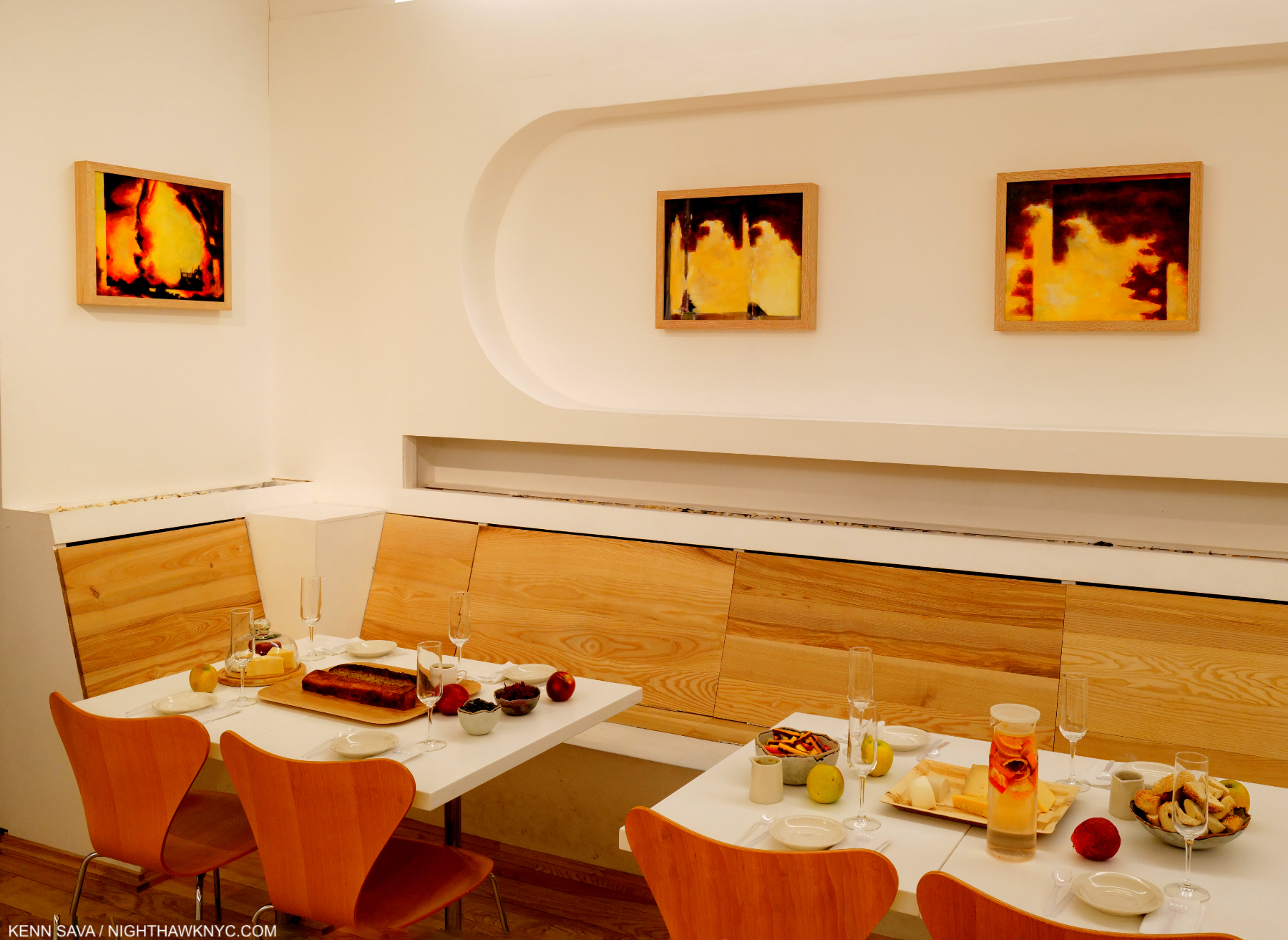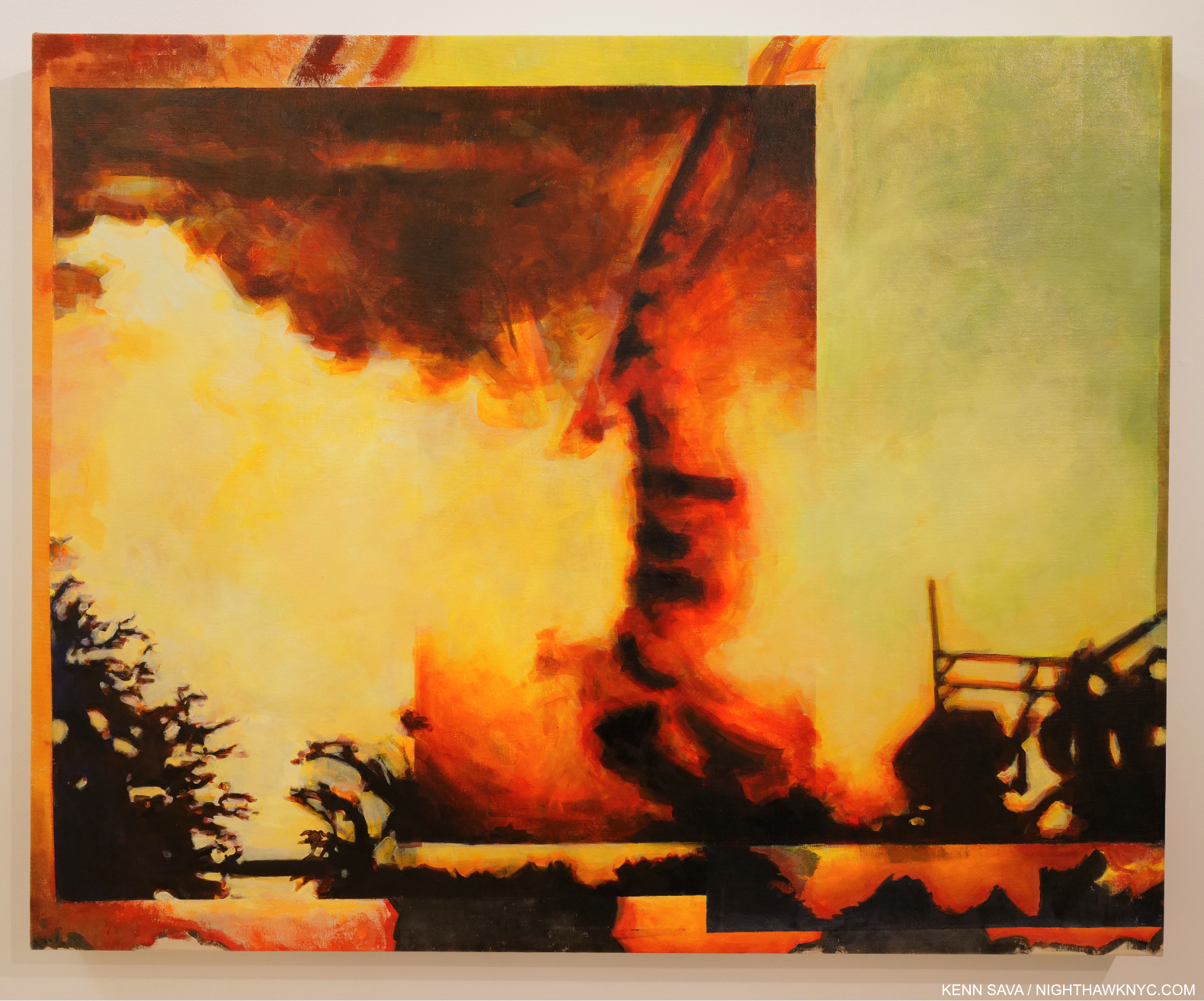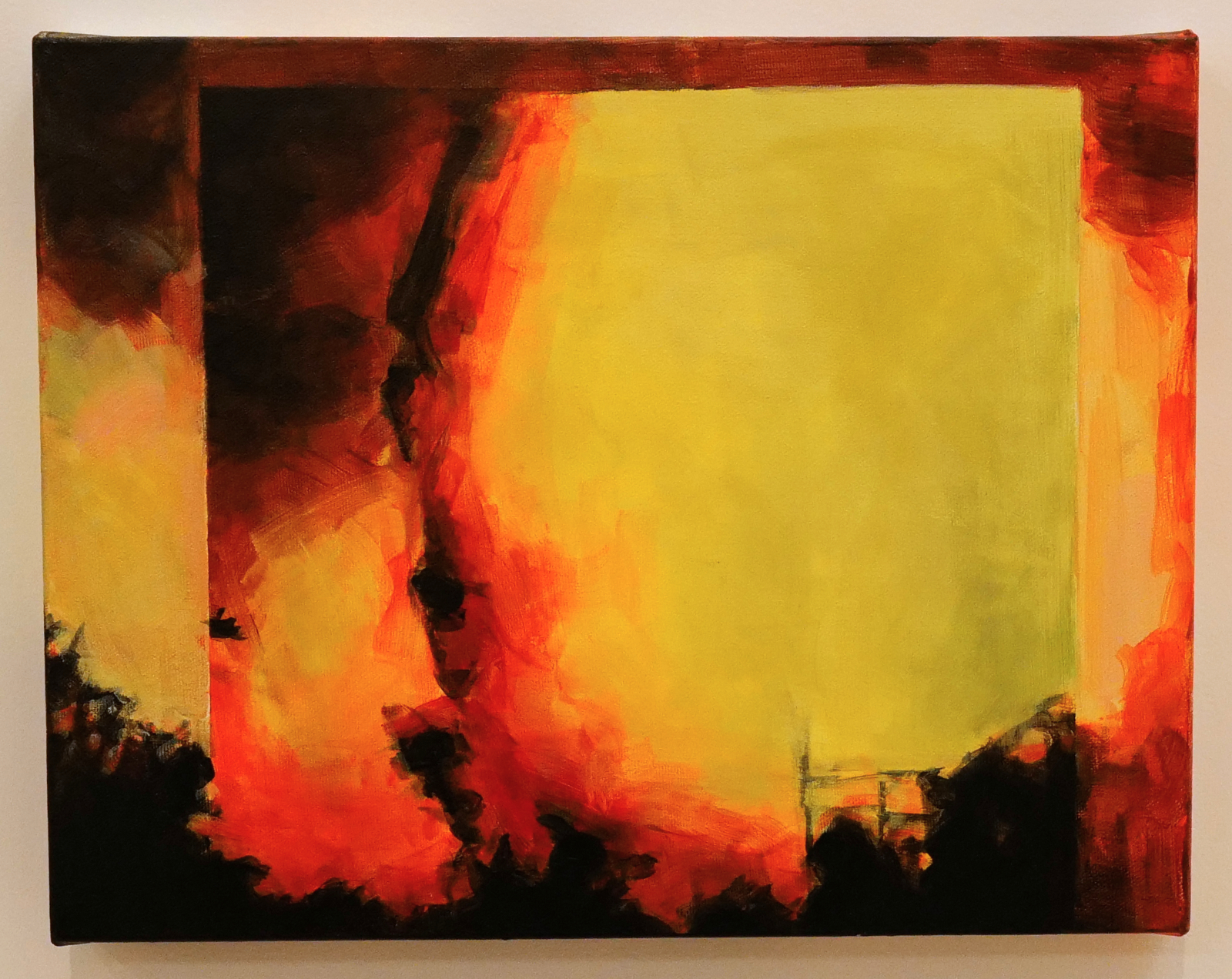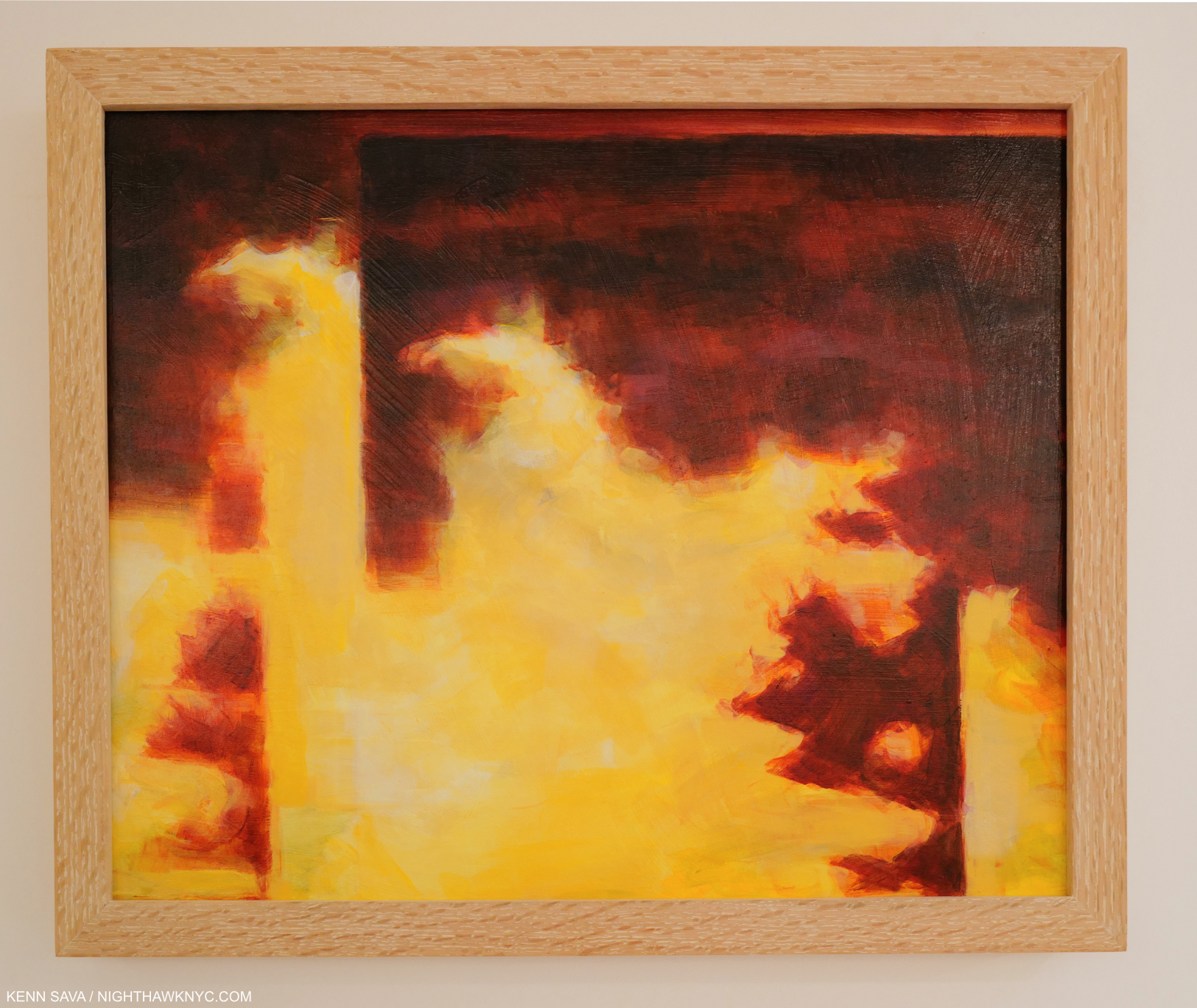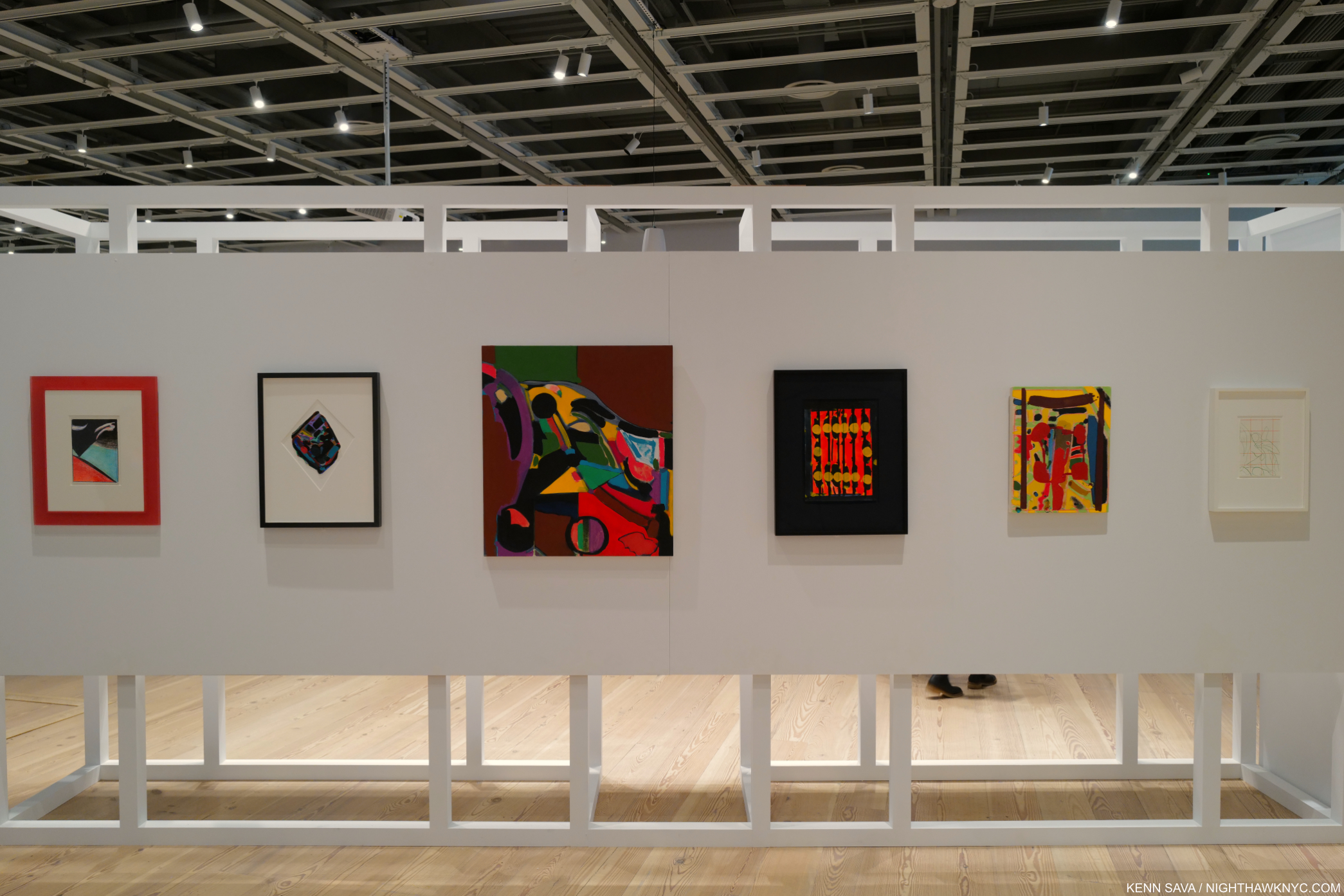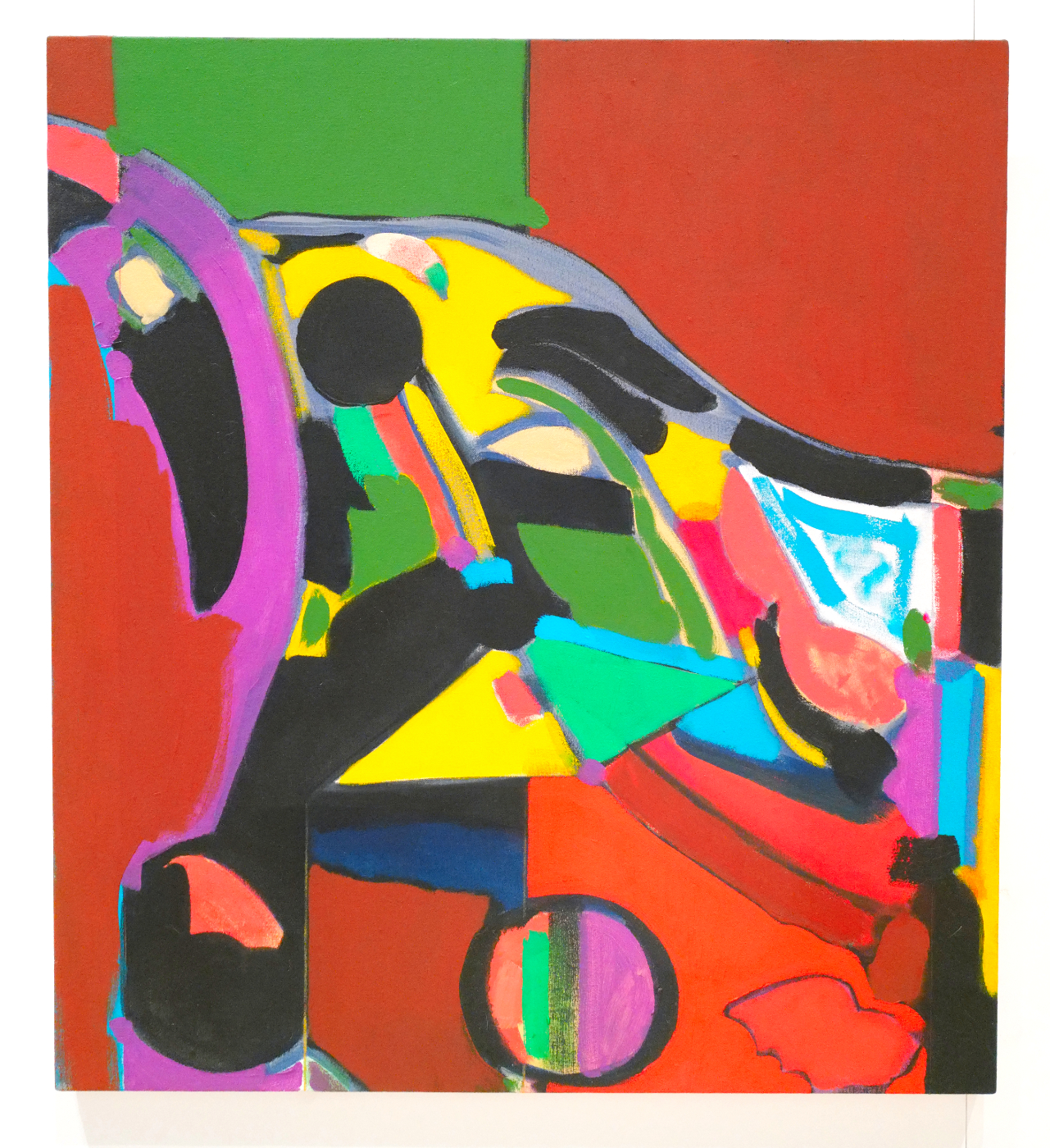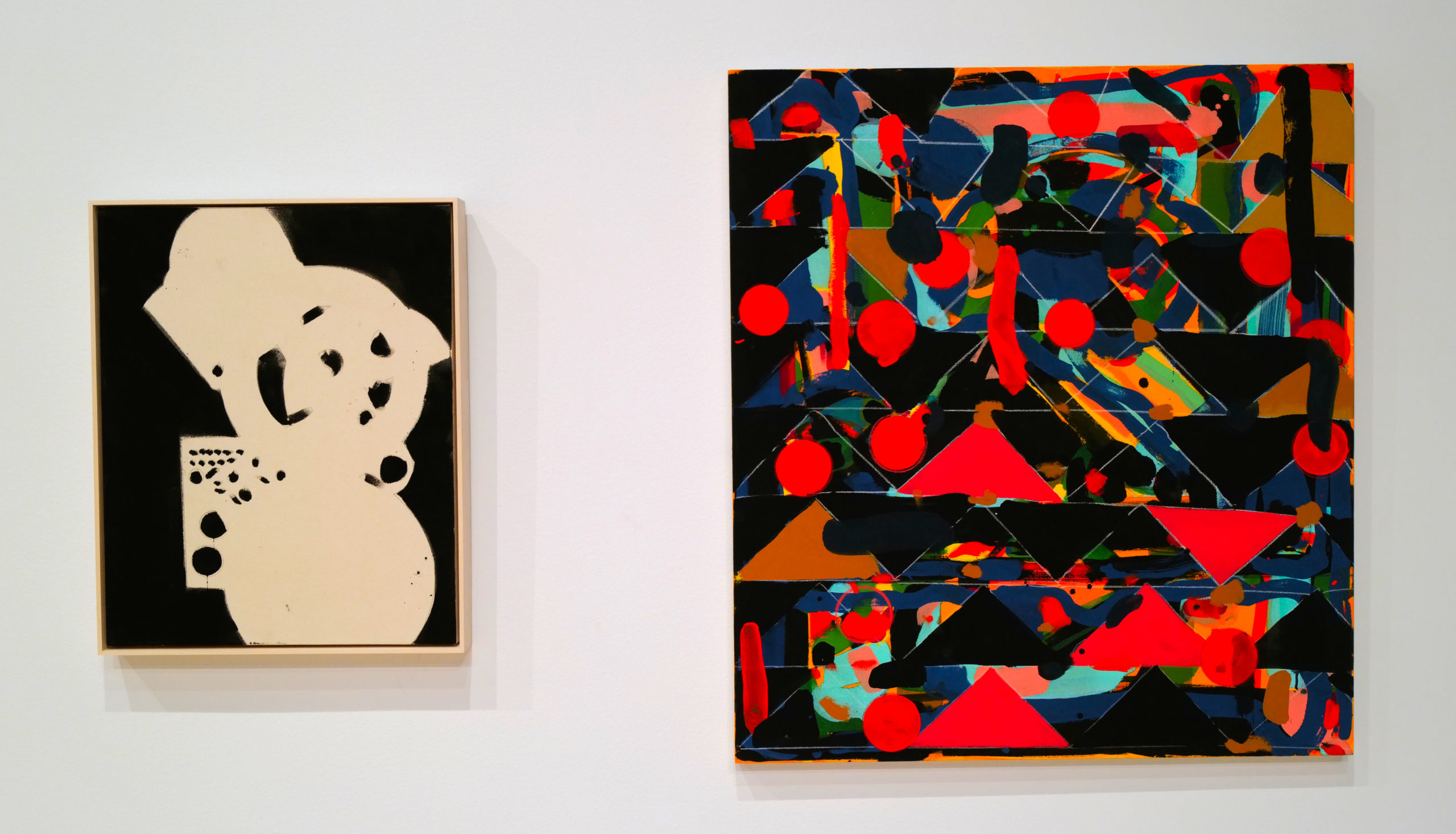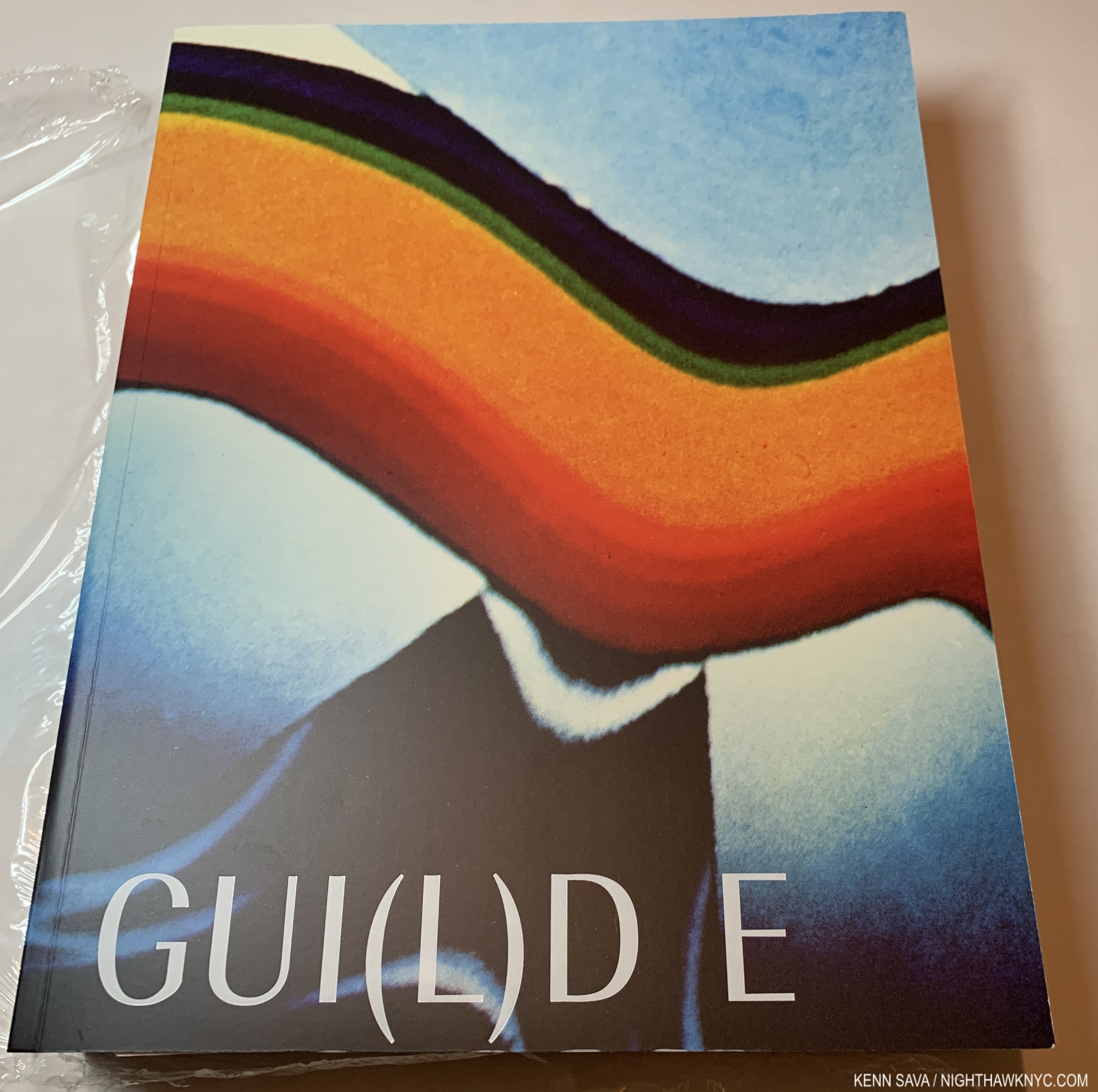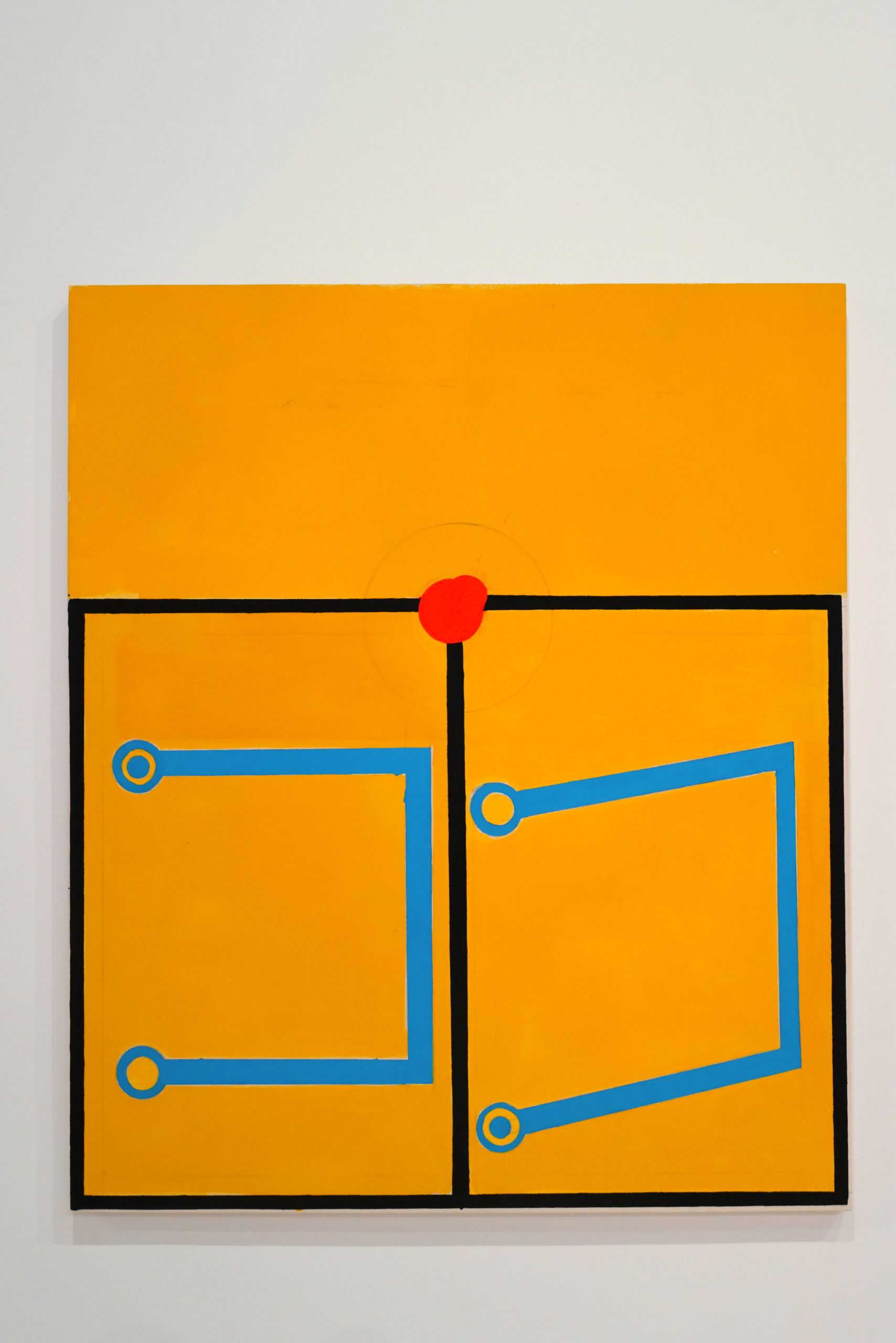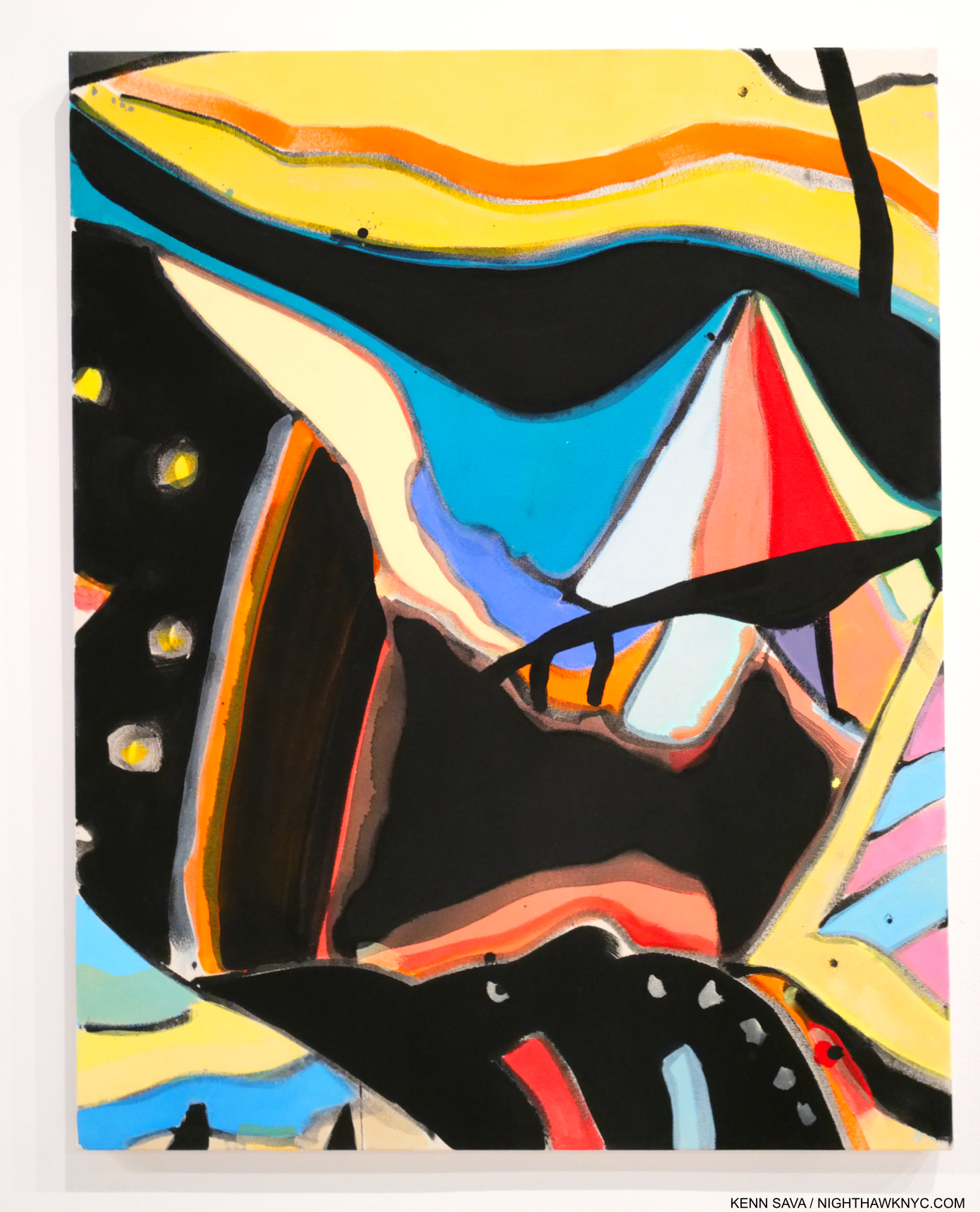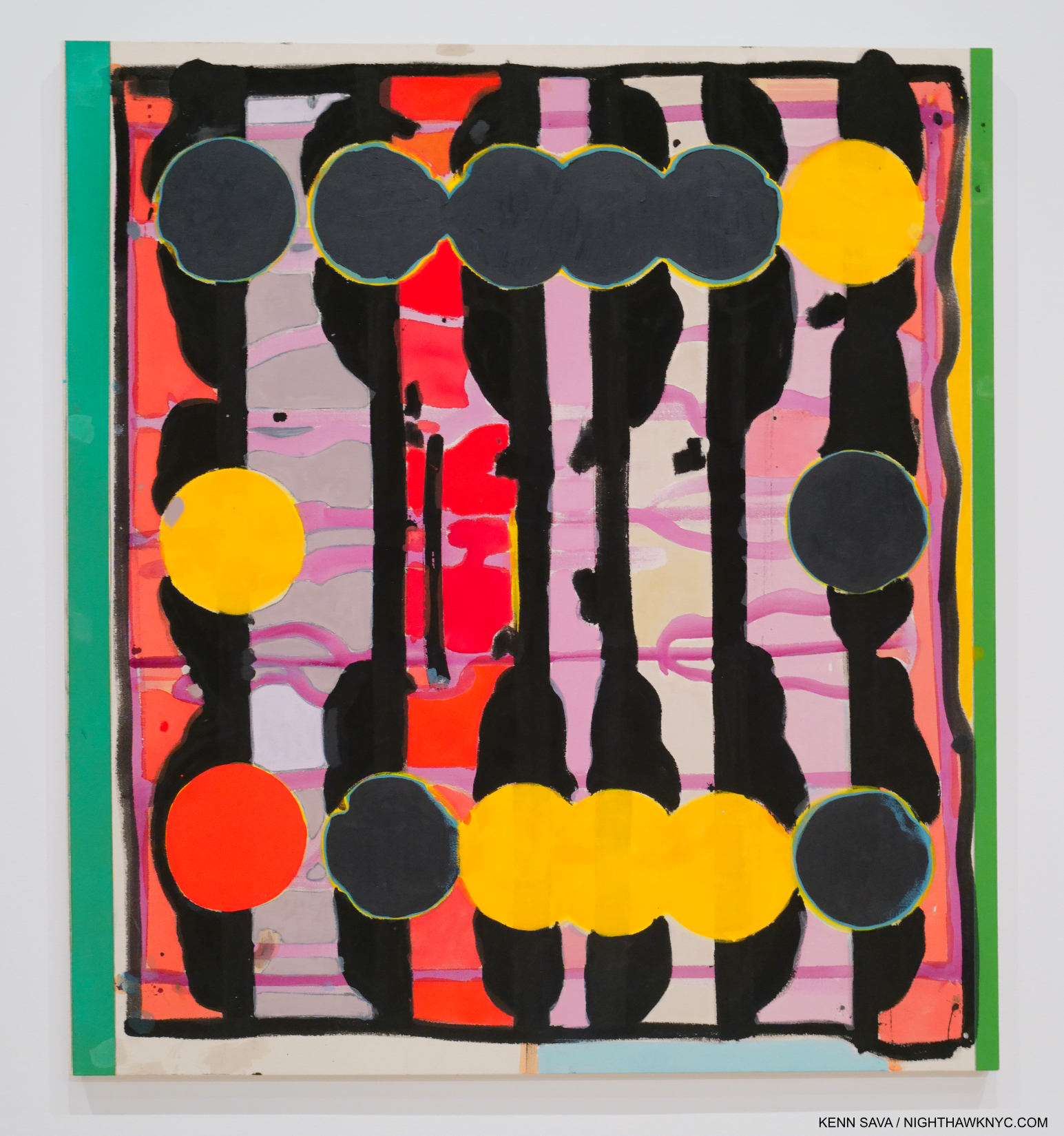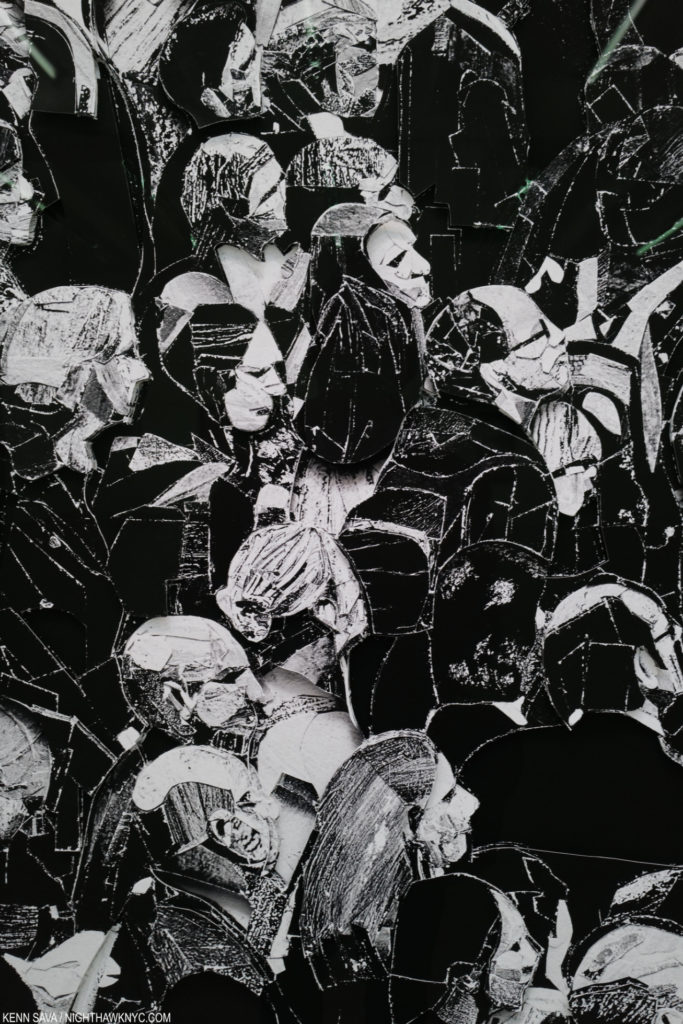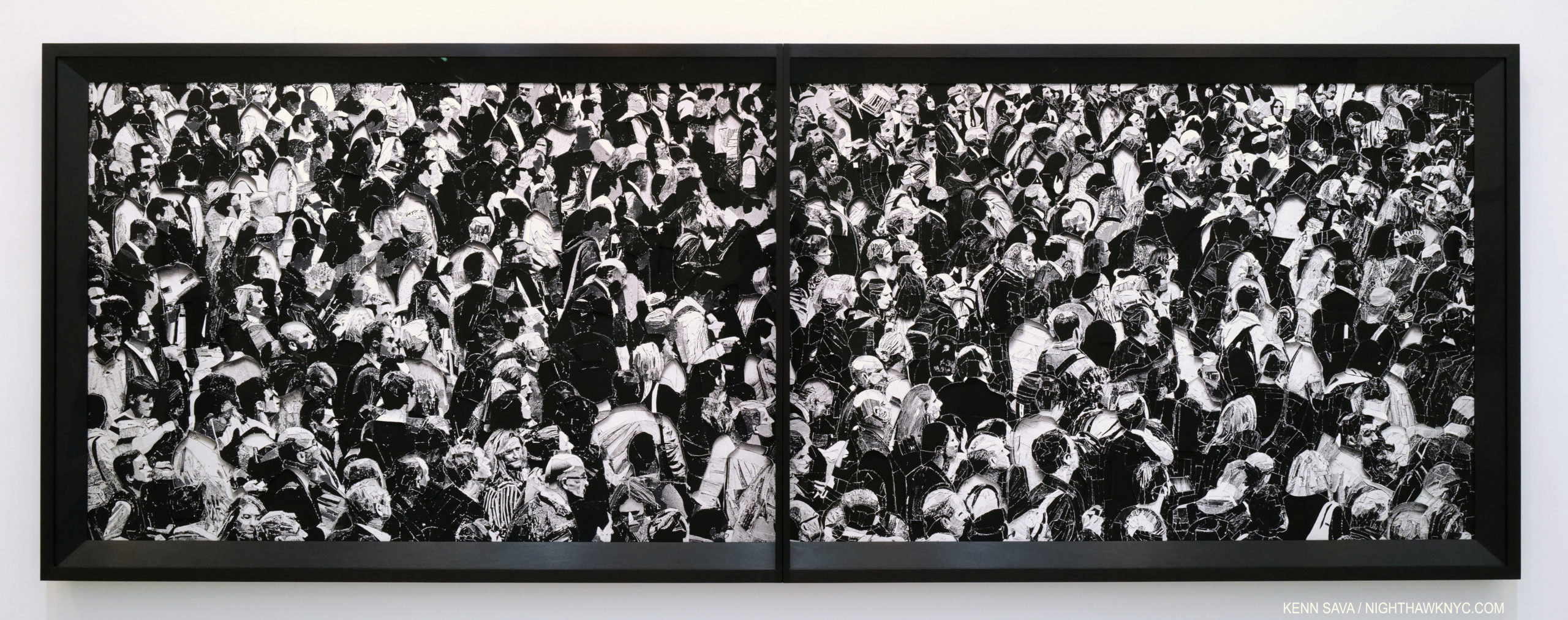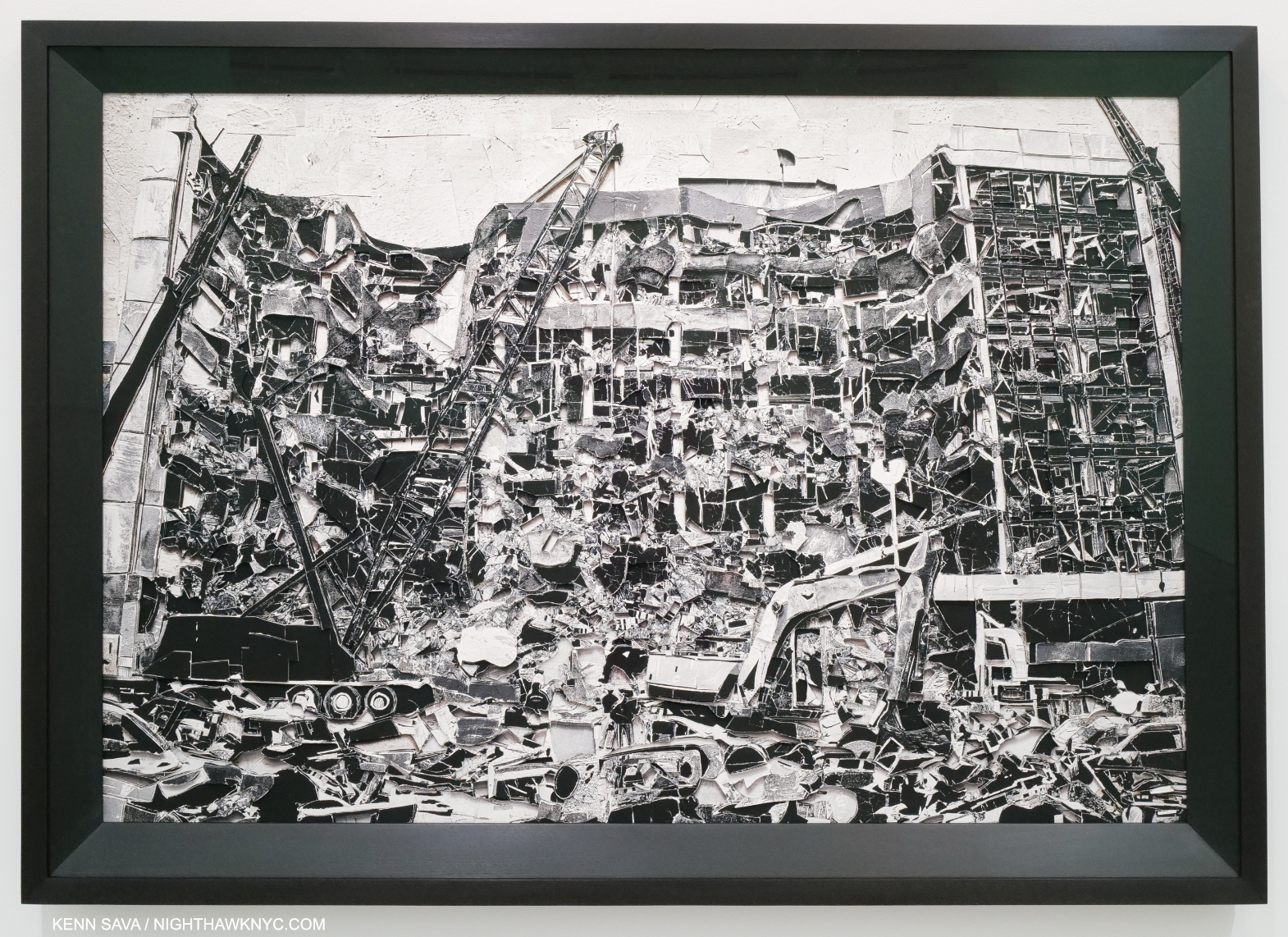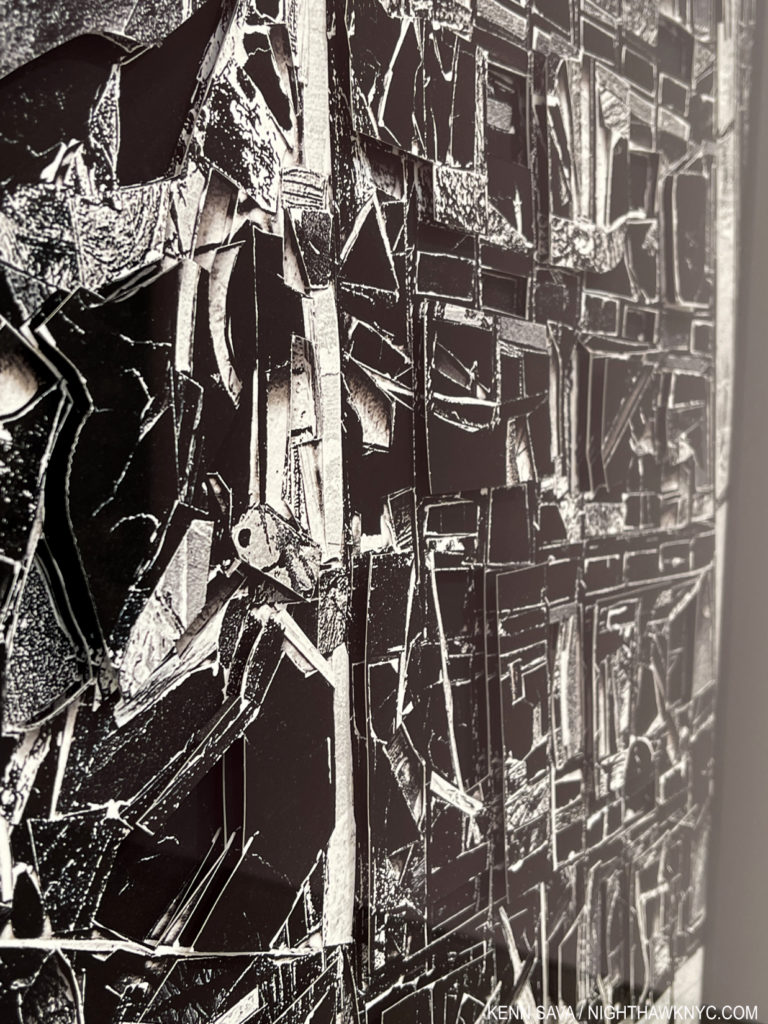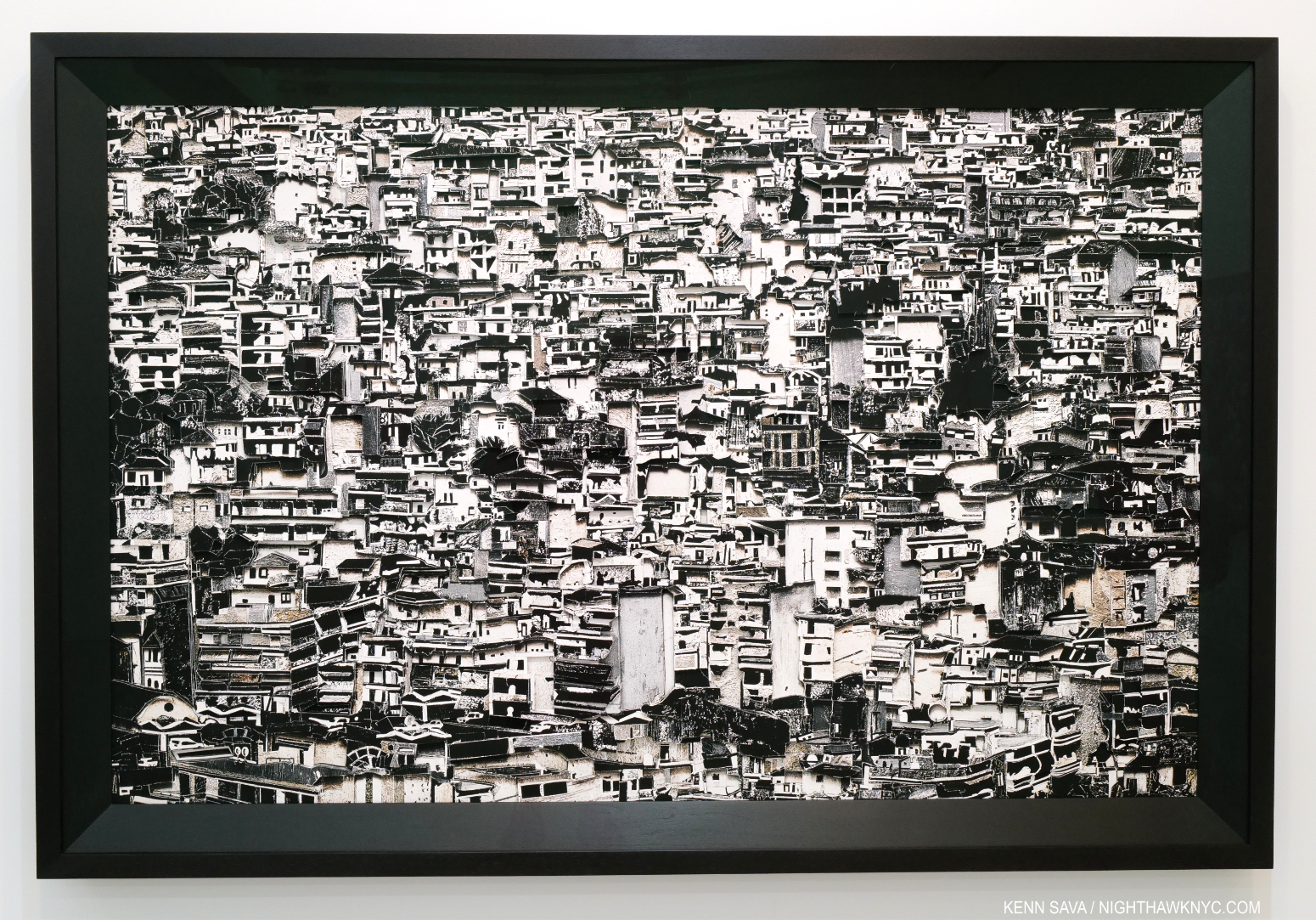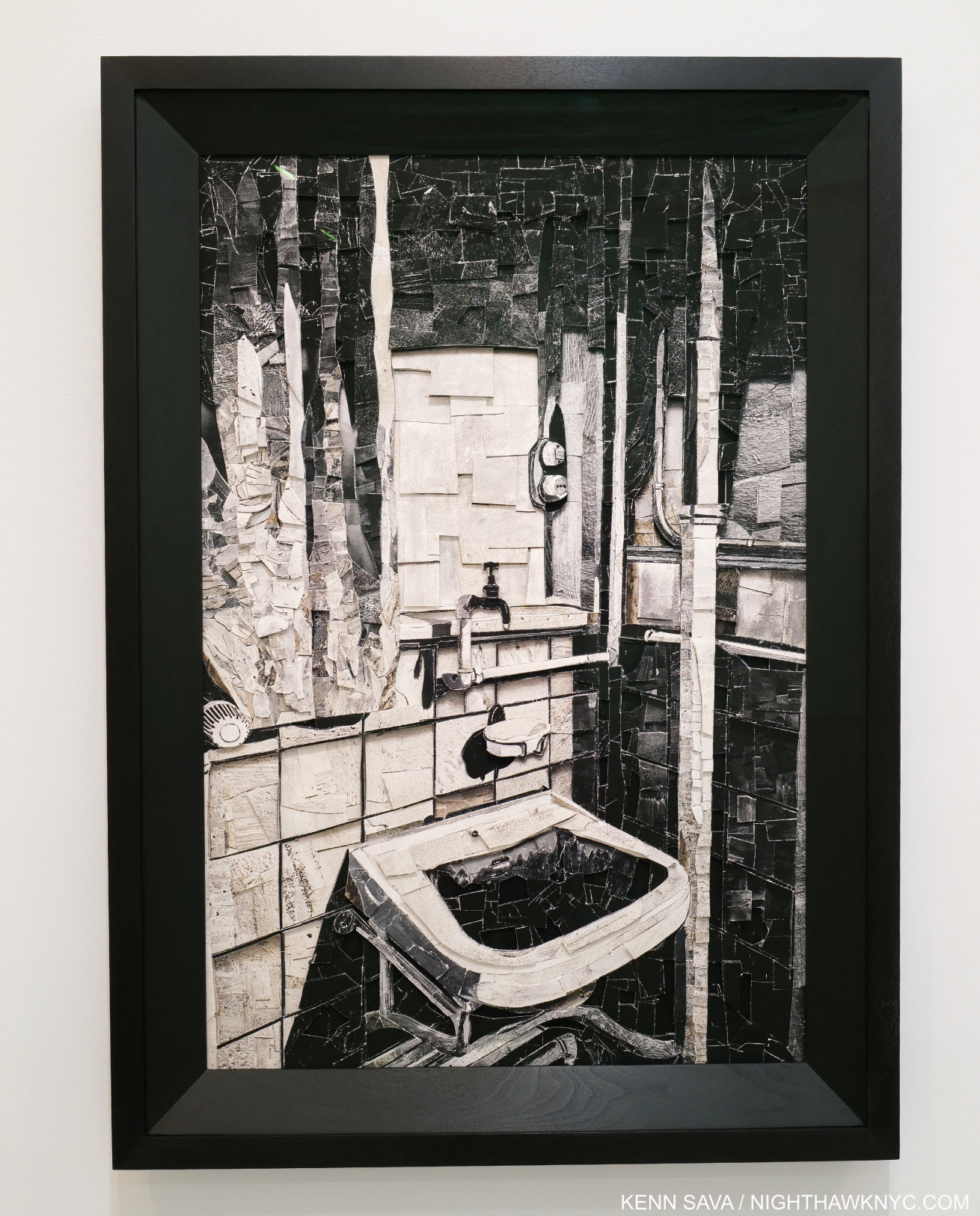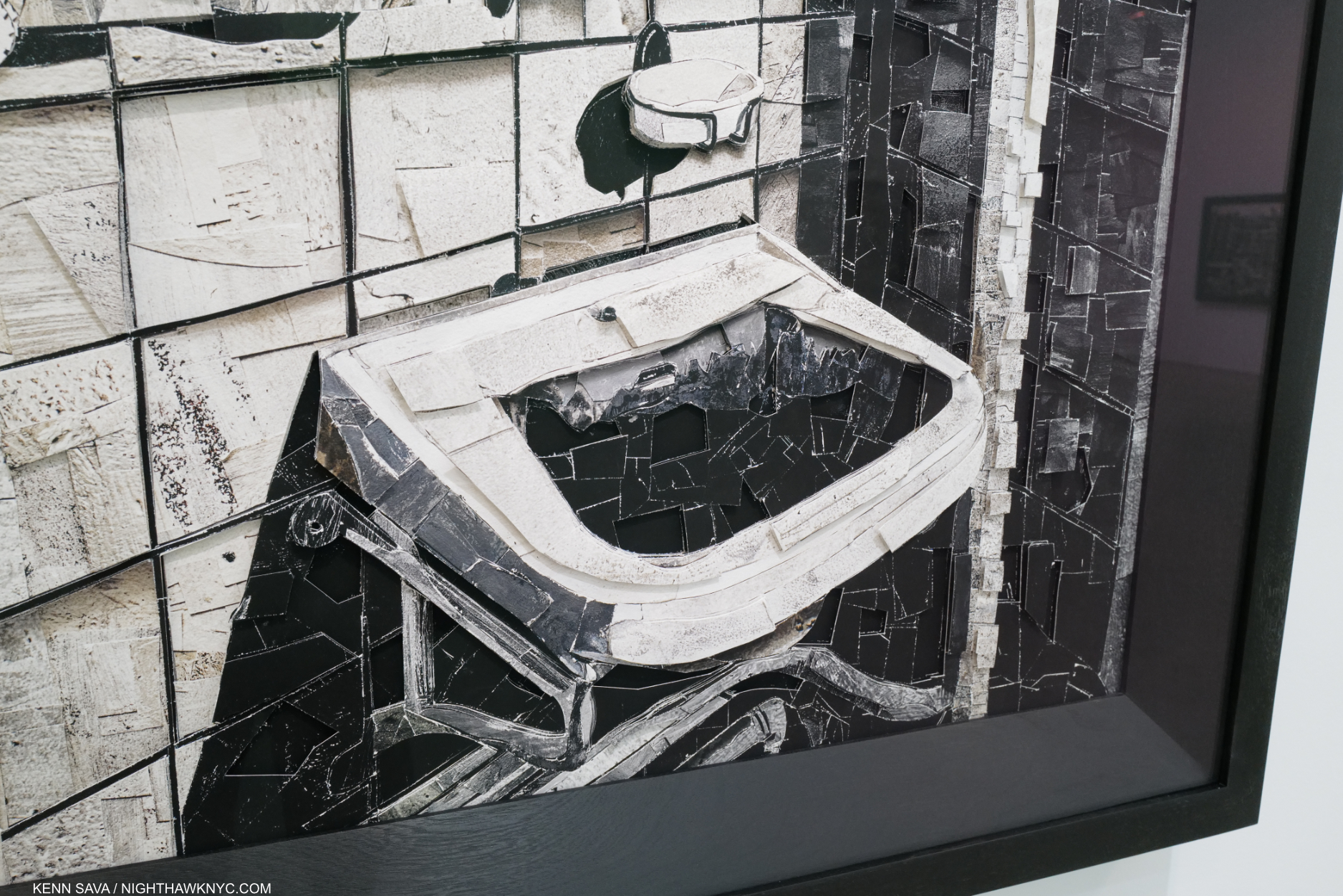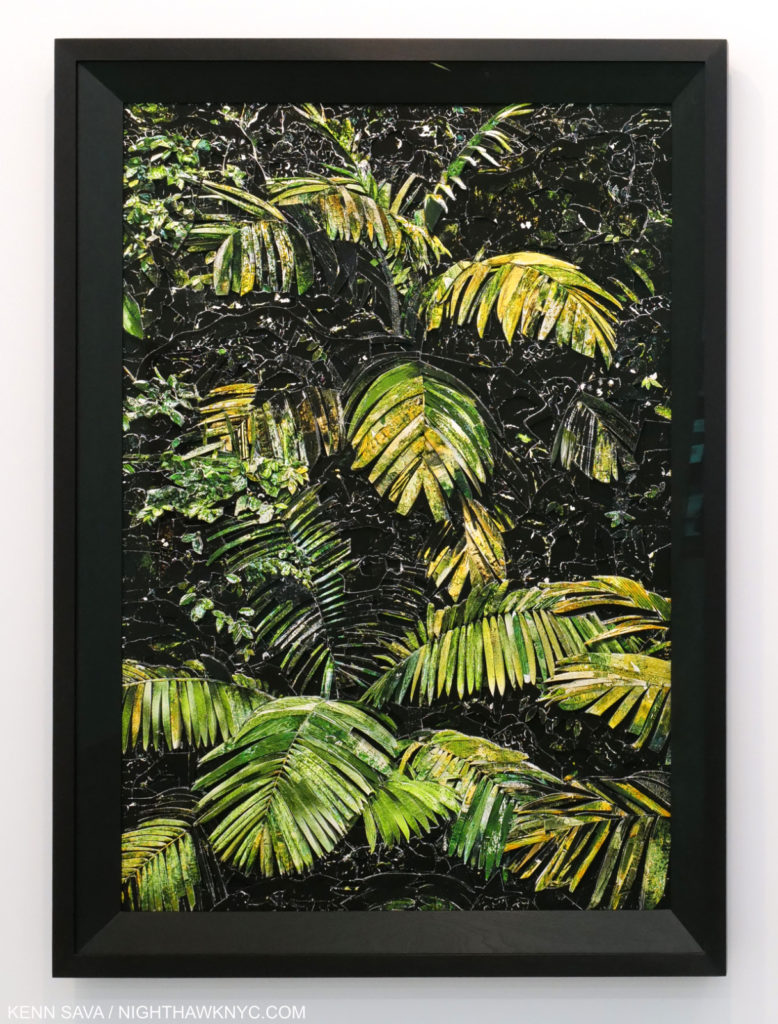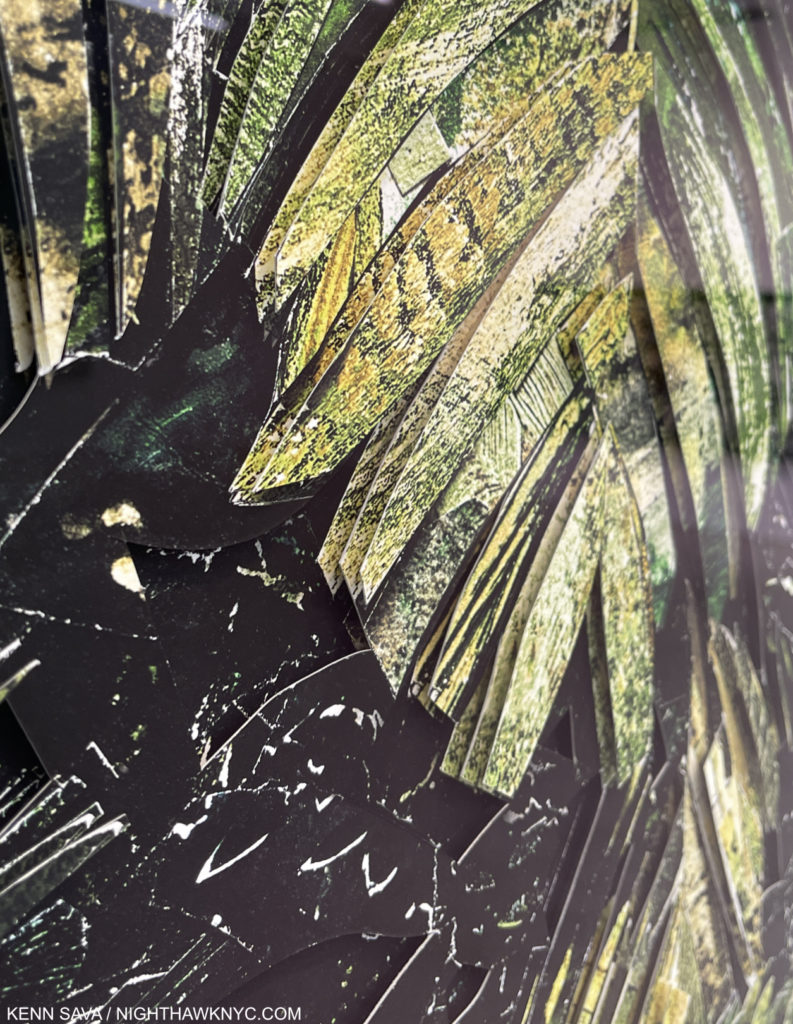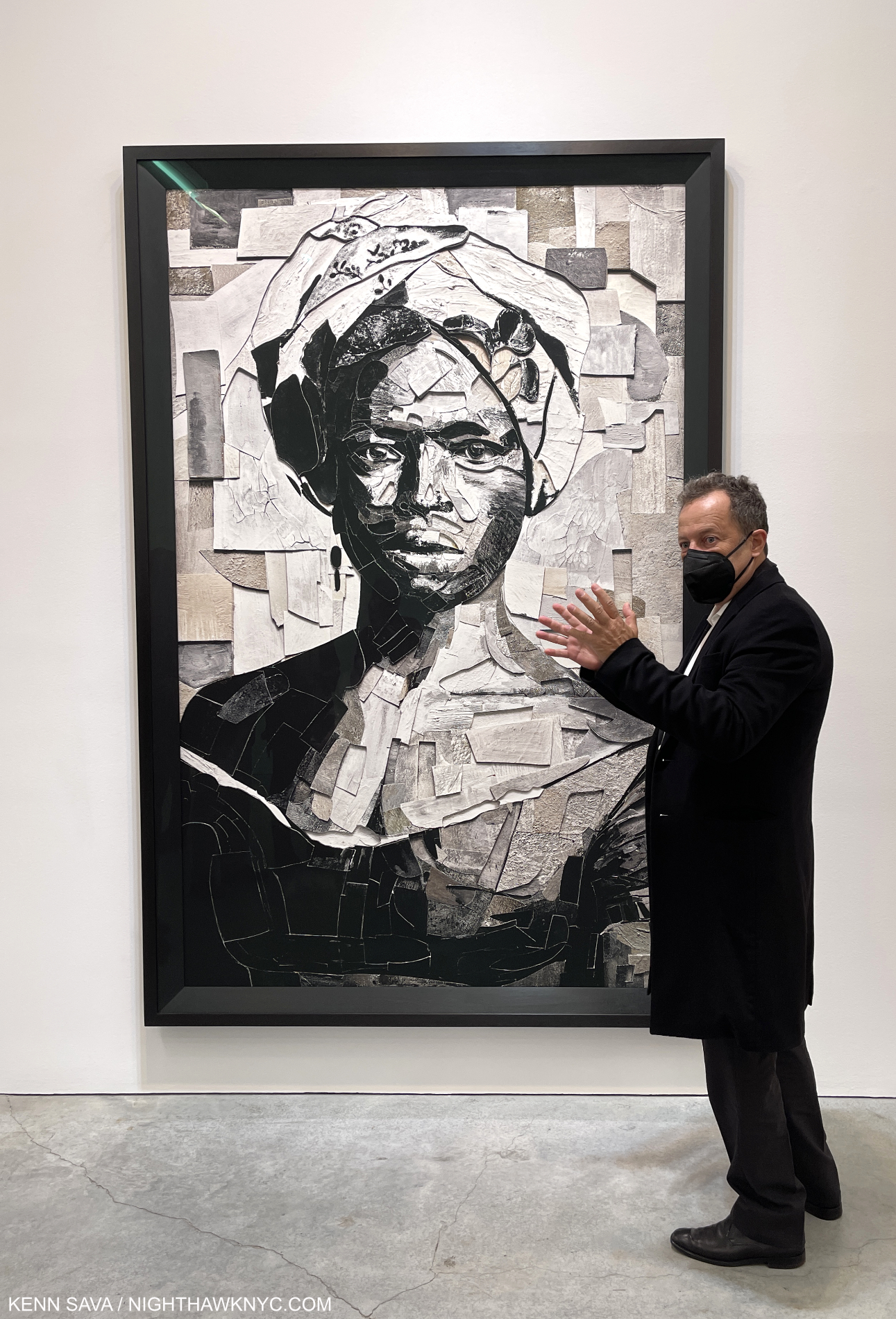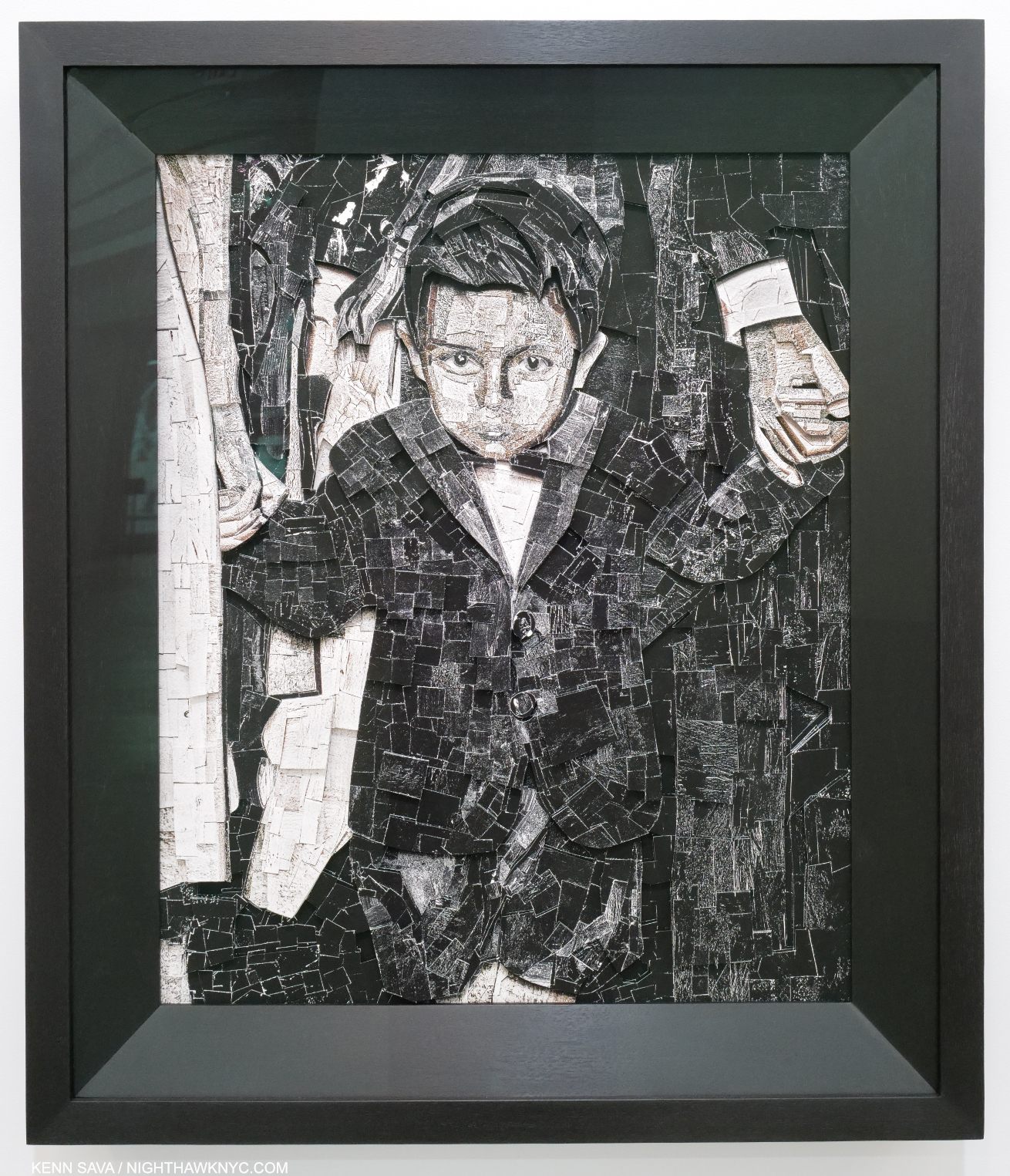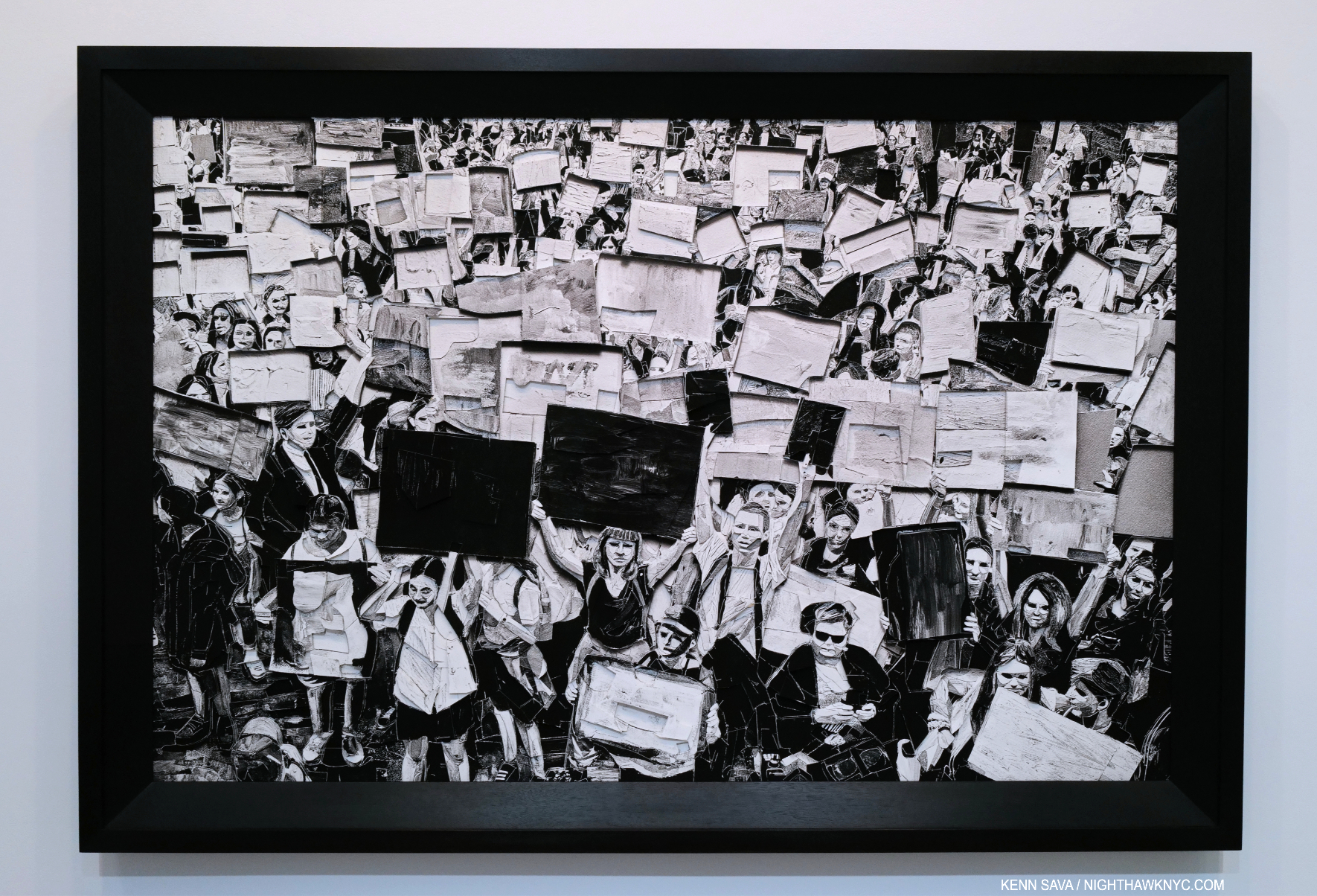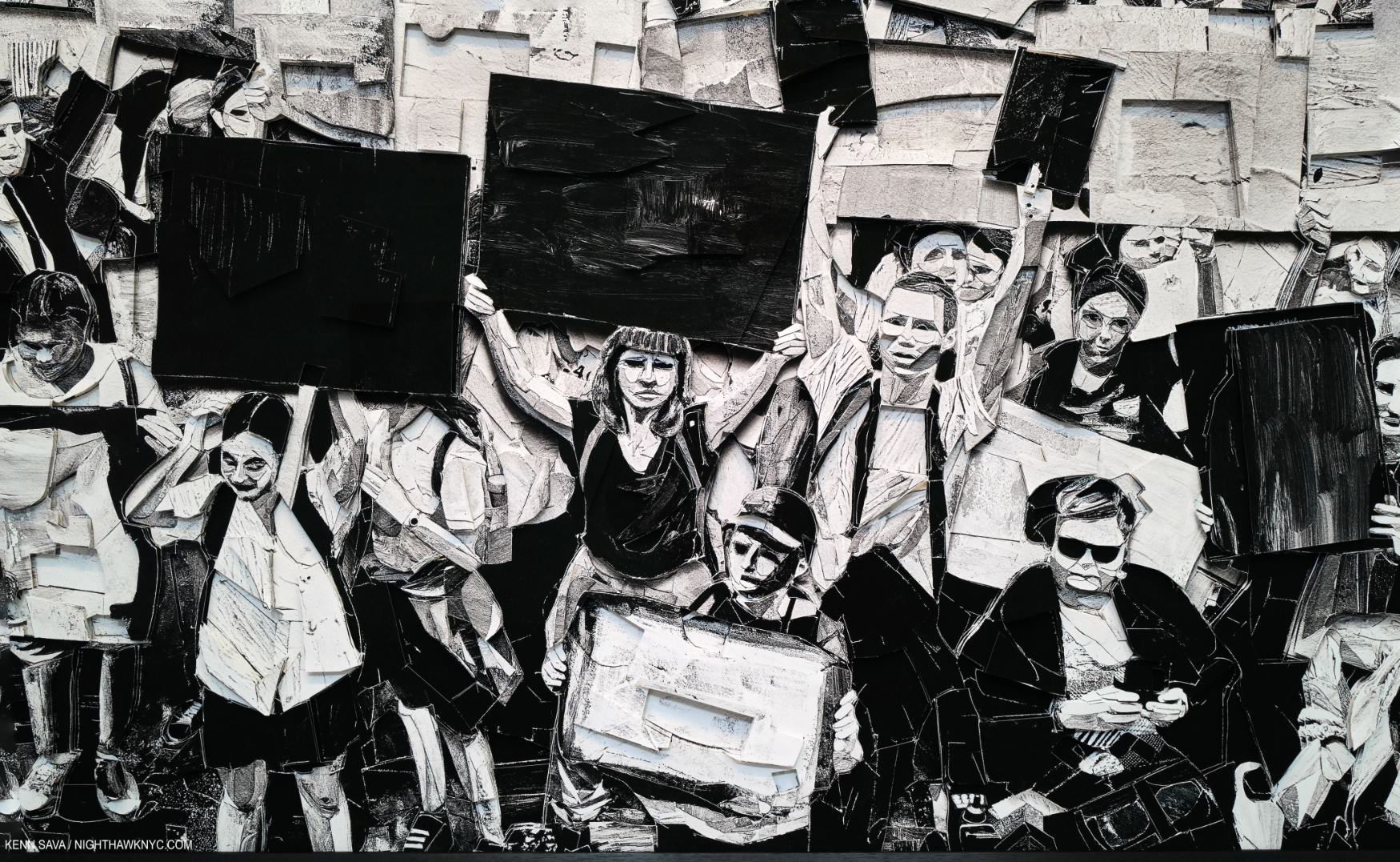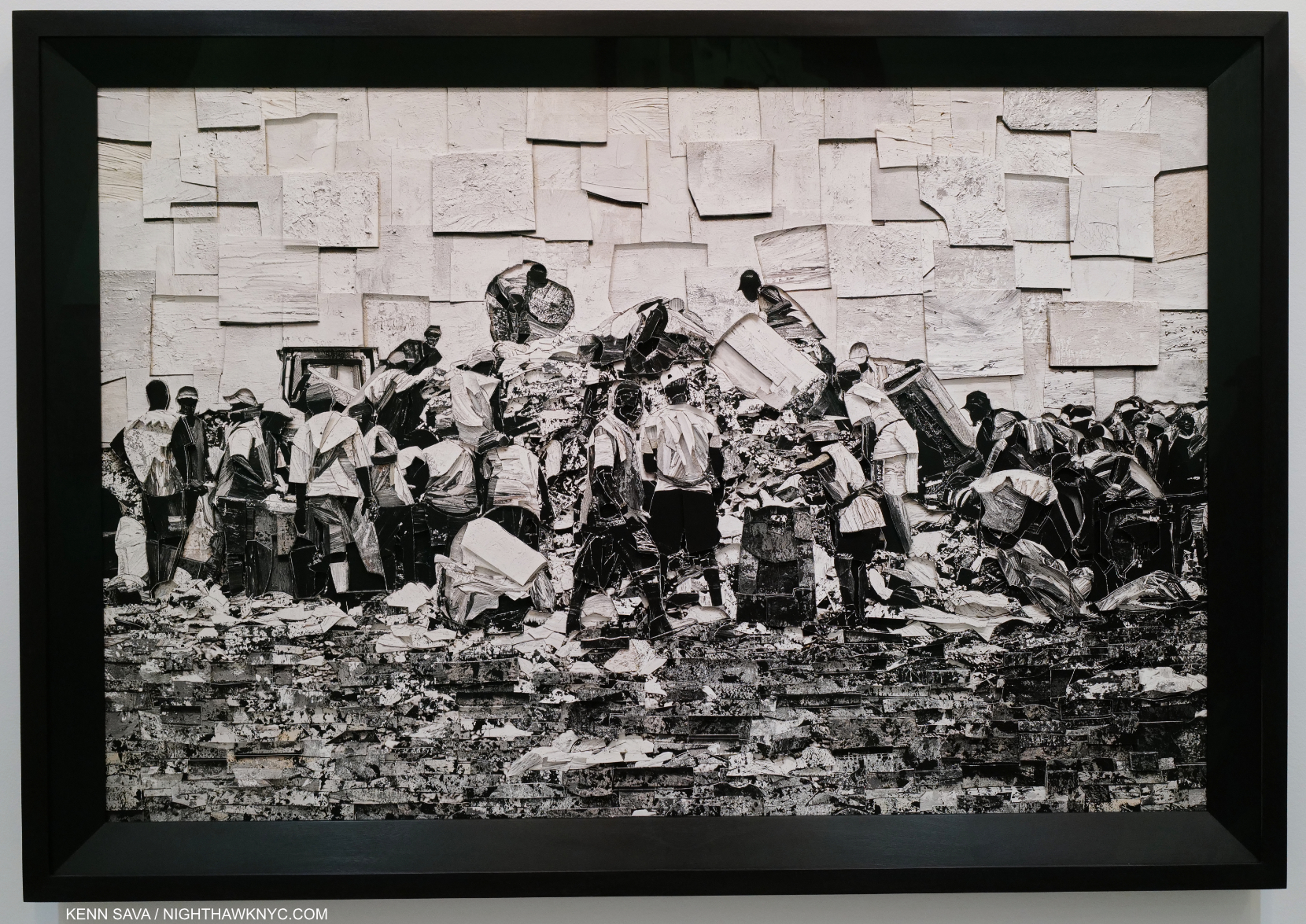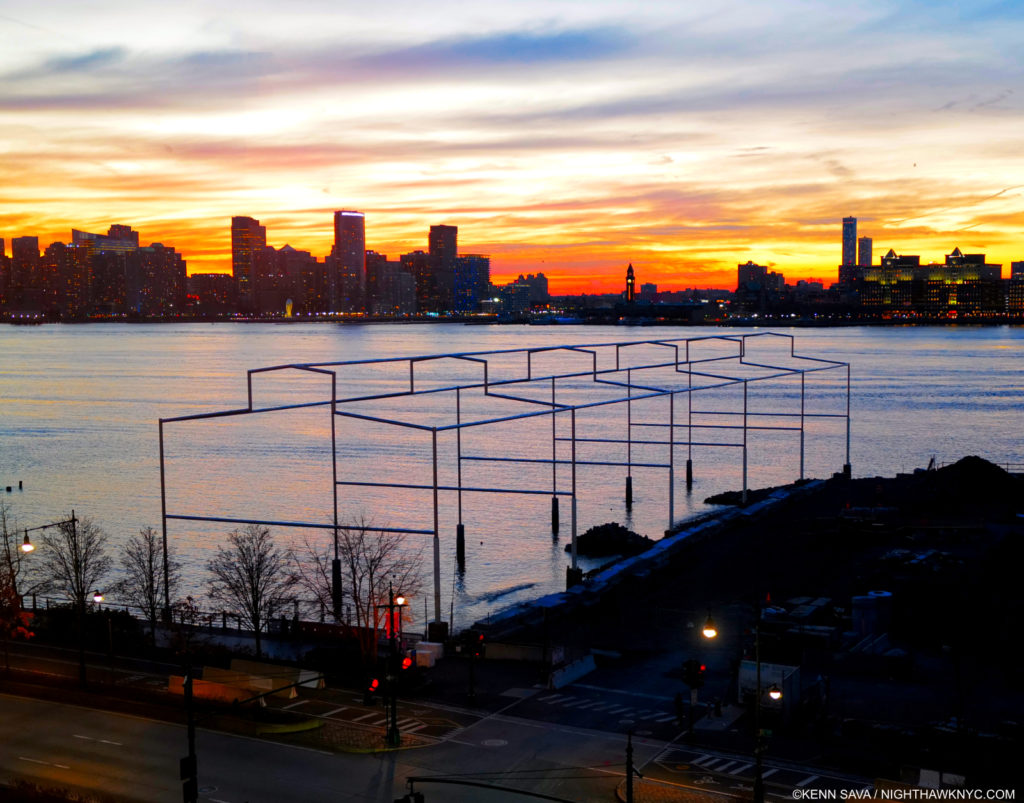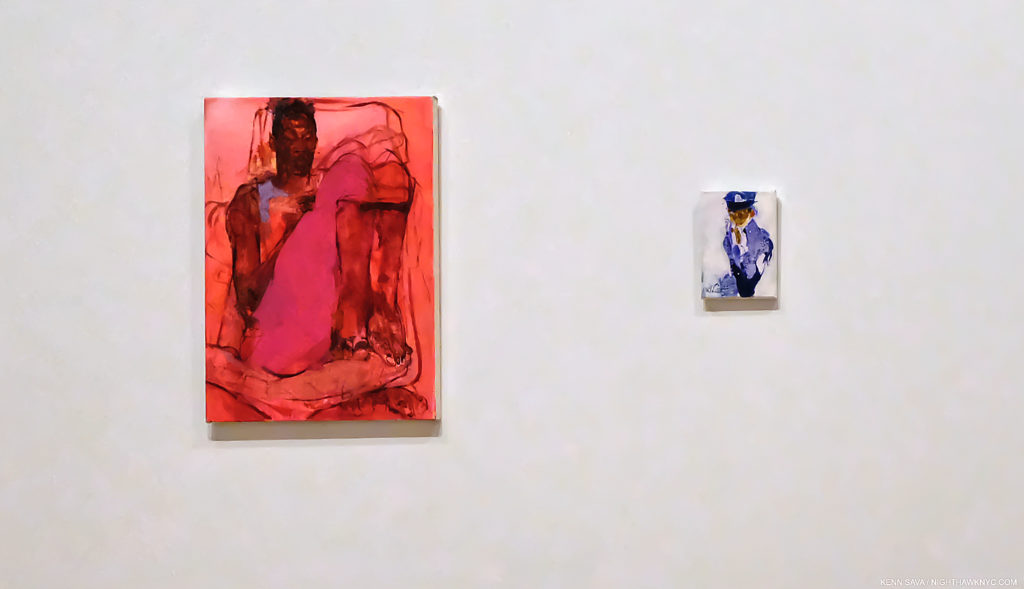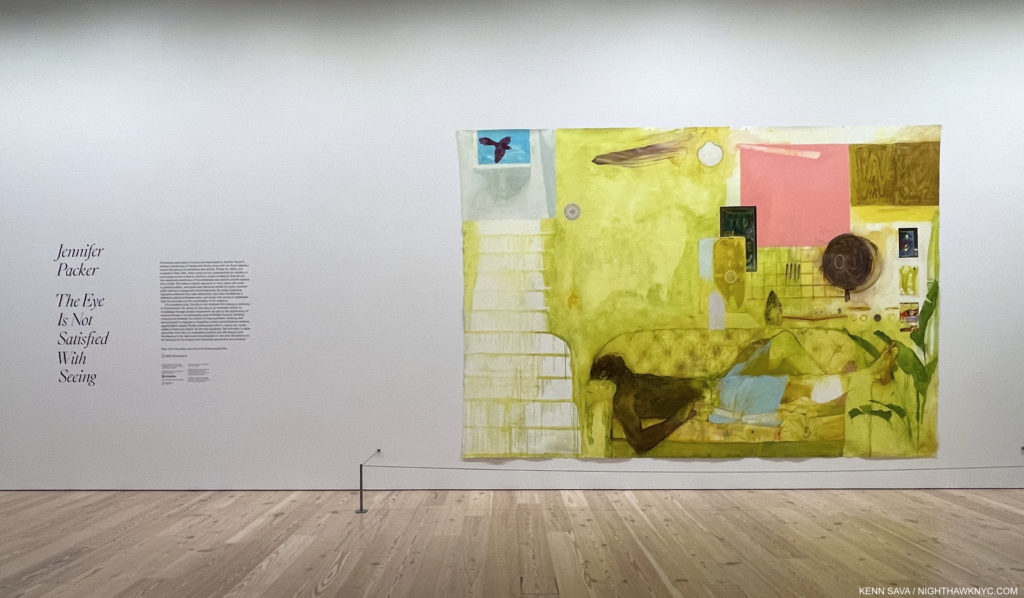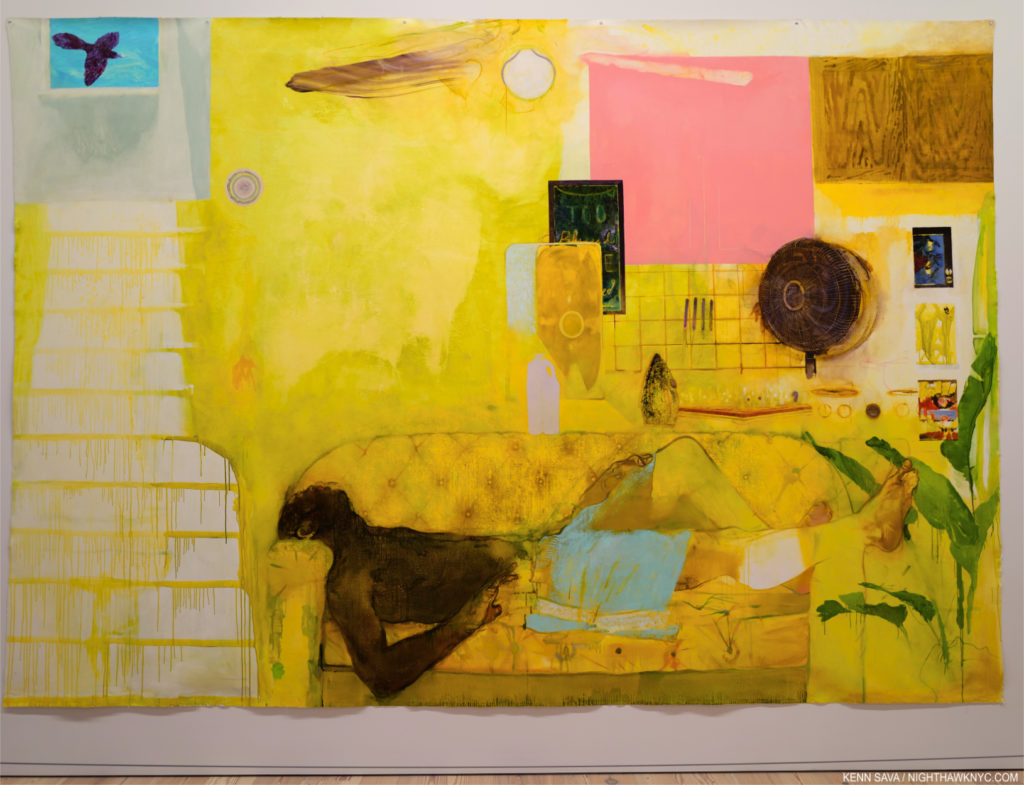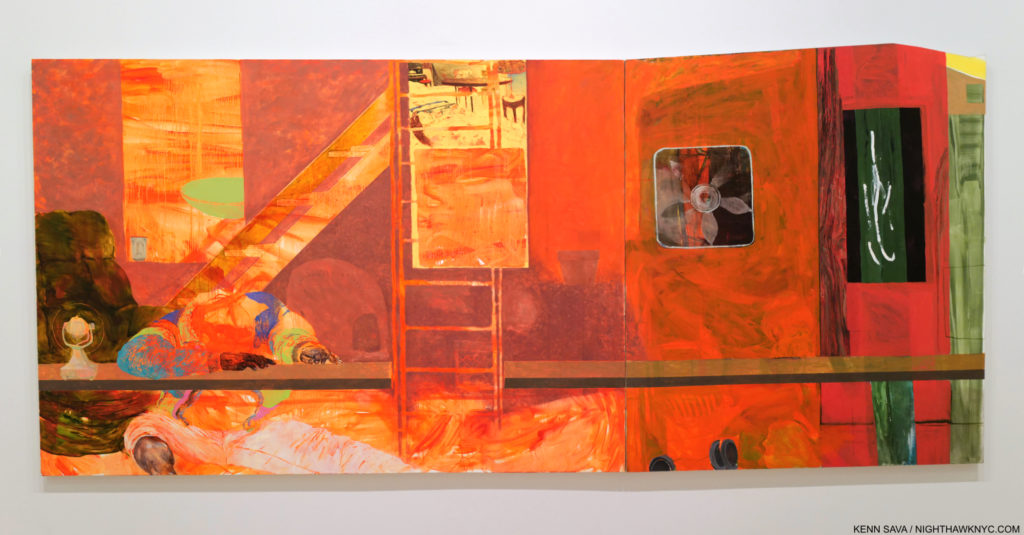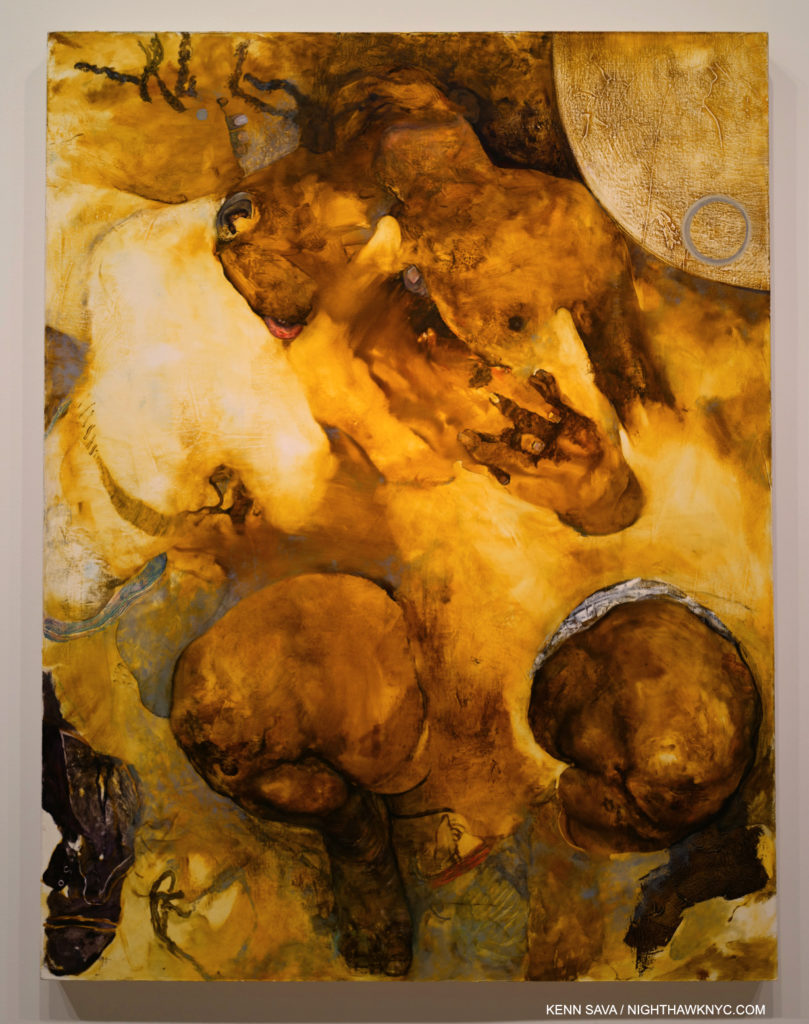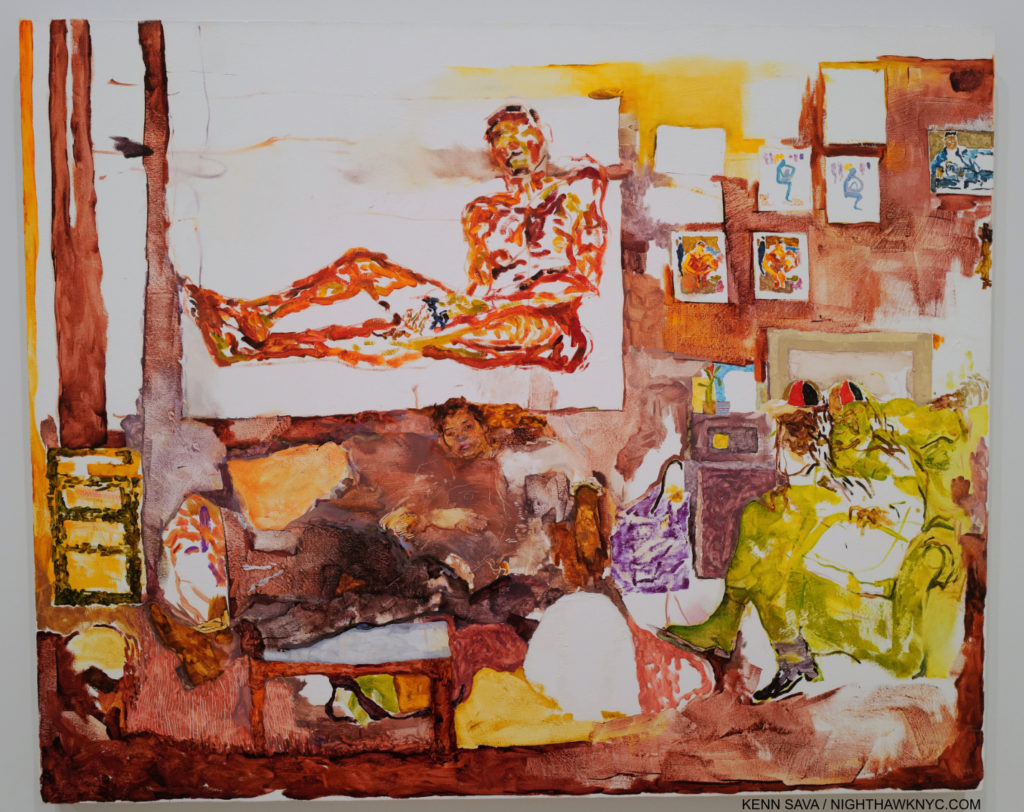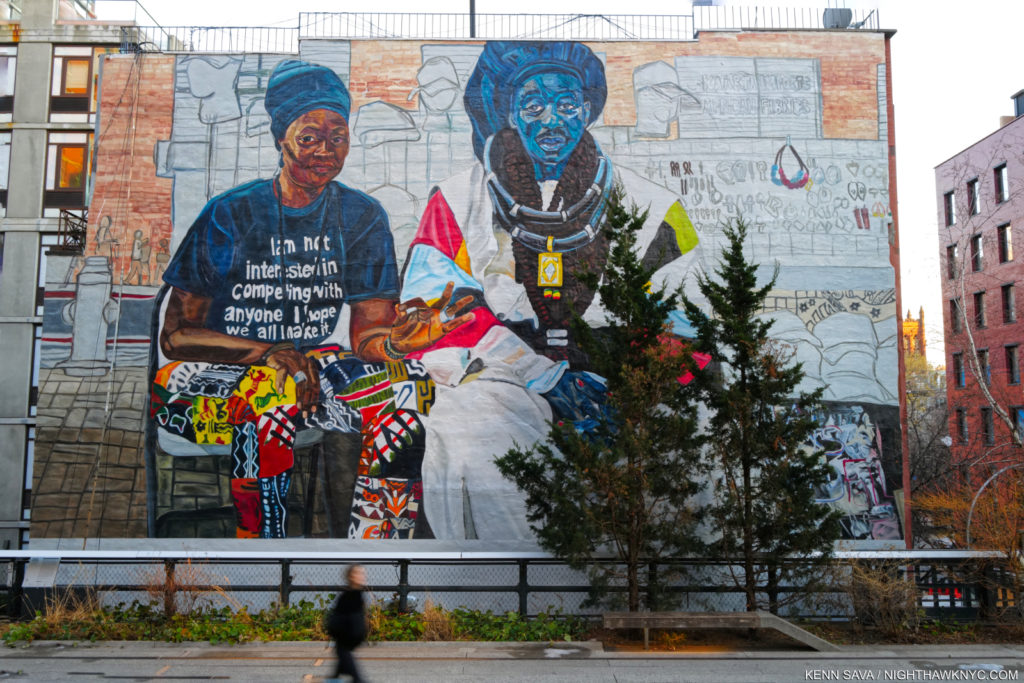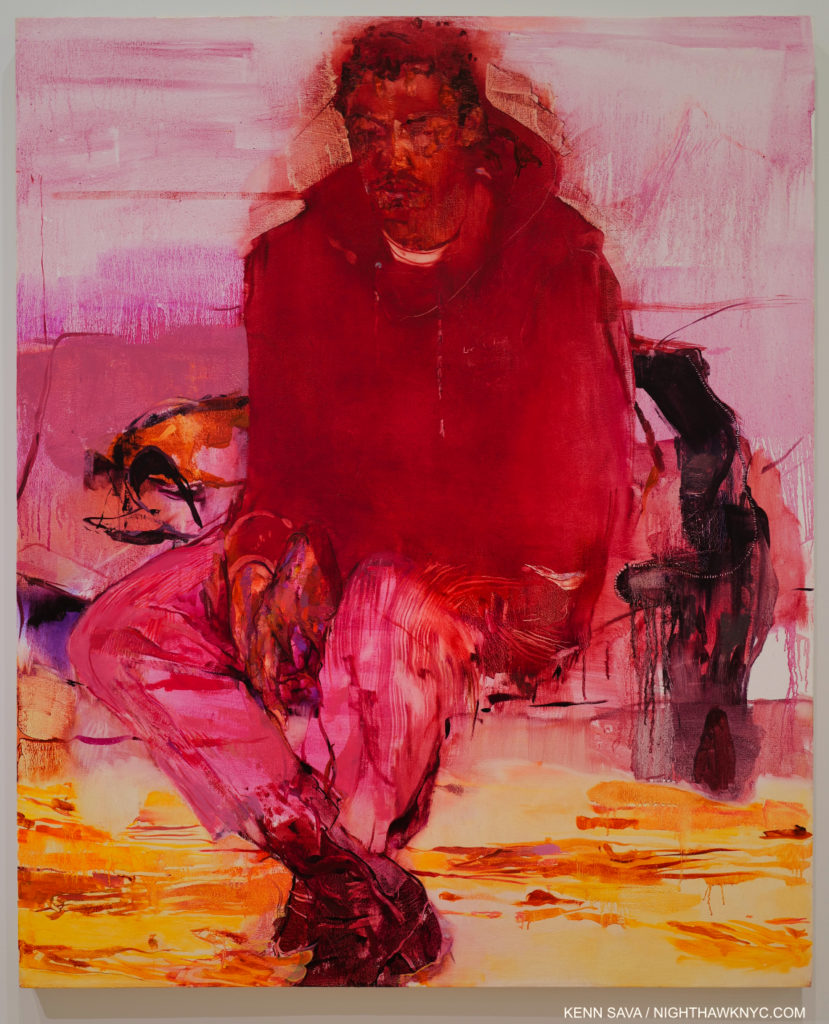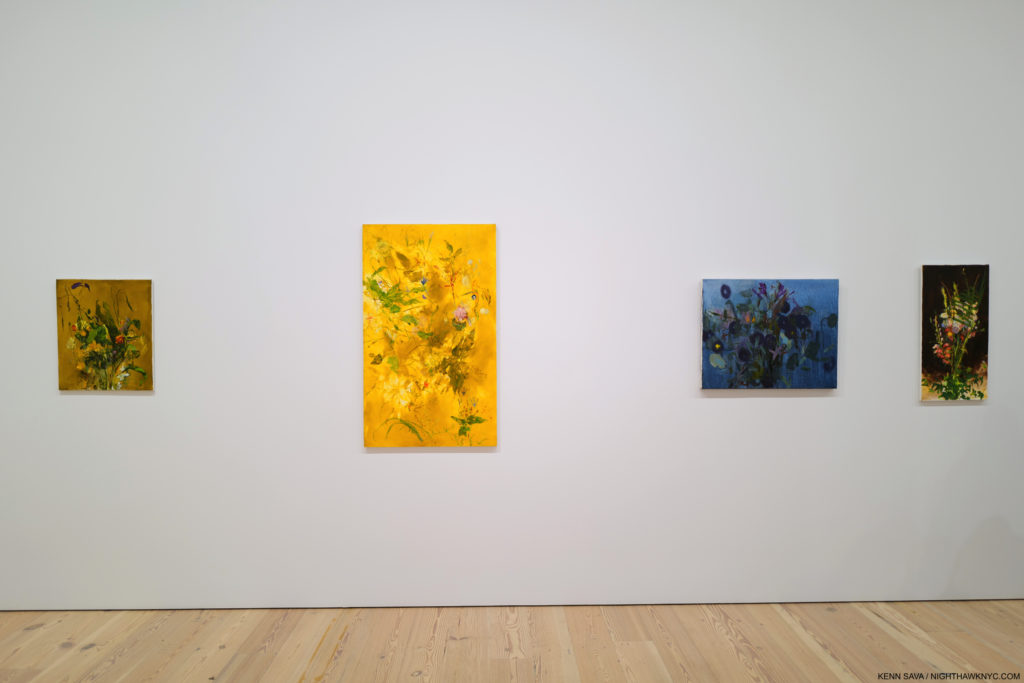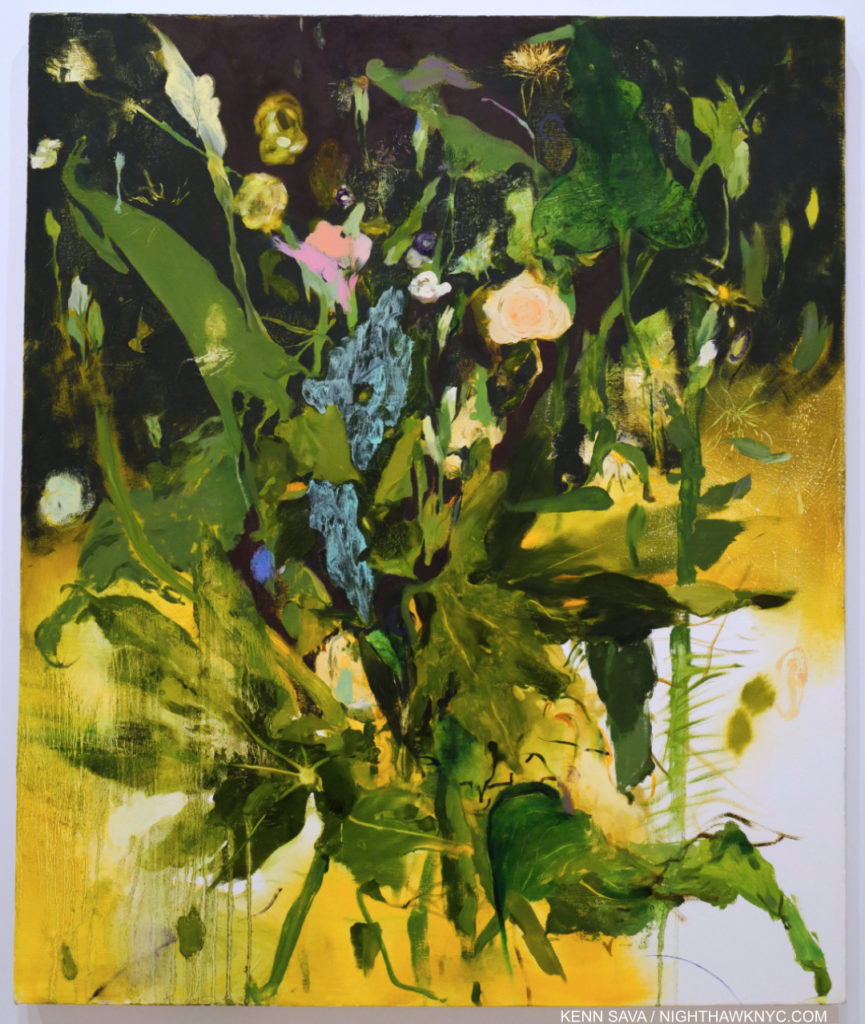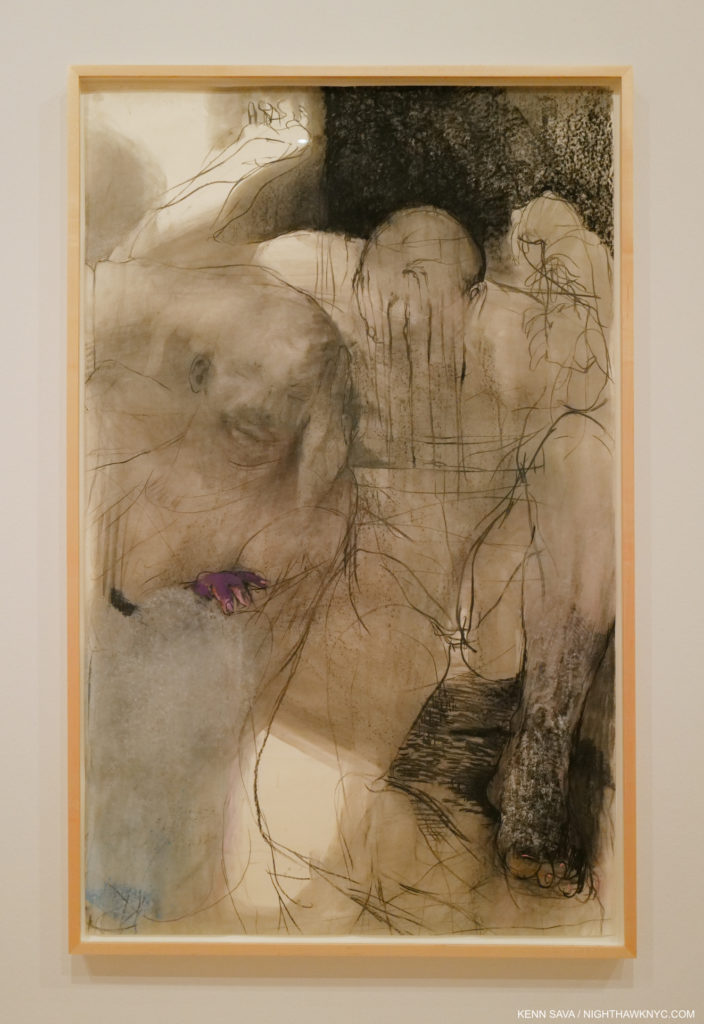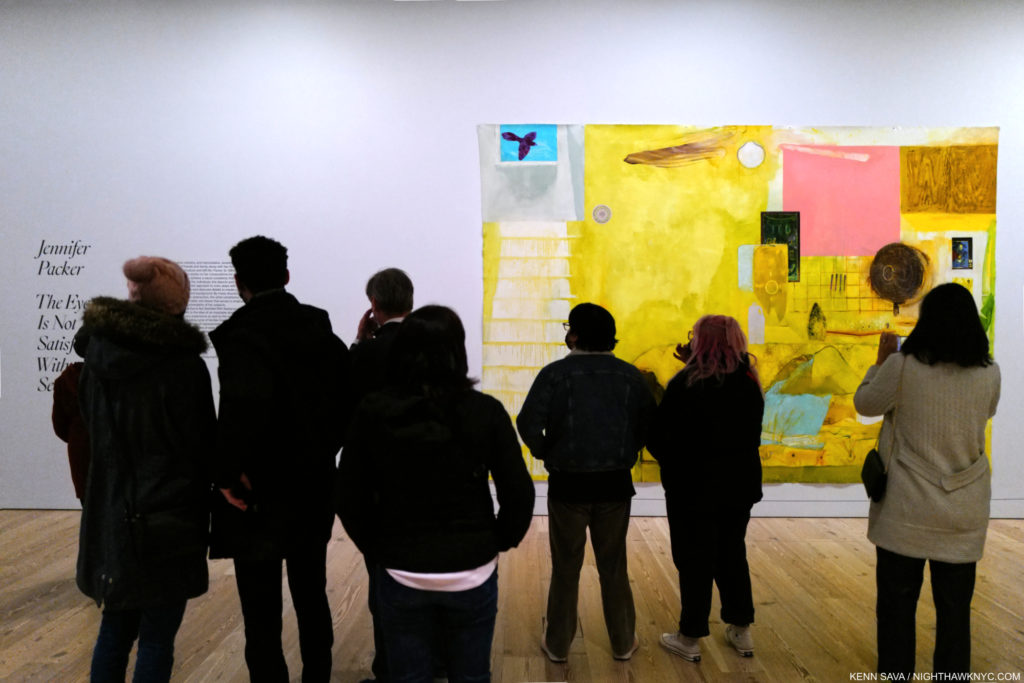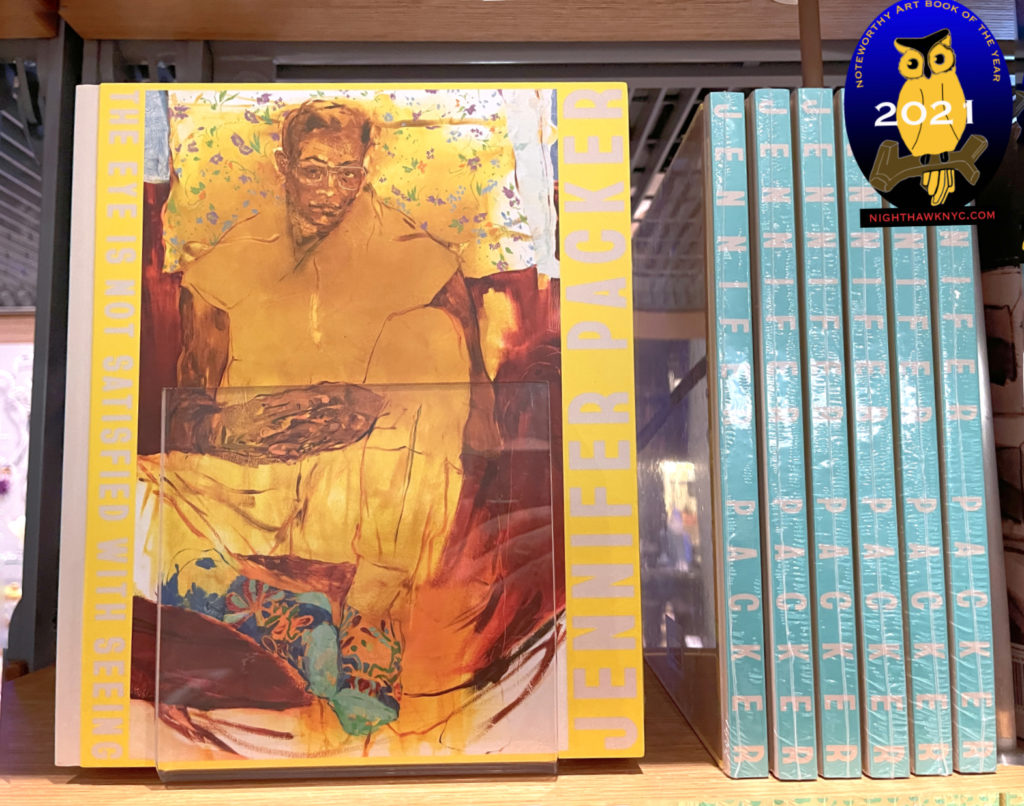Louise Bourgeois: Paintings is now over. If you missed it, this is one of the few places you can still see a bit of it. If you appreciate that, please donate to support it. Thank you.
Written & Photographed by Kenn Sava
Show Seen: Louise Bourgeois: Paintings at The Metropolitan Museum of Art
In spite of having seen at least two prior shows of her work, until the moment I walked in through the entrance, above, I had no idea that Louise Bourgeois was also a Painter. This wonderfully concise show proved a revelation. Her Paintings, which predate her well-known Sculpture, turn out to be every bit as unique, personal, and captivating as her free-standing pieces.
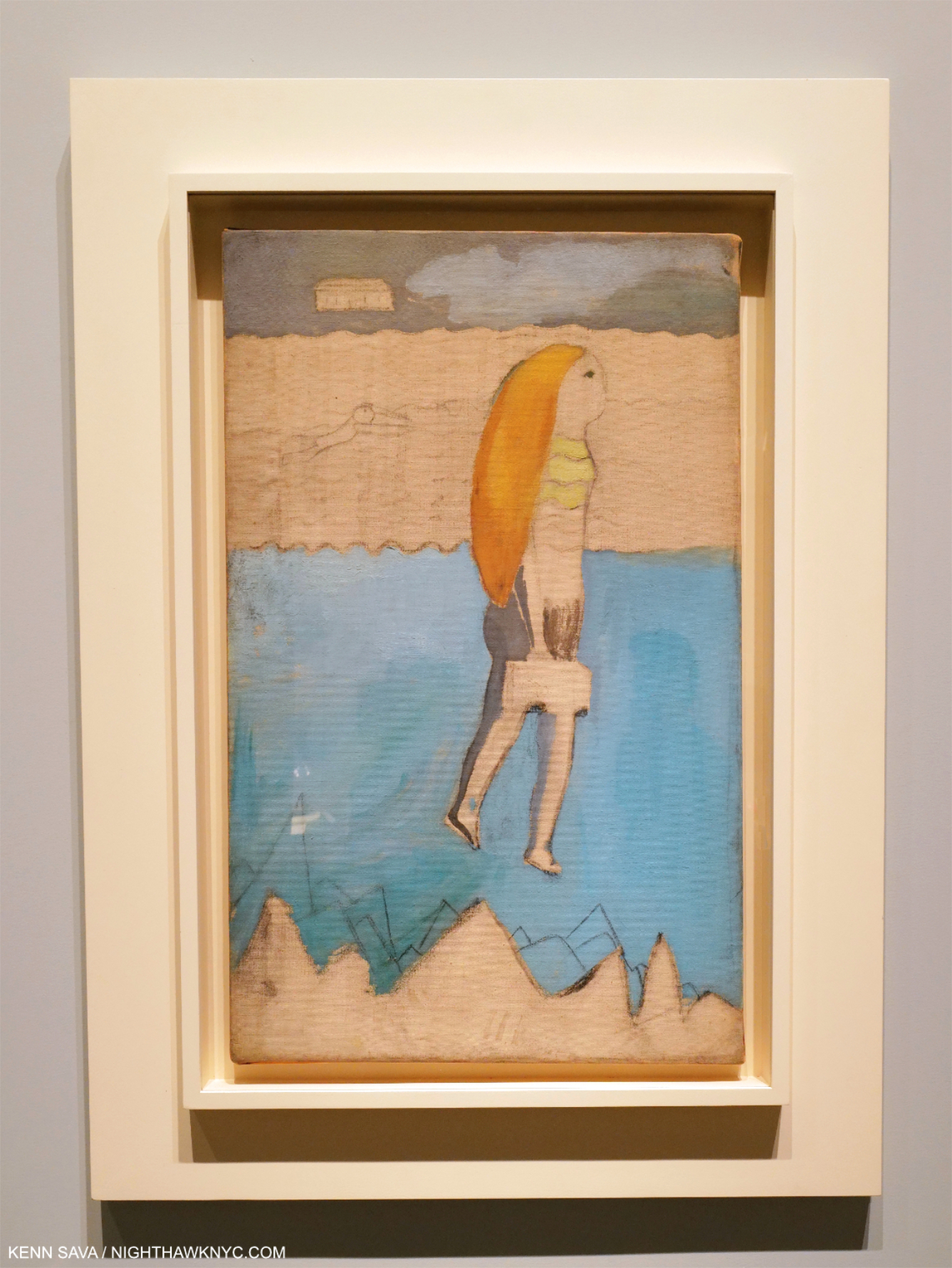
The Runaway Girl, 1938, Oil, charcoal and pencil on canvas. After marrying in Paris, Louise moved to NYC. She came to feel guilt about her sudden departure. Here, she shows herself, with long hair as usual, suitcase in hand, with symbolic references to what she left behind in the background as she floats over jagged rocks, implying a difficult path.
“The Runaway Girl who never grew up…
I do not need a safety net,
Breakfast, big lunch or afternoon snack
I do not need any visitors, telephone
Calls or small mash notes…
I don’t need anything, I don’t confuse anything.
I can wait, I am not afraid. I am grown up.
Nothing is missing.”
Louise Bourgeois1
They’re also as open-ended, and each is autobiographical, beginning with The Runaway Girl, 1938, at the entrance. Beyond her guilt at running away was the pain she suffered discovering her father’s affair with Louise’s nanny- a dual betrayal. “Fear and pain were her main subjects,” her friend, the Art historian Robert Storr said2.
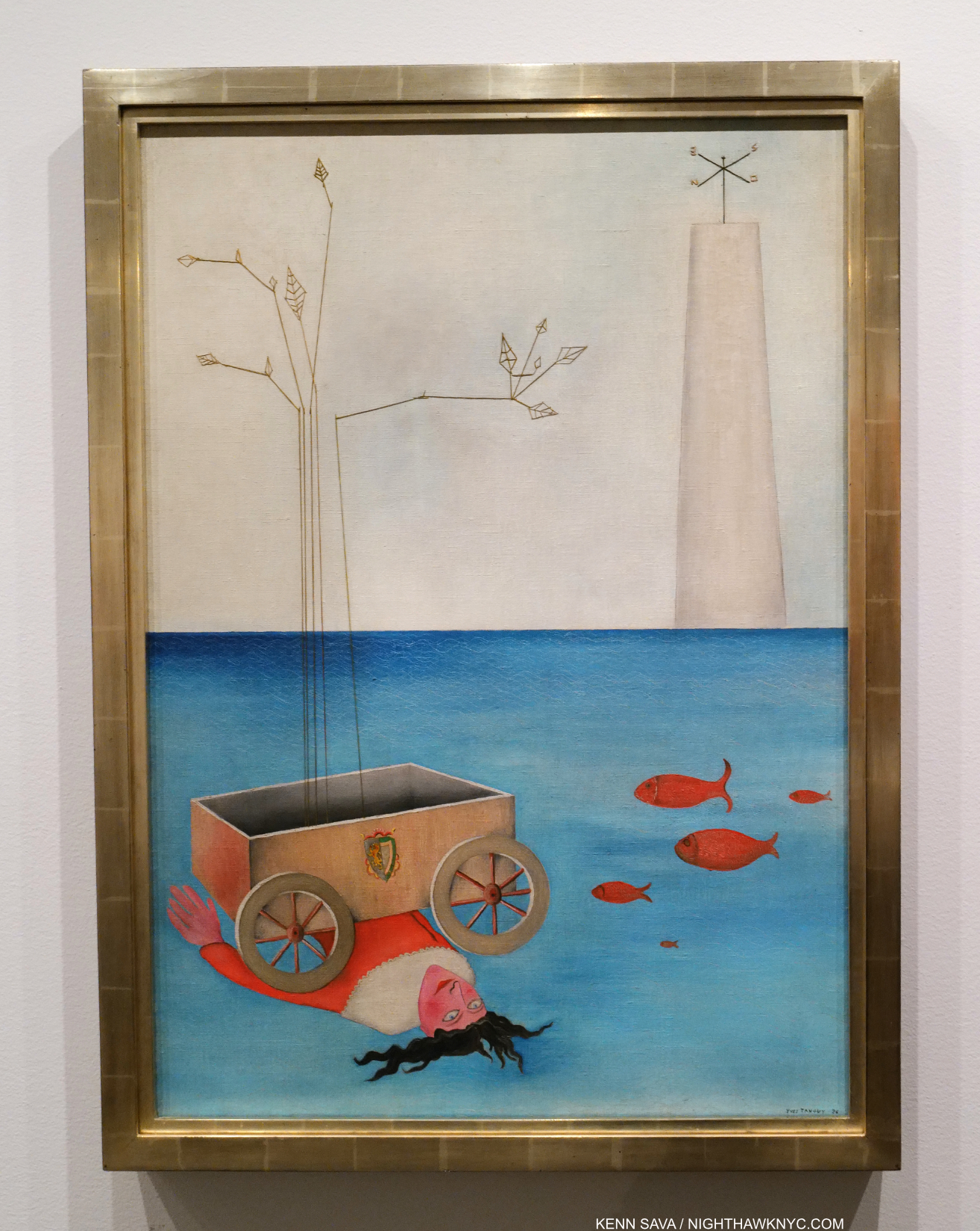
Yves Tanguy, Title Unknown, 1926, Oil on canvas with string and collage. This is about as close as I’ve come in looking for a predecessor to Louise Bourgeois’ Paintings. Seen at The Met. Not in the show.
Some Art historians mention Surrealism as a possible influence on Ms. Bourgeois’s Paintings. Personally, I don’t see it. The Surrealists largely Painted fantasies, dreams and nightmares. Ms. Bourgeois works from her life and her own experiences, even when they take imaginary forms. I don’t consider this Surrealism. The same was said about Chagall, who also worked largely from his own life experiences. Frankly, like Chagall’s, her Paintings don’t remind me of anyone else’s. The great Charlotte Salomon Painted her life, too, at the same moment Louise Bourgeois was (until Ms. Solomon was murdered by the Nazis in 1943). Ms Salomon’s work seems closer to Chagall’s, stylistically, than to Louise Bourgeois’s Paintings to me. Given all that went on in Art just in the first half of the 20th century, creating a unique style is pretty remarkable, and, along with the stellar quality of the work, begin the list of things she should be given more credit for. A good number of these pieces linger in my mind weeks after the show closed- like a person you encounter who has much on his or her mind and much to say, but didn’t say it out loud at the time.
Louise was born on Christmas, 1911, left France for NYC in 1938, and lived many of her final years until her passing in 2010 around the corner from where I live now, unbeknownst to me.

For much of the last part of her life, Louise lived and worked in the two buildings to the immediate left of the red brick. They now are home to her Foundation. Late in her life Louise moved her bedroom to the first floor, behind one of the two windows, because the stairs were too difficult.
I might have passed her on the street. After she passed away, her home became the HQ of her Easton Foundation, which owns most of the work on display. (Take a look inside here.) Walking by it now, except for some intricate grating on the front door and windows (which was there when she was), it looks just like every other townhouse on the street. Given how unique all her Art is, this is somewhat incongruous.
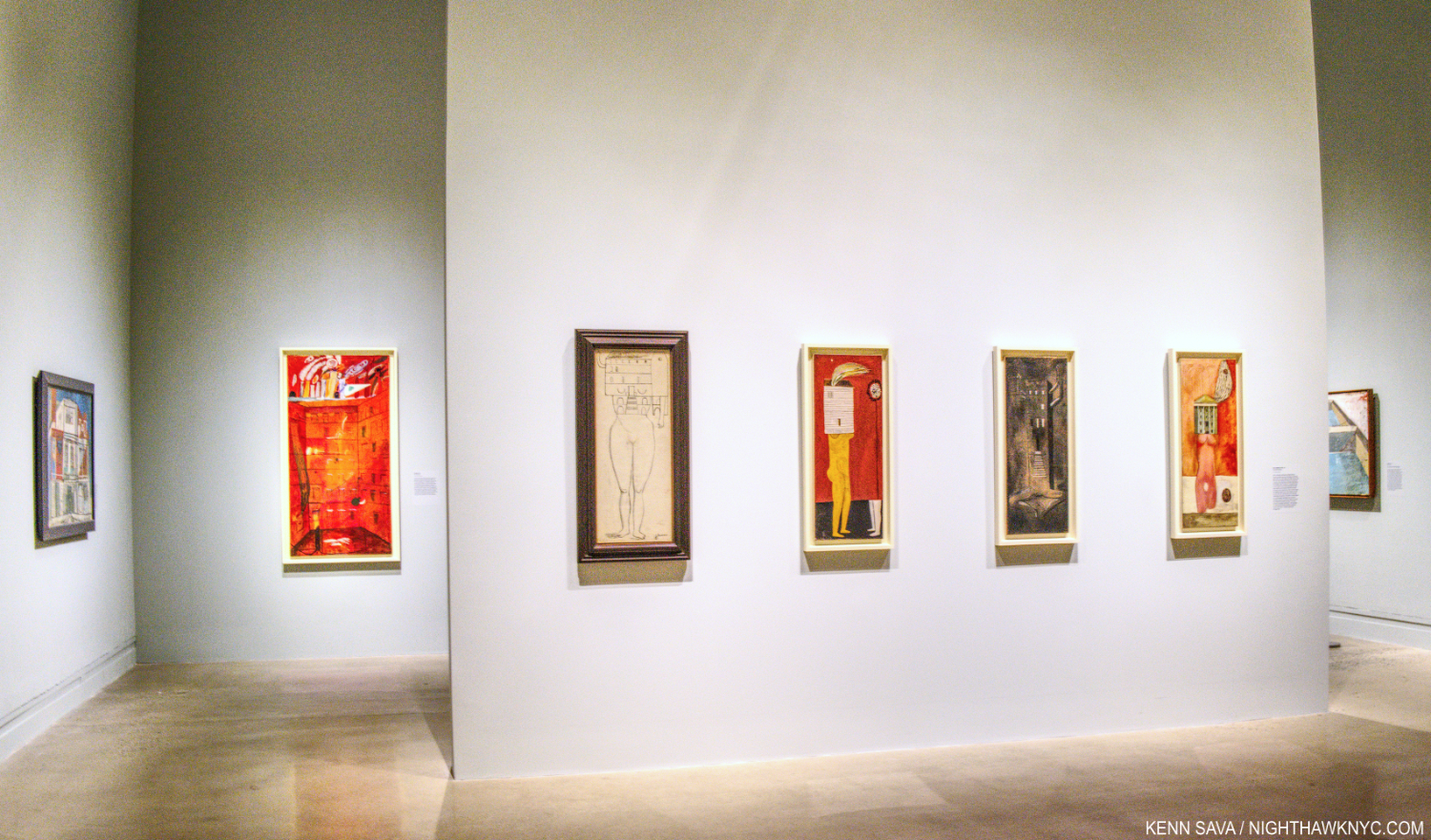
Themes recur in Louise Bourgeois’s work. One is buildings as seen in each of these pieces. Her series of 4 canvases titled Femme Maison, 1946-7, Oil and ink on linen, center, will be addressed next. Later, buildings appear without human parts (as in both works to the far left), and they are stand-ins for humans. One building stands for a lonely person. Two separate buildings stands for an estranged couple. Three buildings is a triangle. These would seem to be influenced and inspired by life in the tall building jungle that was, and is, Manhattan, home of “Manhattanhenge” as Neil deGrasse Tyson calls it.
Louise Bourgeois’s Art was largely motivated by “her emotional struggles,” as former MoMA curator and Louise Bourgeois researcher Deborah Wye says, “This was something that plagued her for her whole life. And she said by making a work of art she could make these emotions tangible. Try to understand them. Try to cope with them. Try to hack away at them. And she actually called her art ‘her guarantee of sanity3.’”
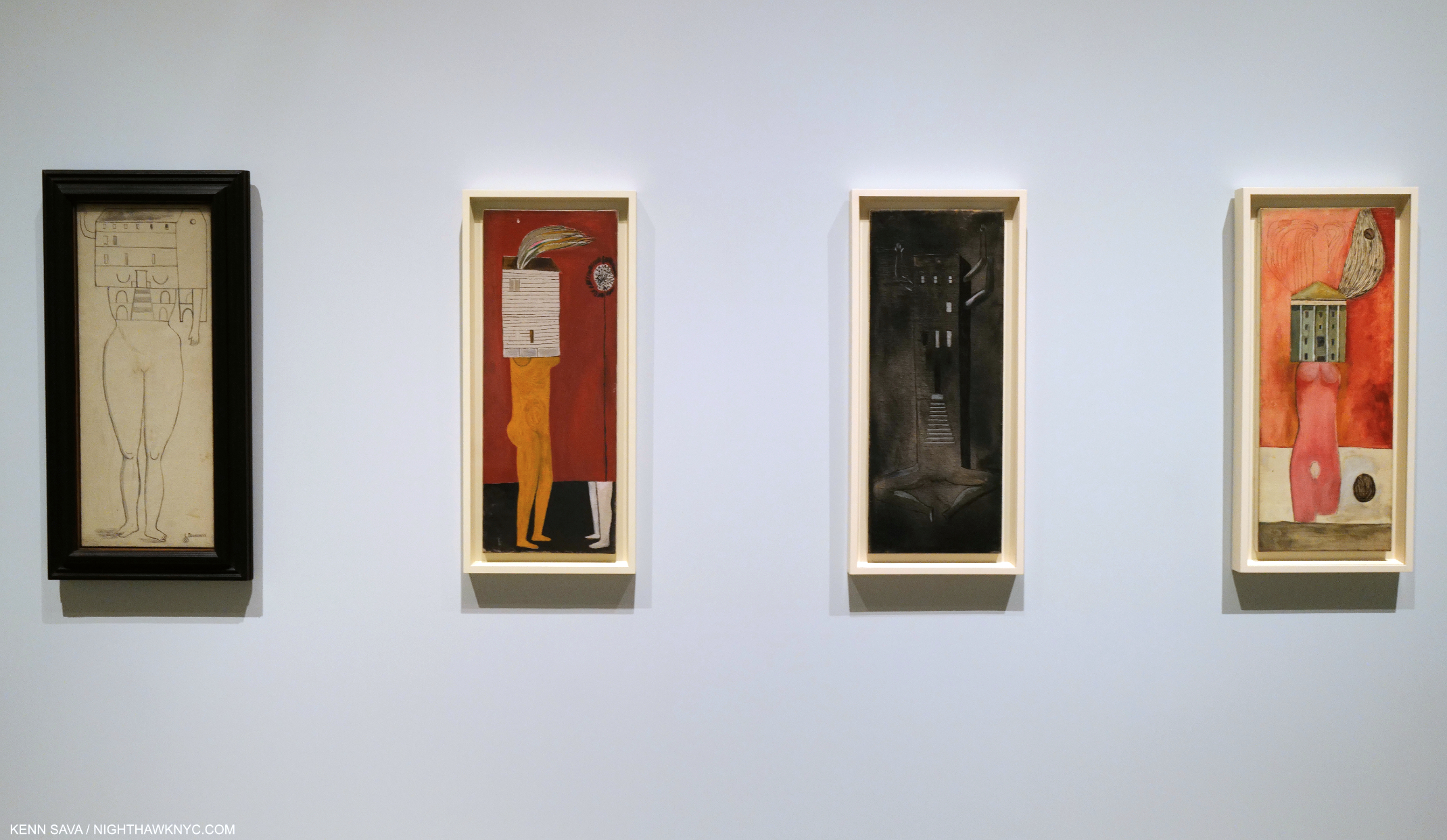
Femme Maison, 1946-7, Oil and ink on linen, occupy the central position in the show, as I show in the prior picture. Femme Maison translates as “woman house,” or “housewife.” In each, a woman is confined within a building, which references a part of the Artist’s past, as her role in society confined her. All 4 figures are naked from the waist down, exposing them to the viewer’s gaze. Her trademark long hair is seen in two. A stunning and singular expression, times 4, of a woman trapped in her role in Art history, at least that known to me.
In what appears to me to be one of the final shows, and perhaps the final gallery show, mounted under Sheena Wagstaff’s tenure as Chair of The Met’s Modern & Contemporary Department, Louise Bourgeois: Paintings is quietly spectacular. The feeling of discovering something “new,”exciting, and previously unknown, when you walk in is quickly reinforced by the variety, and similarities, in her work. Themes emerge. The mystery remains.
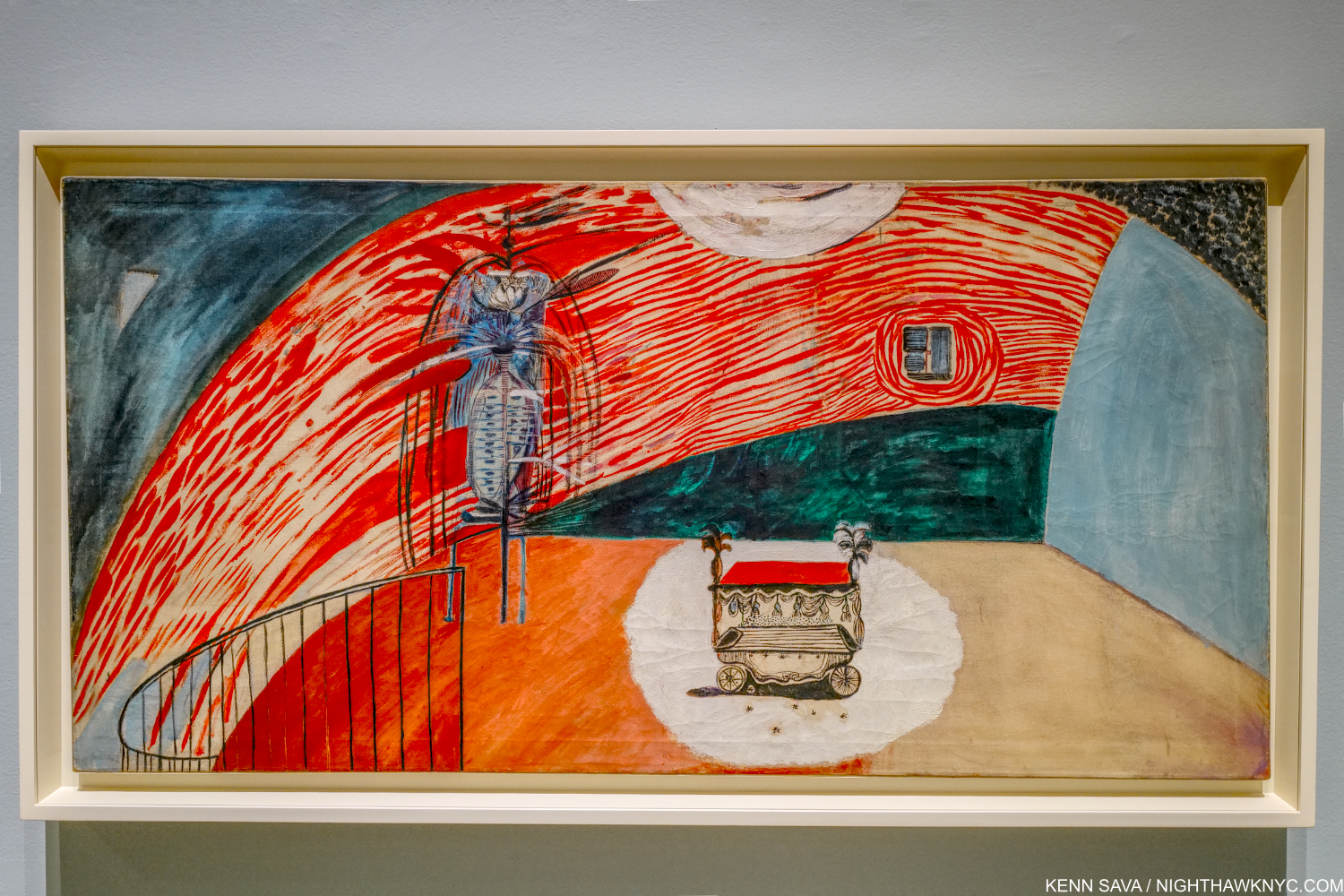
“1932,” 1947, Oil on canvas. 1932 was the year Louise’s mother passed away after a long illness. They had been very close, with Louise often serving as her mother’s nurse. Her passing precipitated the first of the Artist’s two suicide attempts, and recurring bouts of depression. According to the wall card, the figure to the left was a “more realistically rendered self-portrait in earlier stages.” Its closed room, its railing, the “anguished(?)” lone figure, and central spotlight, remind me of the settings of many of Francis Bacon’s Paintings that would coincidentally begin at this very moment.
I missed what looks to have been a terrific show at the Jewish Museum, Louise Bourgeois, Freud’s Daughter, due to the pandemic, but did see Louise Bourgeois: Holograms show at Cheim & Read and MoMA’s Louise Bourgeois: An Unfolding Portrait excellent show of her Prints and book work, both in 2017. The variety of the work on view in these four shows (thanks to the Freud’s Daughter catalog) is extraordinary, and all of it is compelling.
Her Paintings were done in the FIRST decade of the SEVEN she eventually spent here. In the end, Louise Bourgeois lived, and worked, in New York City for an unheard of 72 years! In my book, she is what I call an “Ultimate New Yorker,” i.e. someone who has defined both what it is to be a New Yorker and who helped shape NYC in the Arts in my opinion, along with Patti Smith, Miles Davis, and others. Though she professes that these Paintings are “American, from New York,” in the quote above, I don’t sense much of the City in them beyond those that depict apartment buildings that look like those found here. They are more about a person living in the City. Buildings, though, are a metaphor for persons, as I said.
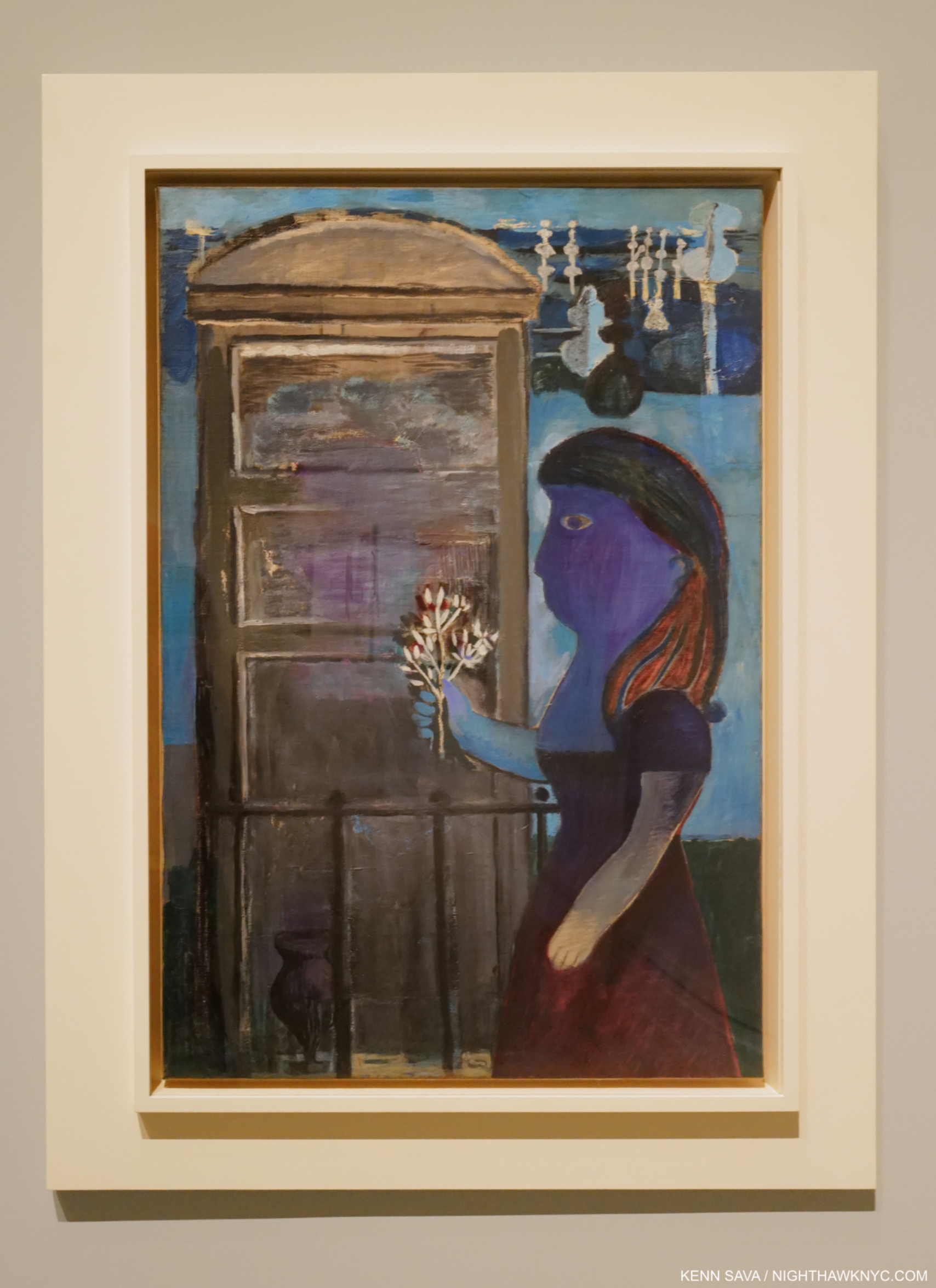
Reparation, 1945, Oil on canvas. Though the Artist shows herself as a girl bringing flowers to her family’s cemetery plot, there is no name on the sparsely Painted stone. So it could reference her mother’s or grandmother’s passing, or in a larger sense, mourn those she left behind.
In each of these de facto “Self-Portraits,” the Artist lays herself and her feelings daringly bare. While her Art didn’t “solve” her problems, it helped. Seeing them now, these Paintings may prove to be a touchstone for viewers, now and in the future, as I expect them to continue to rise in stature. Stylistically, they blend abstraction and realism selectively, often in the same piece. Finally, they also provide fascinating background material for pondering her Sculpture and Prints that followed for the rest of her career.
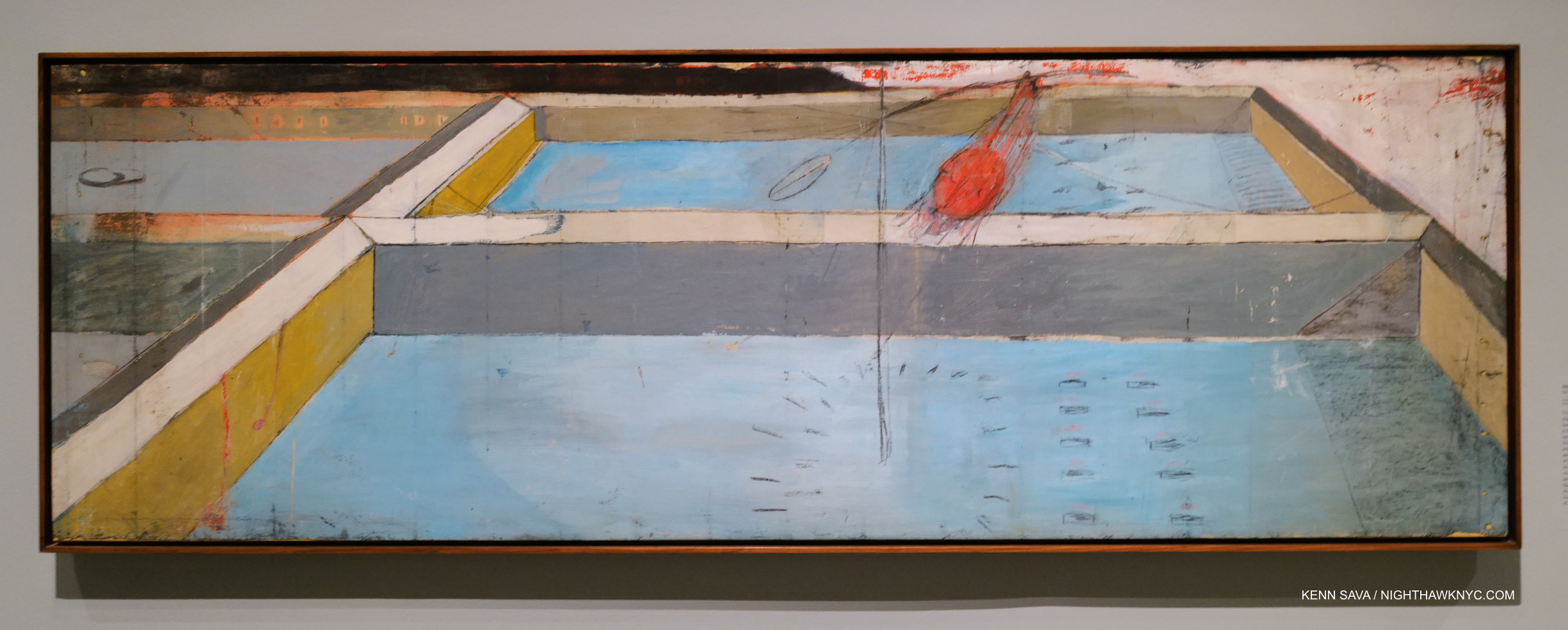
Untitled, 1946-7, Oil on canvas. World War II, guilt, and here, fear, are subtexts in many of her Paintings. I should say I see fear in this piece, which is one of a few pieces that depict this building in the show, the others having an unstated dread and menace to them as well, perhaps part of her agoraphobia.
Thinking about this show, I couldn’t help but recall the case of Jack Whitten, who had a long career as an important Painter, only to leave a comparably important, large body of unknown Sculpture behind when he passed in 2018. Louise Bourgeois’ Paintings were shown and known, but it was early in her career, before she attained the status her Sculpture brought her. Both bodies of unknown and lesser known work were shown by Sheena Wagstaff in two of the more fascinating and memorable shows under her remarkable tenure. I imagine that this show may have been originally planned to be installed at The Met Breuer before its sudden closing.
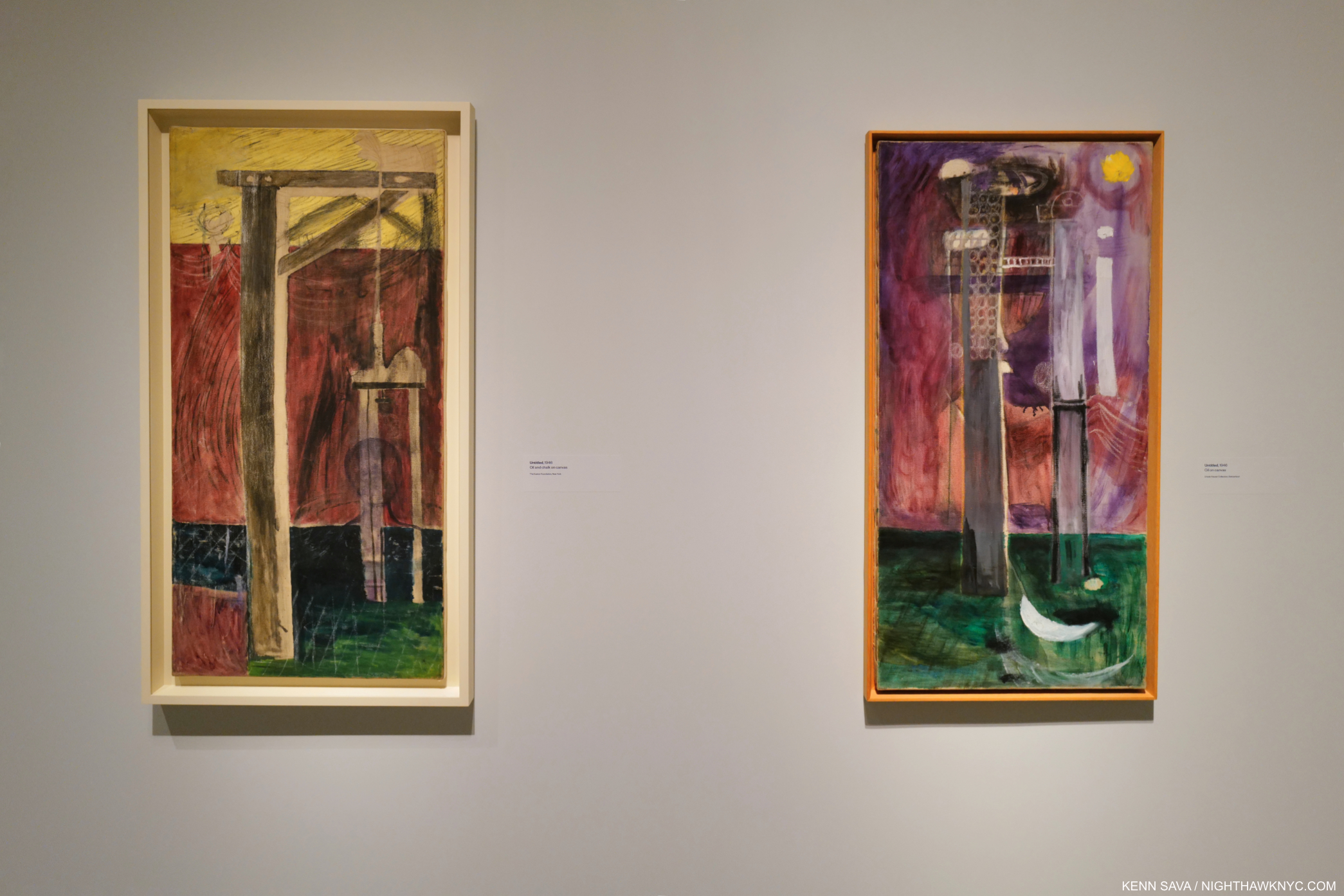
Untitled, Oil on canvas, left, Untitled, Oil and chalk on canvas, right, both 1946. During one visit, another visitor asked me if the work on the left was a guillotine.
In the Press Release announcing the show, Sheena Wagstaff said about it, “To date, it is not widely known that Bourgeois was active as a painter in New York for ten years, a period when the city became a vital international hub amidst critical debates around painting. This exhibition reveals the foundational DNA of the artist’s development of themes that would subsequently burgeon into three dimensions, and preoccupy her for the remainder of her long career.”
All of this was “just” preliminary to her long career as a Sculptor, and work in other mediums. Her late Paintings, like these two, begin to look like her Sculpture. Sculpture, she said, enabled her to see what she was feeling in three dimensions. Deborah Wye said, “She said there was no rivalry between the mediums for her in which she worked. She said she just said the same thing but in different ways4”
And so, “Painting” as painting was over for Ms. Bourgeois.
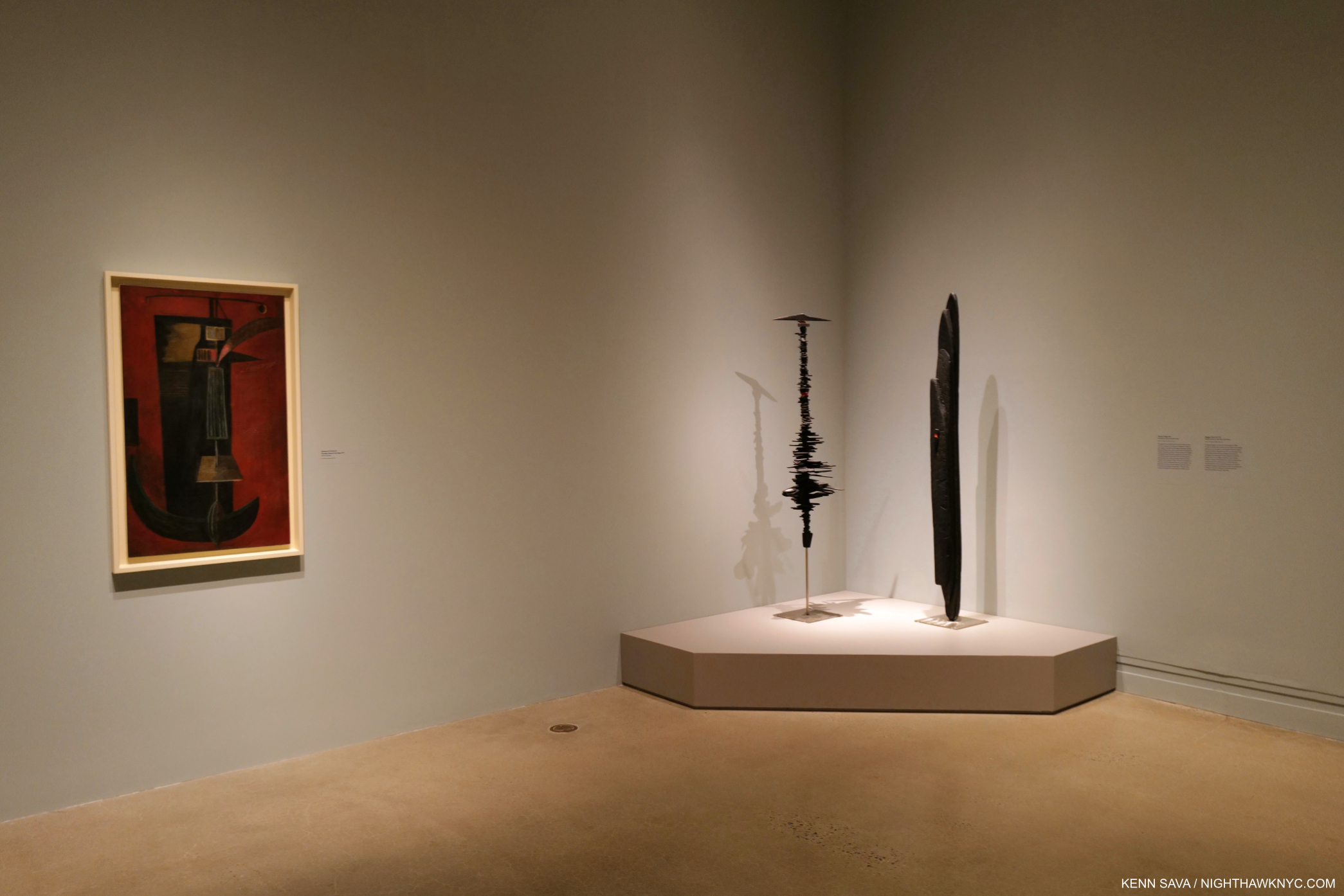
Moving from Painting to Sculpture. Femme Volage, 1951 left, and Dagger Child, 1947-9, both Painted wood and stainless steel. Woman in the Process of Placing a Beam in her Bag, 1949, Oil on canvas, far left.
Being a self-professed and long-standing Paintings guy I really wish Louise had kept on Painting in addition to Sculpting, but her Muse carried her to 3 dimensions. Some Prints on view in An Unfolding Portrait involve brush work, continuing the thread in a sense. She made Prints for the rest of her life. Her Prints were first the subject of a 1995 MoMA show and their 2017 Unfolding Portrait show, which lives on in its wonderful catalog. Deborah Wye, then a MoMA curator who devoted a large part of her career to studying Louise Bourgeois’s output, curated both Print shows as well the Louise Bourgeois Retrospective at MoMA in 1982, the very first show of its kind given to a woman Artist at MoMA5. She has also created a website of Ms. Bourgeios’s complete prints, which may be seen here.
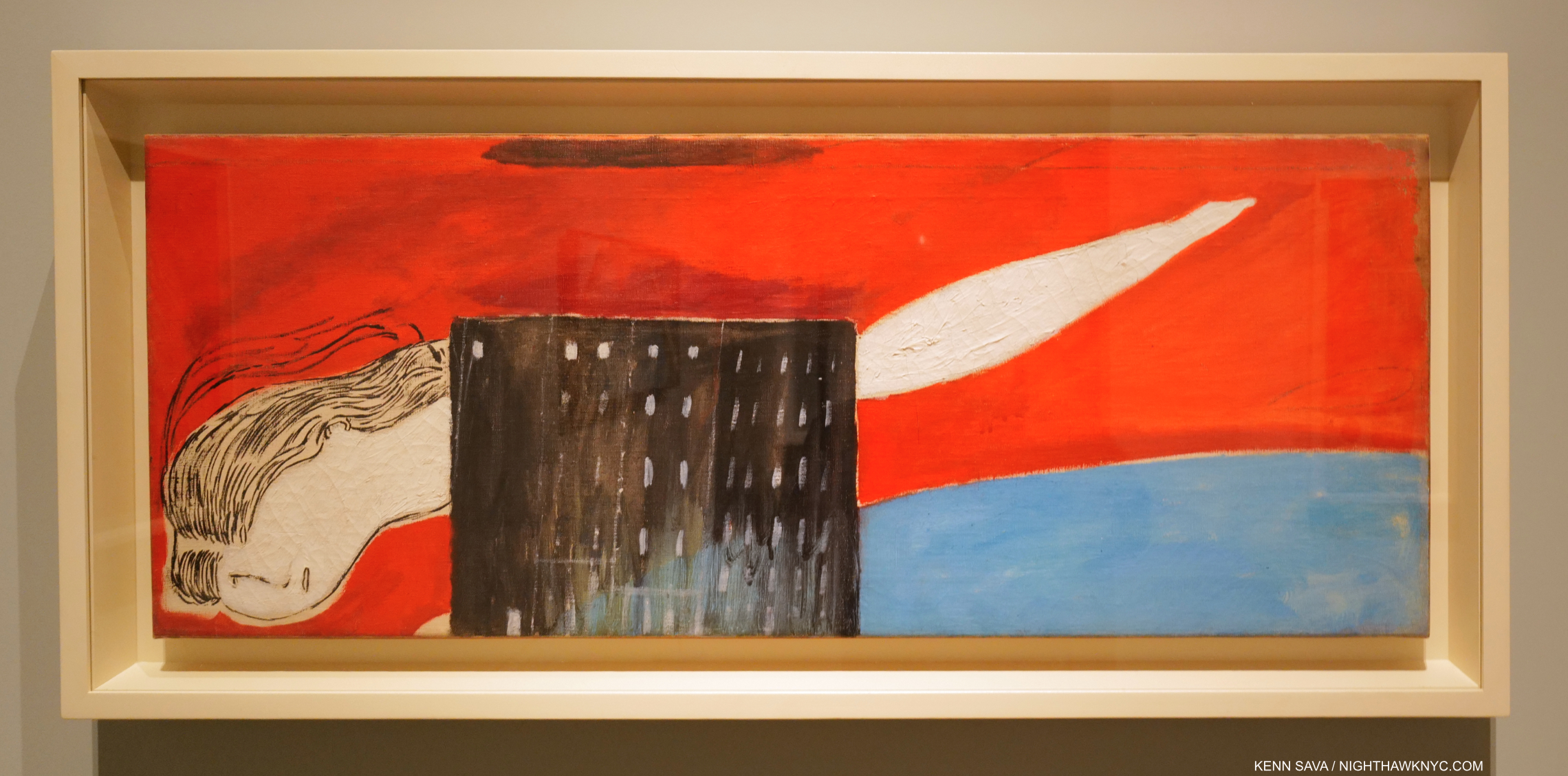
Fallen Woman (Femme Maison), 1946-7, Oil on canvas. As in almost all of her Paintings, her past and present experiences and the resulting guilt, angst and duality are transformed into wonderfully succinct compositions. “The woman depicted here, visually cut in two by a dark building, embodies the rejection, fragmentation, and abandonment that the artist experienced and feared…,” per the wall card.
“Why have there been no great female Artists?,” is the title of a book, and a question I’ve heard many times over the years. There are, and have been. MANY of them.
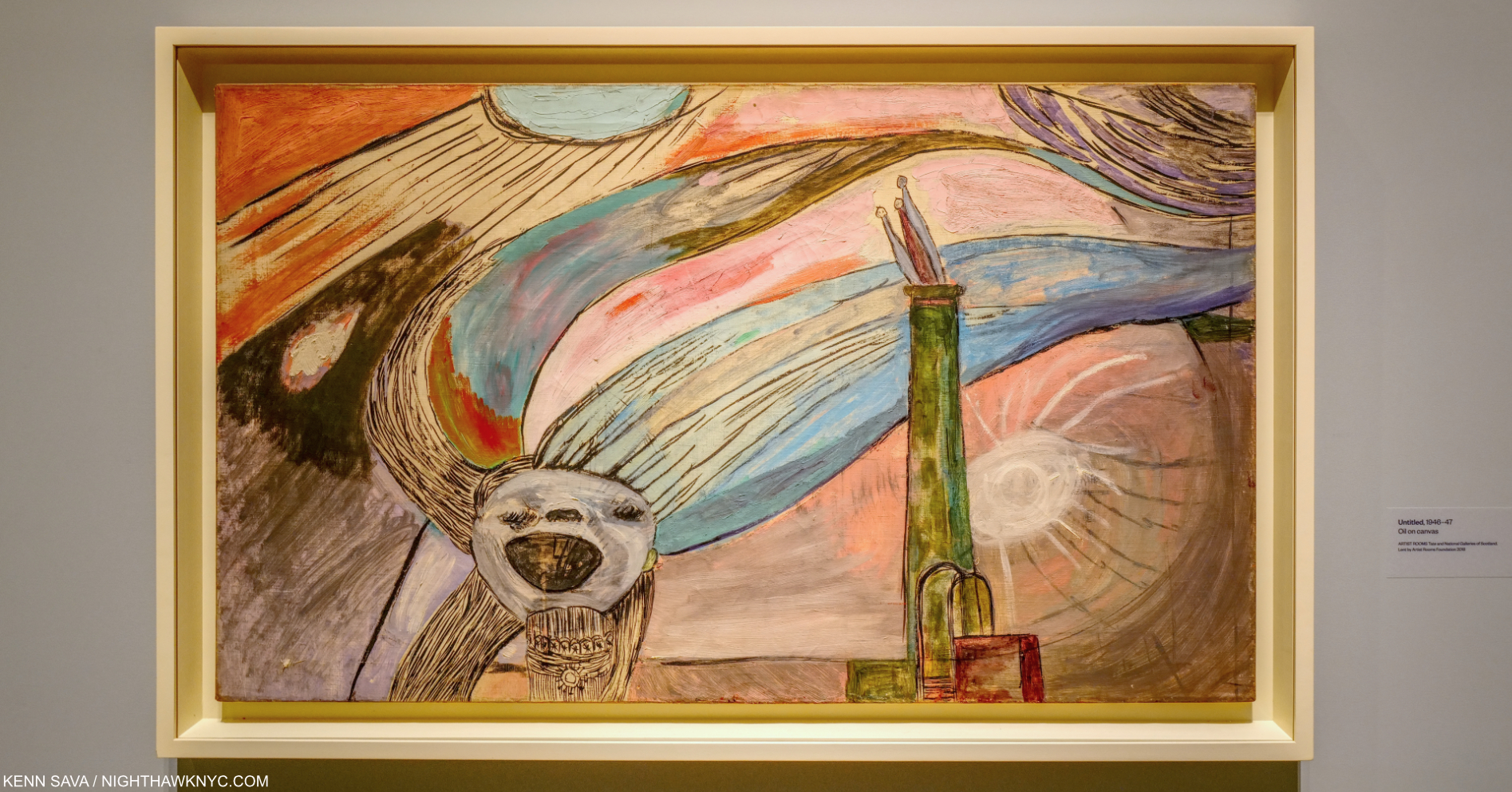
Untitled, 1946-7, Oil on canvas. Bacon, de Chirico, Miro, Chagall come to mind when I see this, but none of them combined these elements into one piece before Louise Bourgeois did here in what may be her most iconic Painting, which, again, features her long hair.
The history of Art has been largely written by men, museum collections largely curated by men, to this point. It’s only been this century that that has begun to change. It’s really only since the opening of the global Art market in the late 1980s and the accompanying relentless search for Art of value- anywhere by anyone, that more women Artist have begun to get the attention so many have stood up and demanded for so long. There’s still a long road ahead.
Beyond her iconic Sculpture, her Prints that I saw at MoMA in 2017, her Holograms that I saw the same year, and her Installations, Louise Bourgeois created an important body of Paintings, one that deserves a special place of import among those created by women Artists in the 20th century, as well as by Artists, period. I believe that as time goes on, more and more people, who know her name, but not much about what she did beyond her Spiders, Louise Bourgeois will be an Artist who moves more and more into the mainstream. Her work is so diverse, extending across mediums, techniques and time, that it actually reminds me a bit of one of her contemporaries- Pablo Picasso. That’s said not as a comparison, but to mention the similarities and variety in their work. I would not be one bit surprised to see a Bourgeois/Picasso show one of these days. Maybe MoMA’s next Bourgeois-related show6 show ?
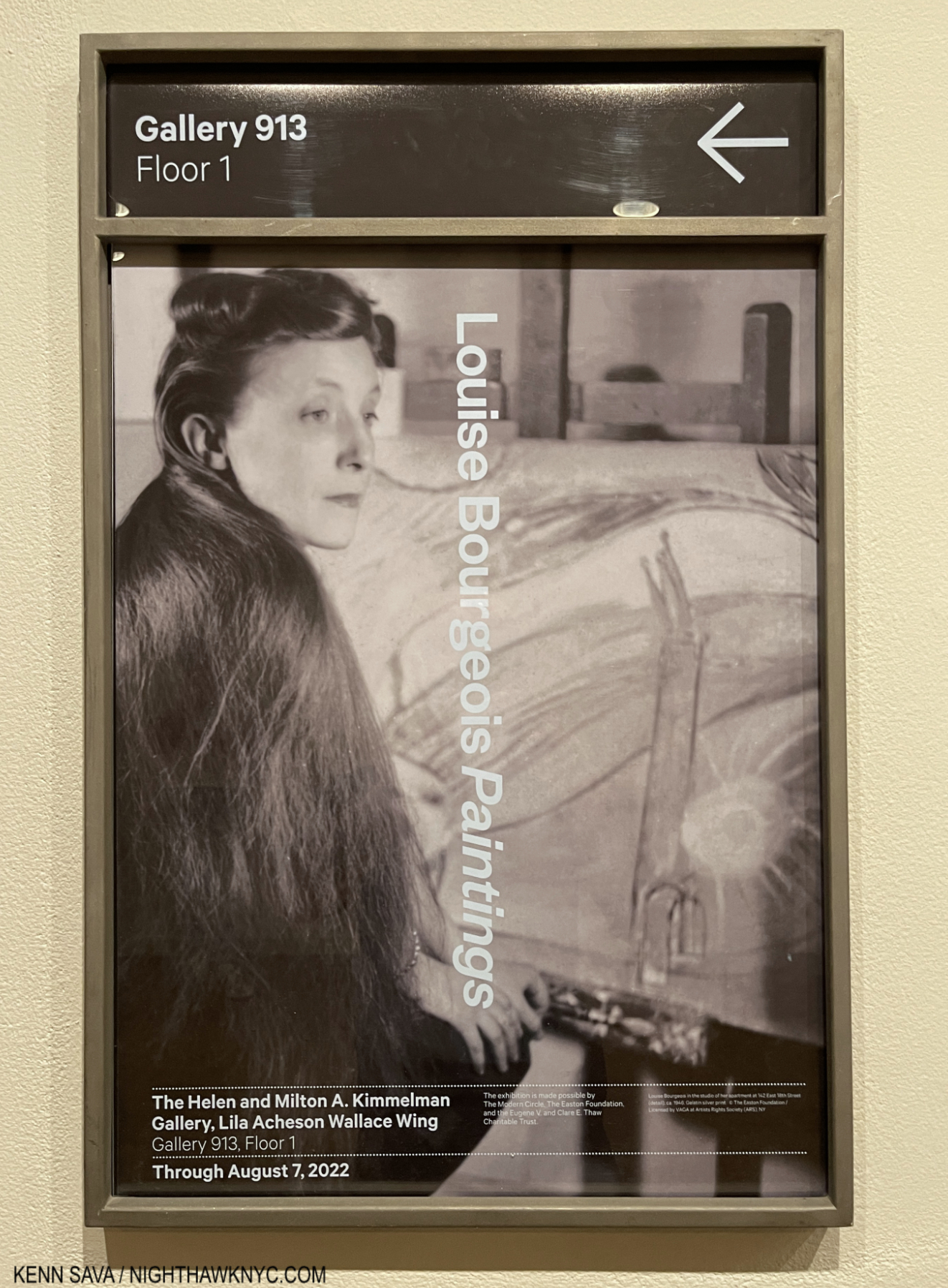
Louise Bourgeois, with her long hair, with Untitled, 1946-7, on her easel, circa 1946. It’s fascinating to compare what we can see of it in this Photo with the Painting we have, above.
Louise Bourgeois channeled her problems through unending creativity into an extraordinary and extraordinarily varied body of work. In spite of two suicide attempts7 earlier in her life, she overcame everything she lived through and felt about it to survive to be 98! There is much in that, as well as in her work, to inspire others. Jerry Gorovoy, her assistant and friend for 30 years, wrote in late 2010 after Louise’s death-
“Though her work was raw self-expression, it was also her way of understanding herself. It has a timeless dynamic that goes way beyond the visual: a profound capacity to awaken in others a heightened consciousness of what it is to be alive.”
Her ceaseless multi-dimensional creativity is up there with Picasso’s, Joan Miro’s, Marcel Duchamp’s and Robert Rauschenberg’s- the giants of endless invention in the 20th century. Add her name to that list if you haven’t. For her own creativity, as well as the quality and timelessness of her Art, it belongs there.
*- Soundtrack for this Piece is “Cherry-Coloured Funk” by Cocteau Twins from Heaven or Las Vegas, 1990.
NighthawkNYC.com has been entirely self-funded & ad-free for over 7 years, during which over 275 full length pieces have been published!
I can no longer fund it myself. More on why here.
If you’ve found it worthwhile, PLEASE donate to keep it online & ad-free below.
Thank you, Kenn.
Written & photographed by Kenn Sava for nighthawknyc.com unless otherwise credited.
To send comments, thoughts, feedback or propositions click here.
Click the white box on the upper right for the archives or to search them.
Subscribe to be notified of new Posts below. Your information will be used for no other purpose.
- Quoted in Louise Bourgeois, Askew and d’Offay, 2013, p.42. ↩
- Robert Storr, Ted Talks, 5/11/18 ↩
- Deborah Wye, MoMA Talk, 9/17/2017. ↩
- Deborah Wye, MoMA Talk, 9/17/2017. ↩
- In 2018, I published my own list of these in my Yoko Ono piece, since there is no “official” list- still! I wonder why. ↩
- Update 9/2/22- Since writing those words I’ve discovered a gallery show, Louise Bourgeois – Pablo Picasso: Anatomies of Desire, was held at Hauser & Wirth, Zurich, in 2019. From seeing the catalog, it sure looks like it’s not only an idea who’s time has come, but there is more to mine in it. ↩
- per The Met’s wall card for “1932.” I can find no other reference to more than one attempt. ↩

